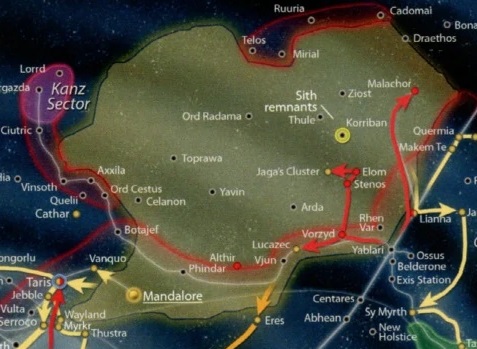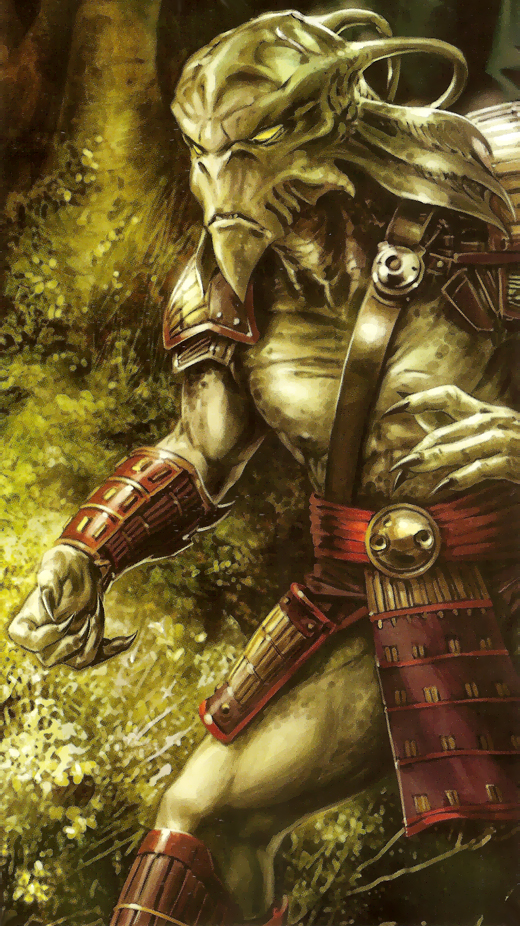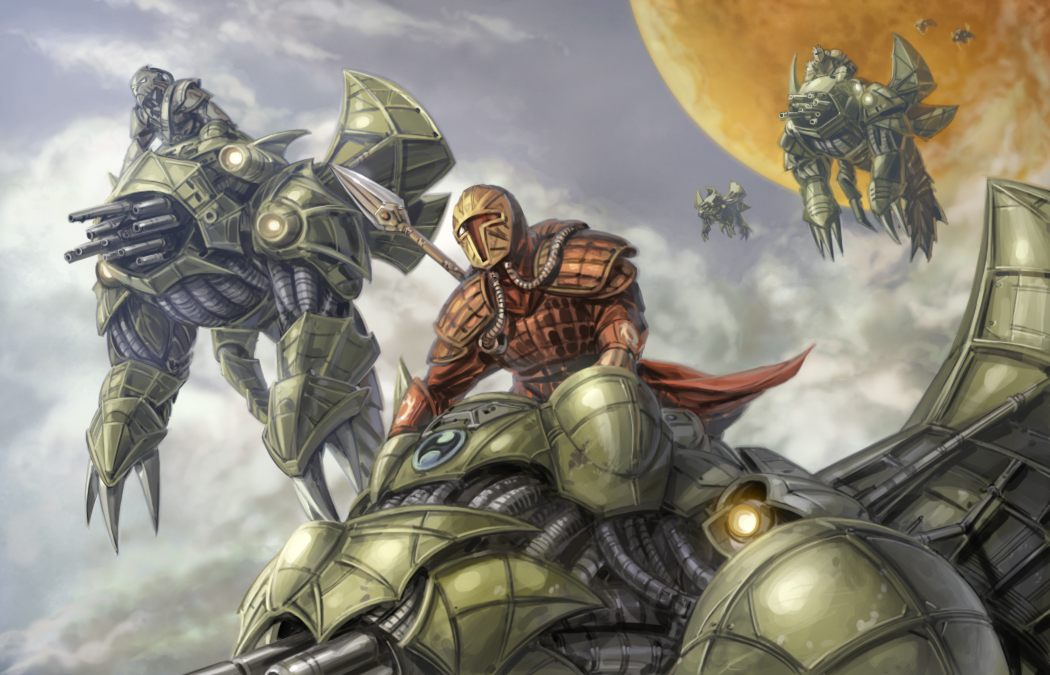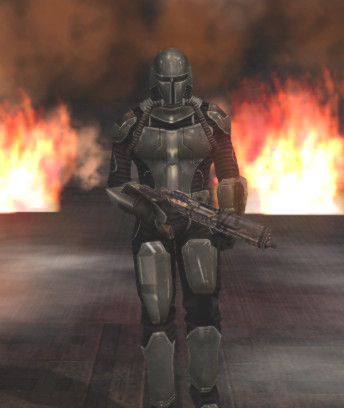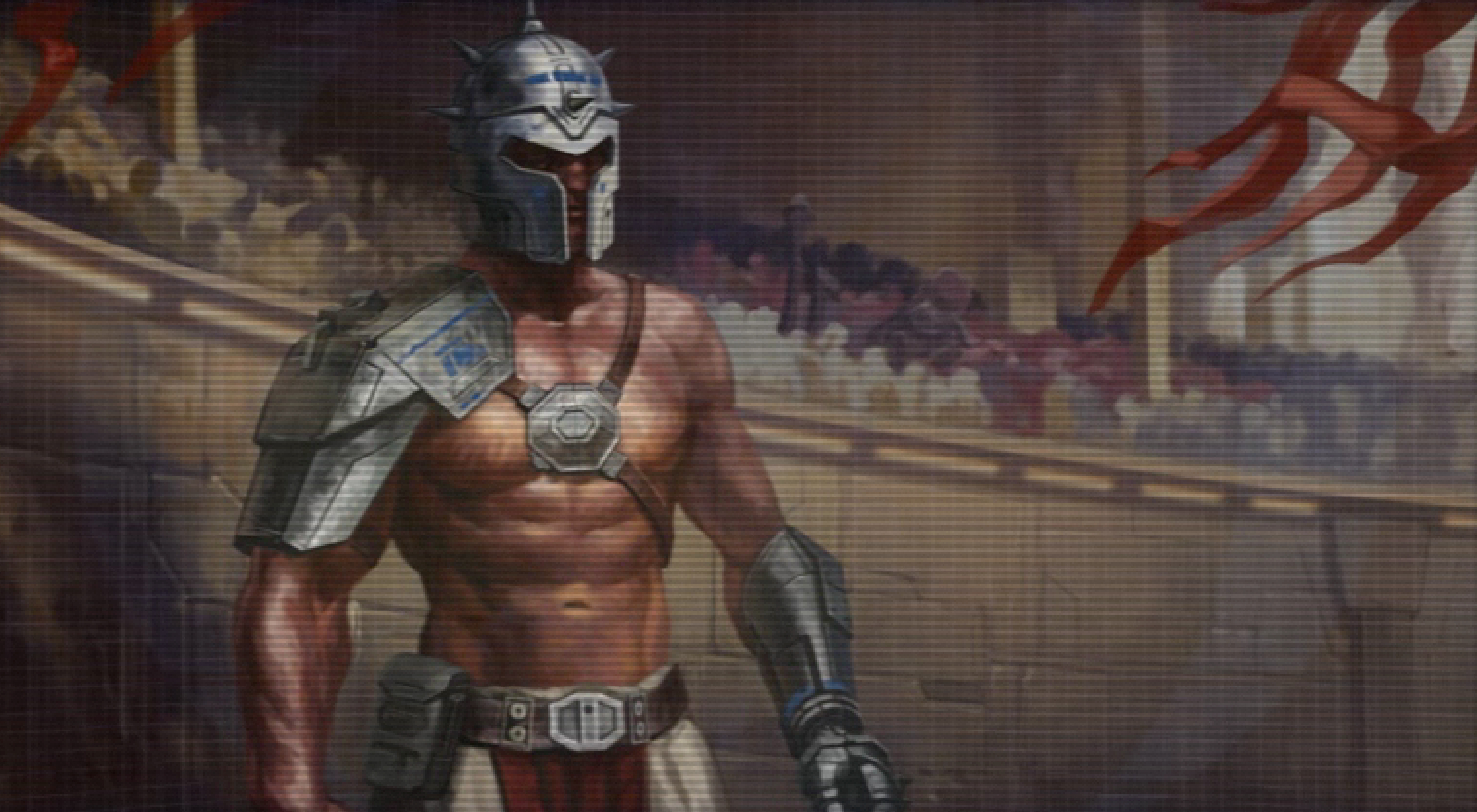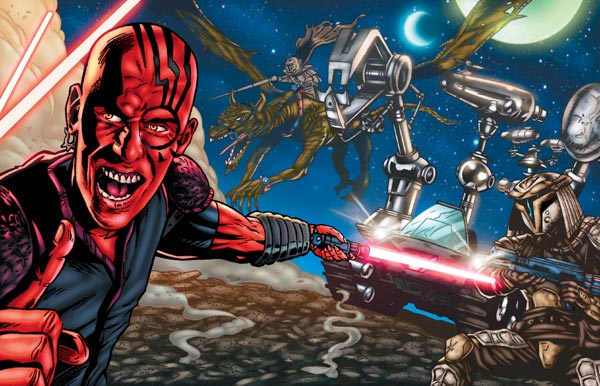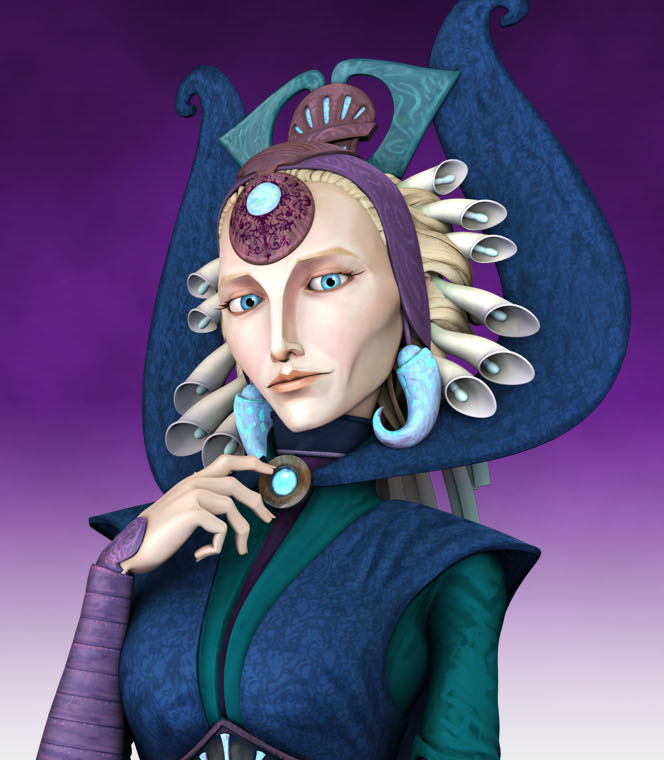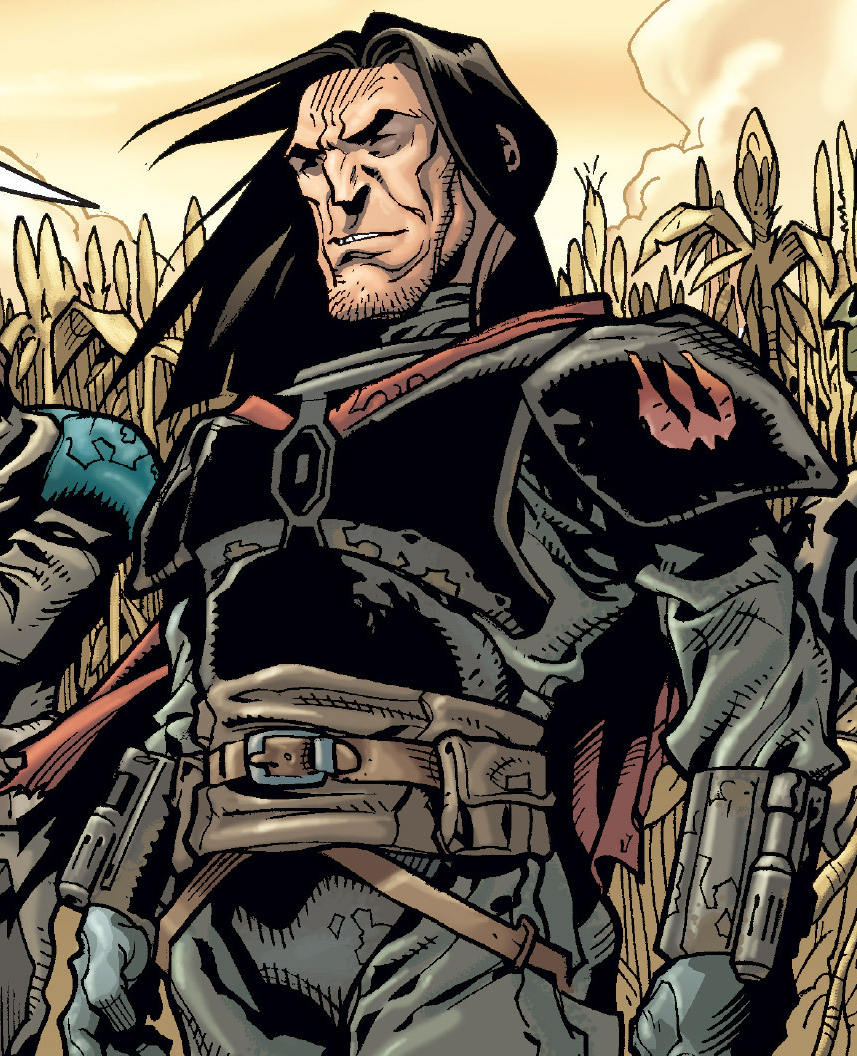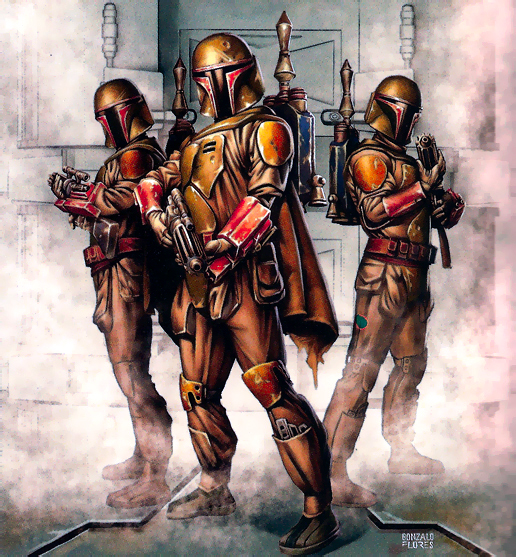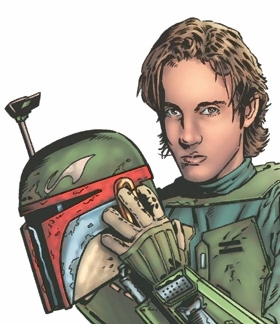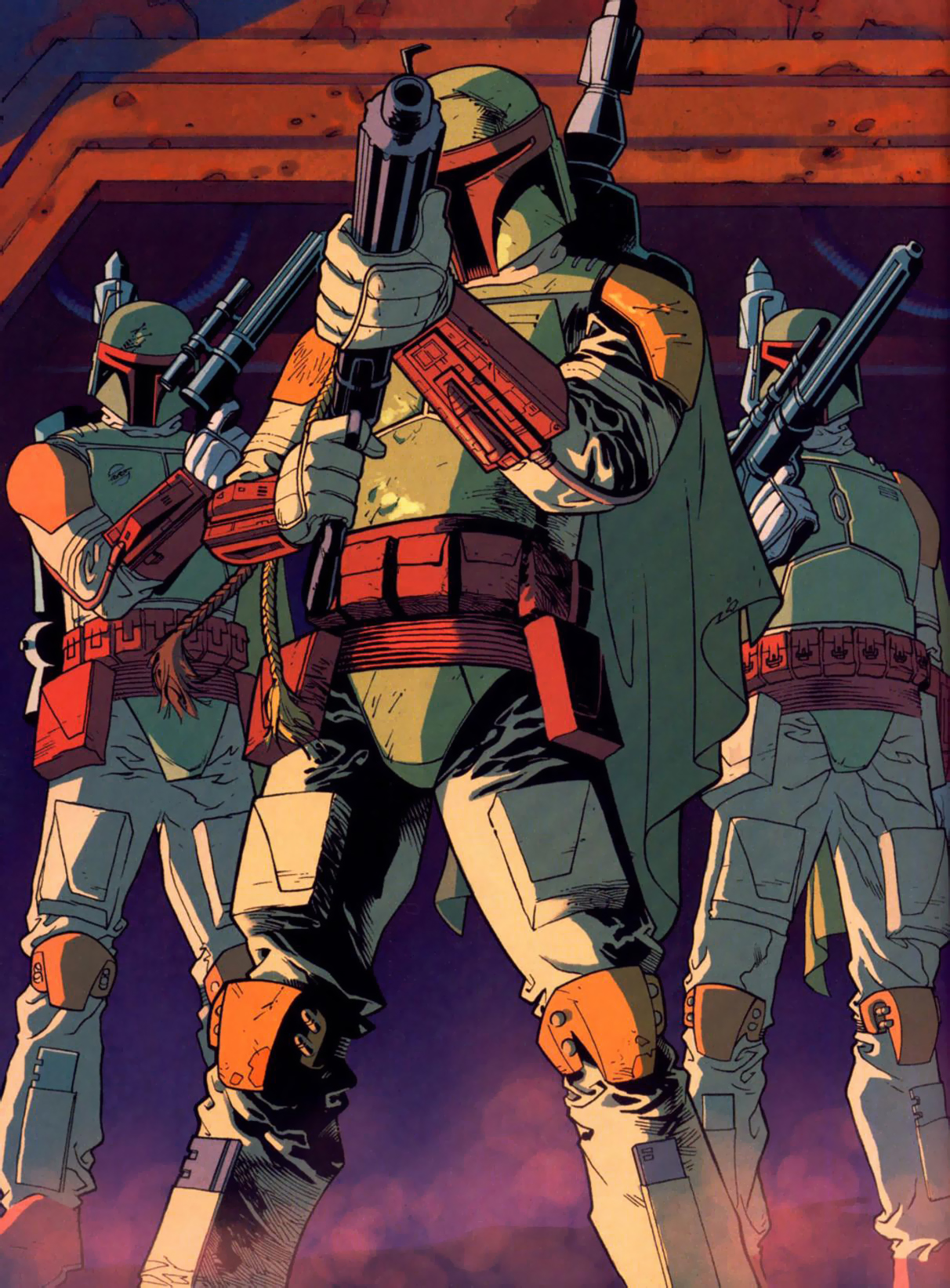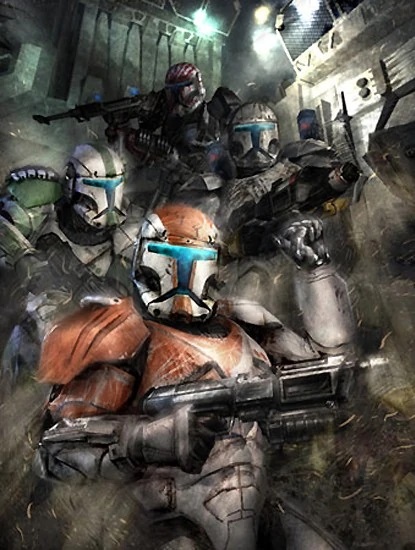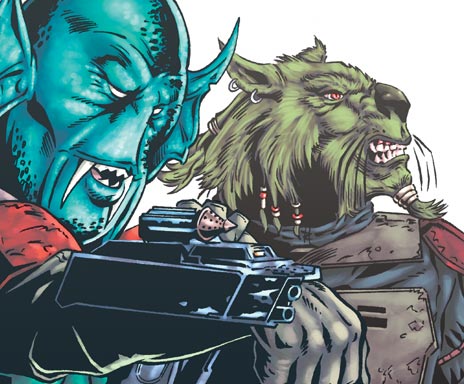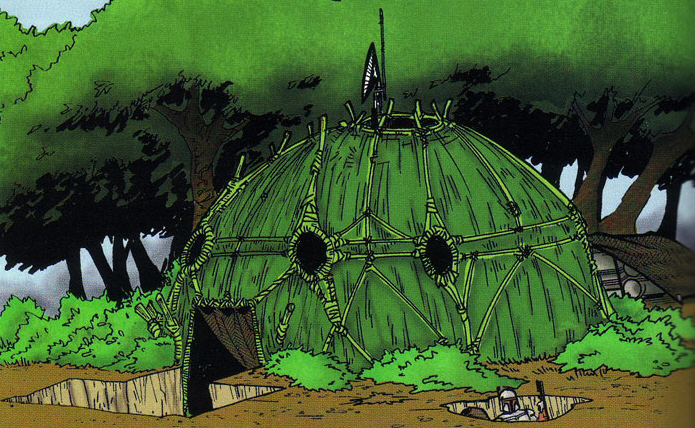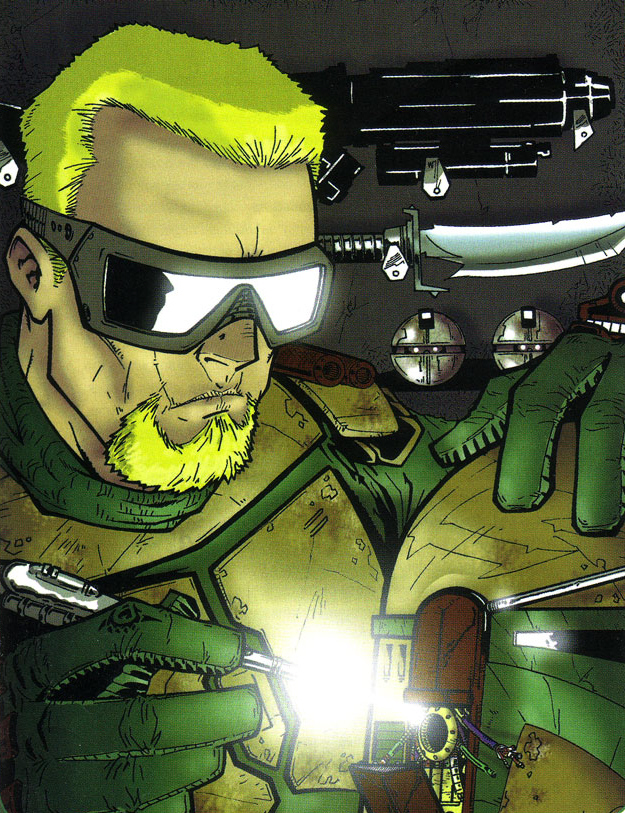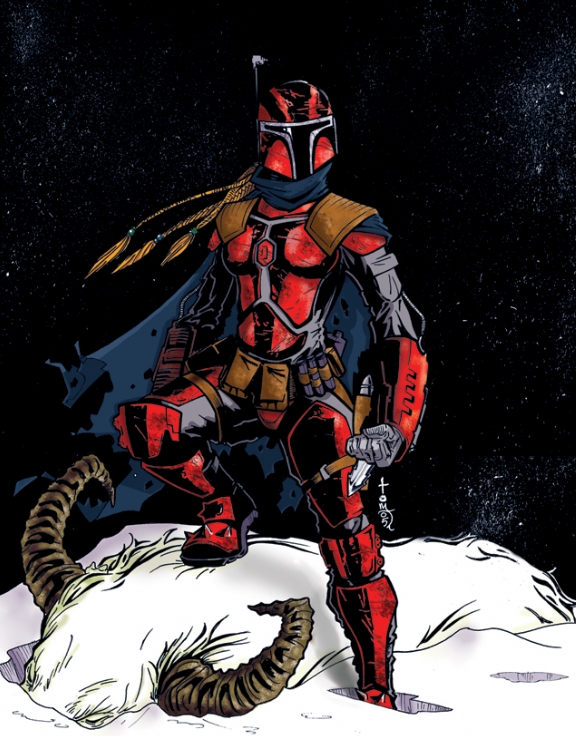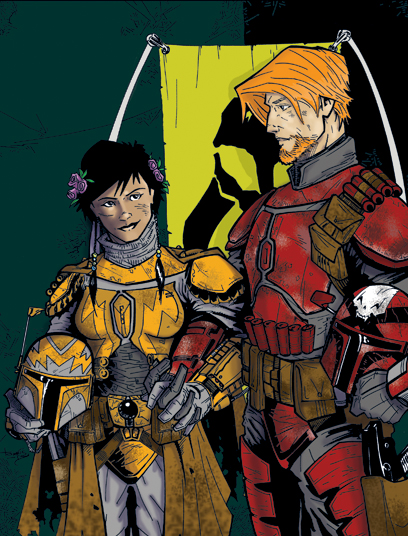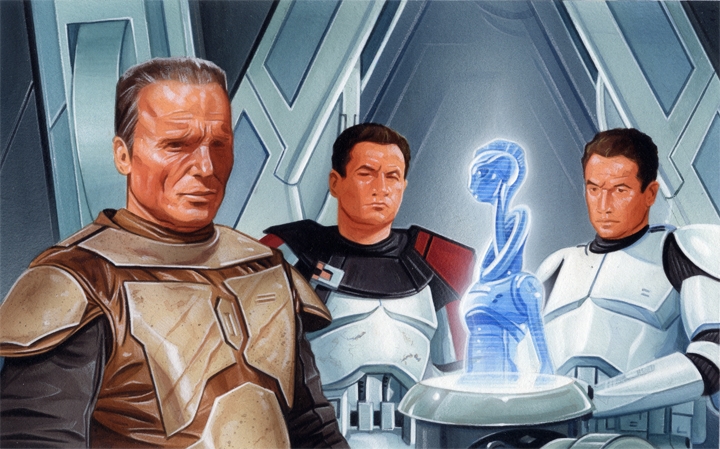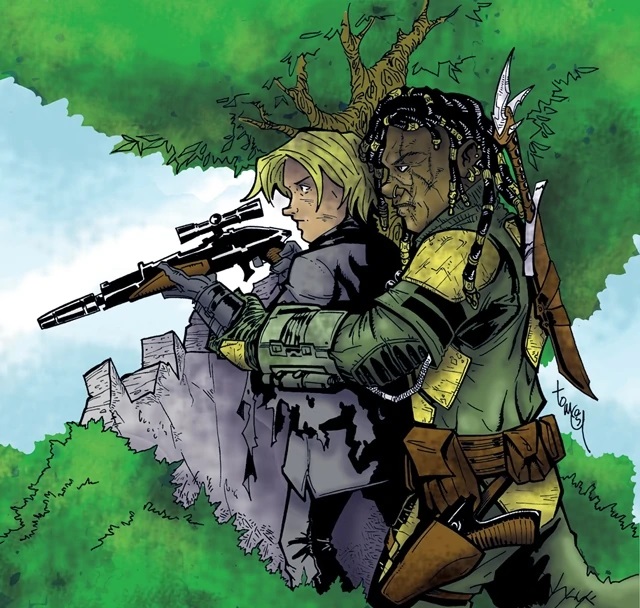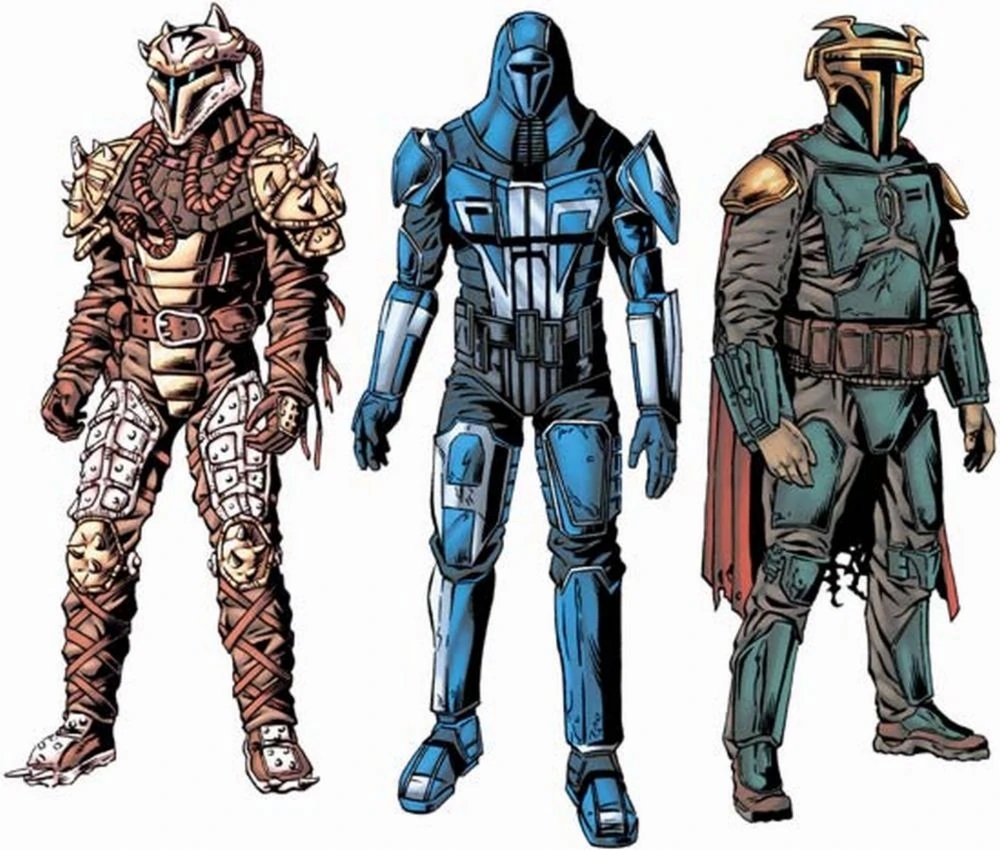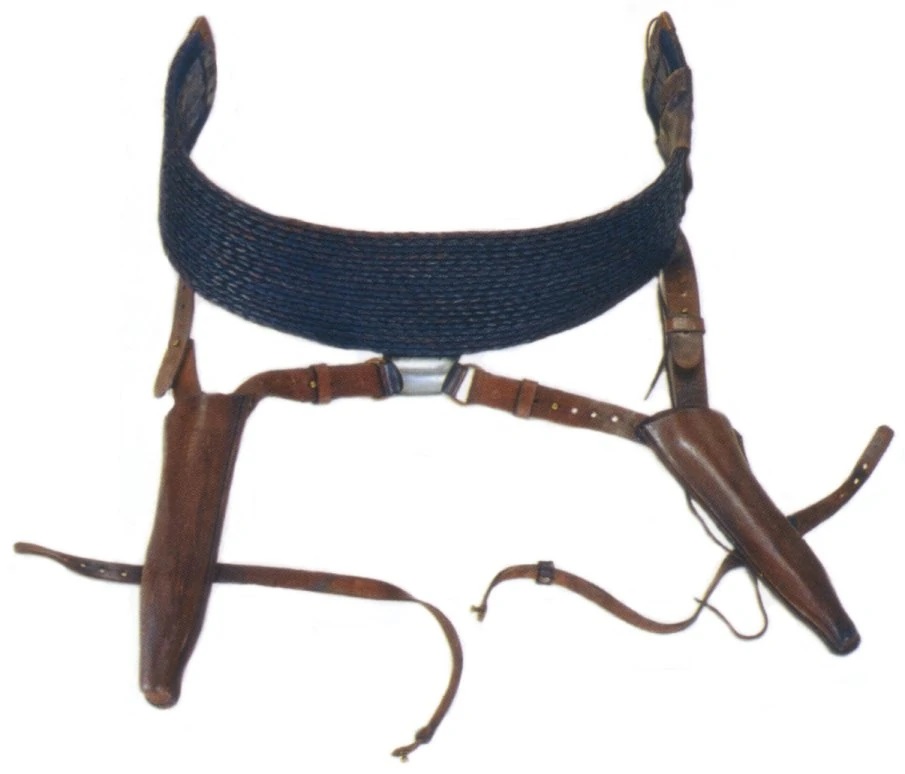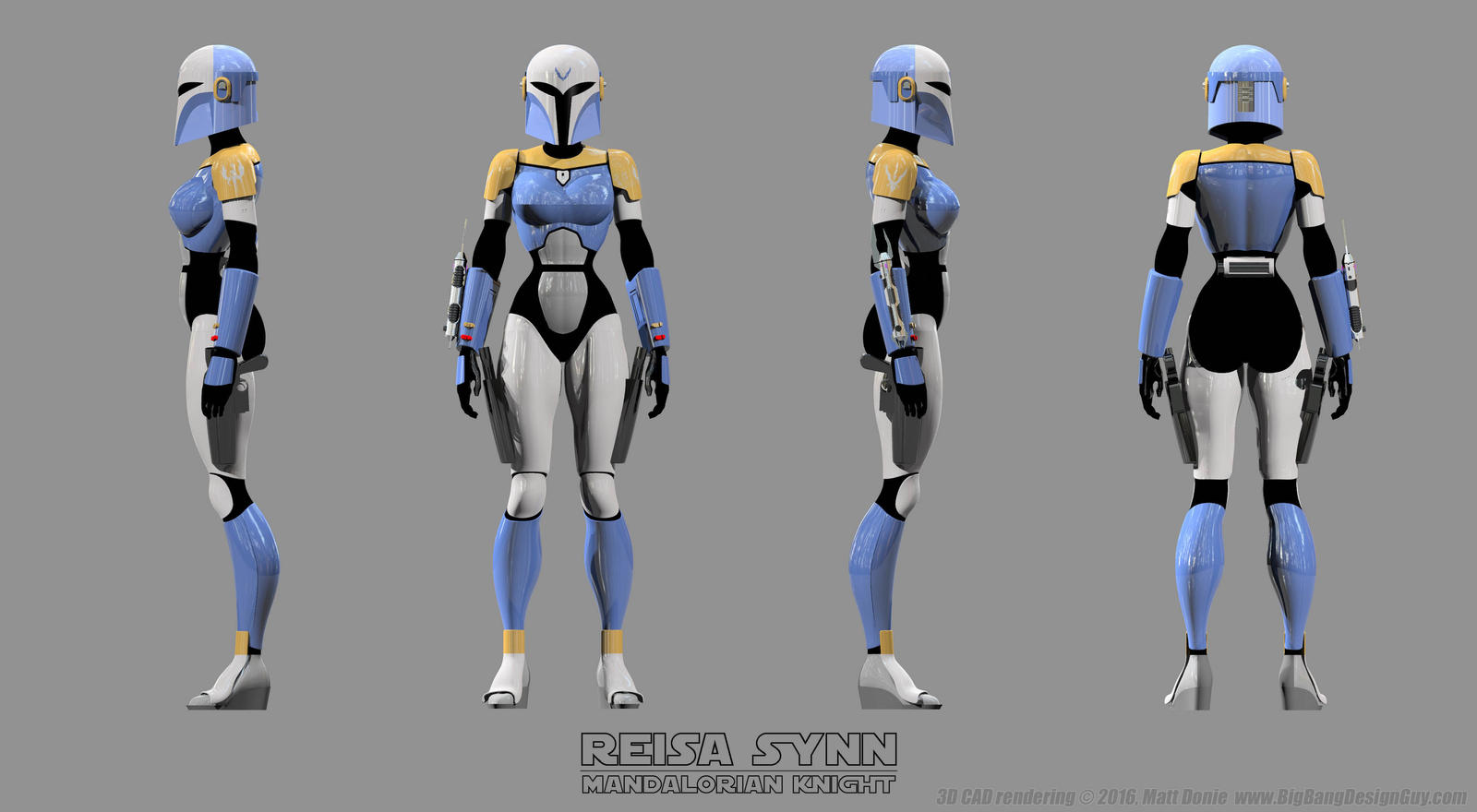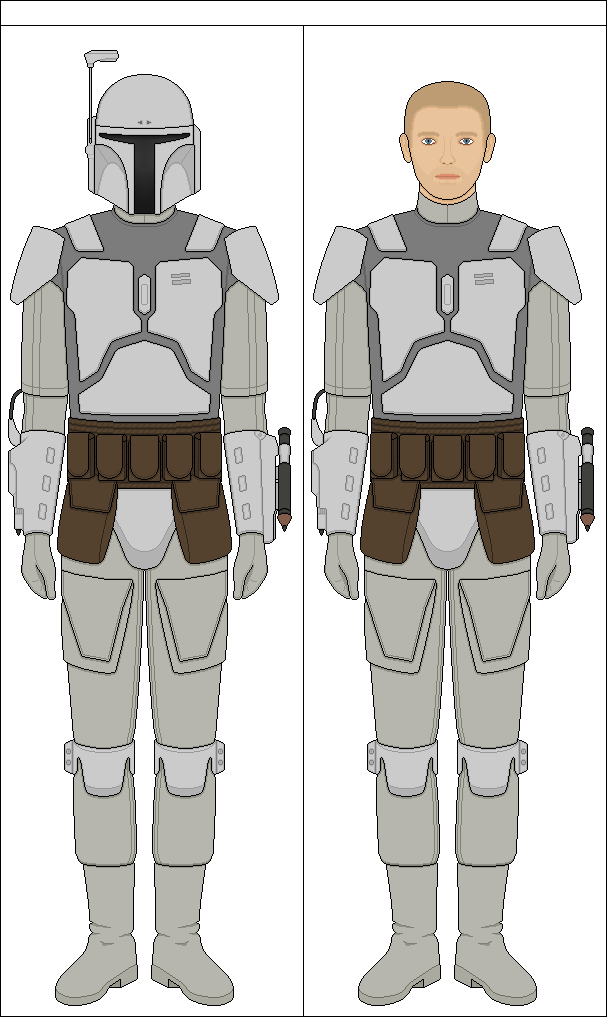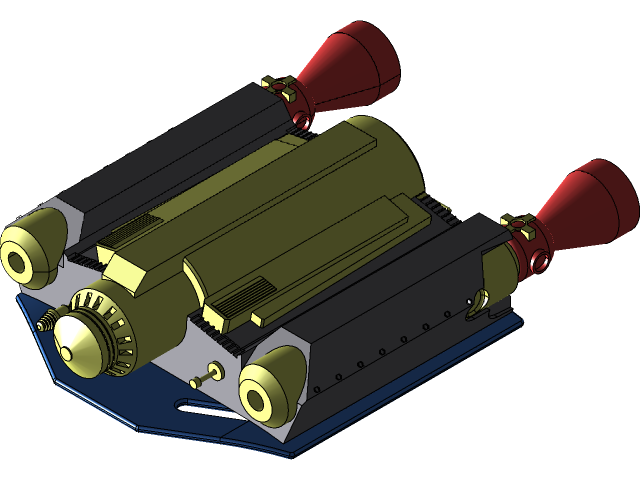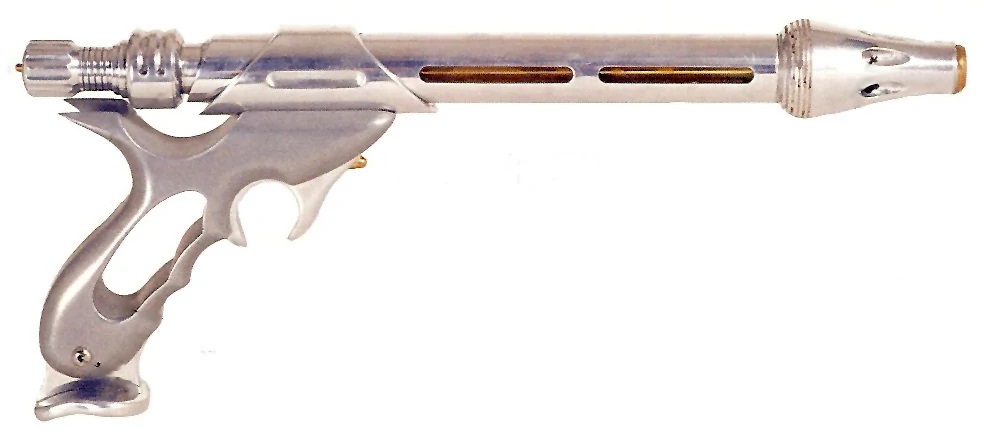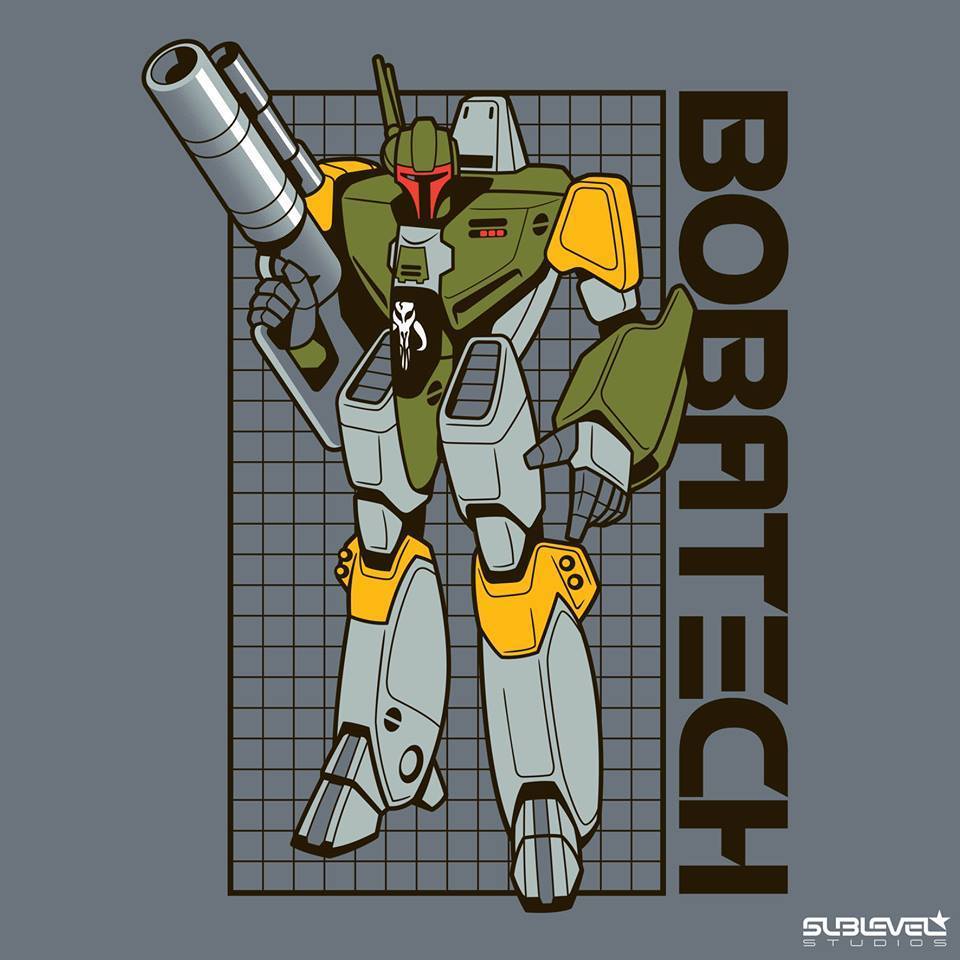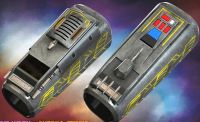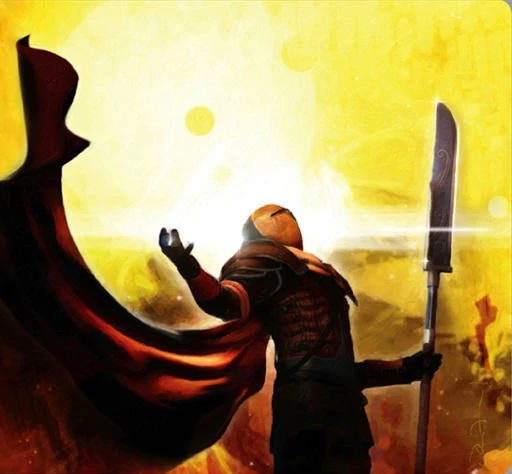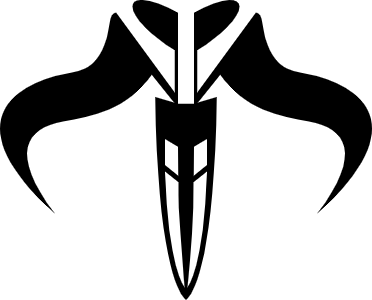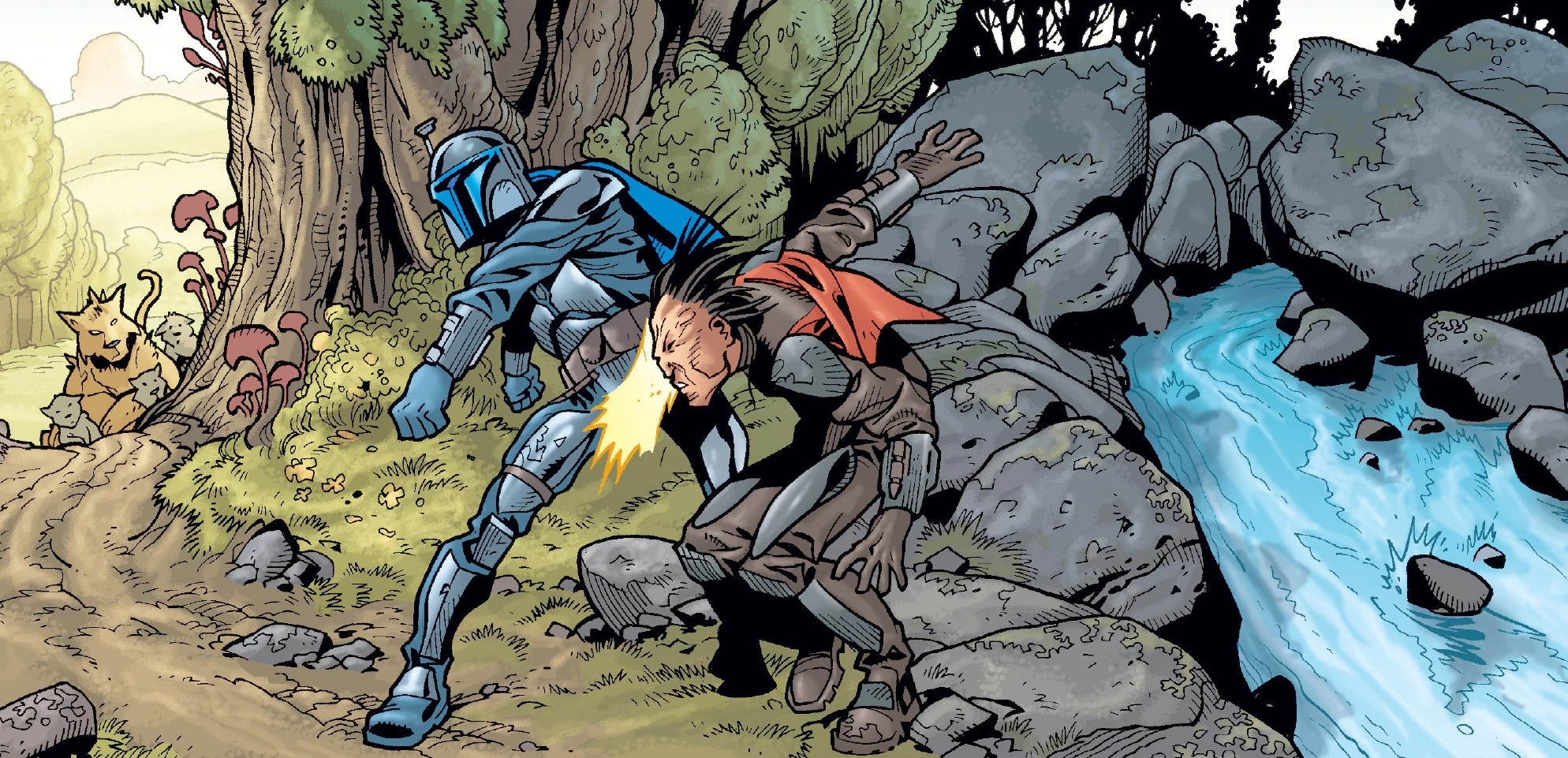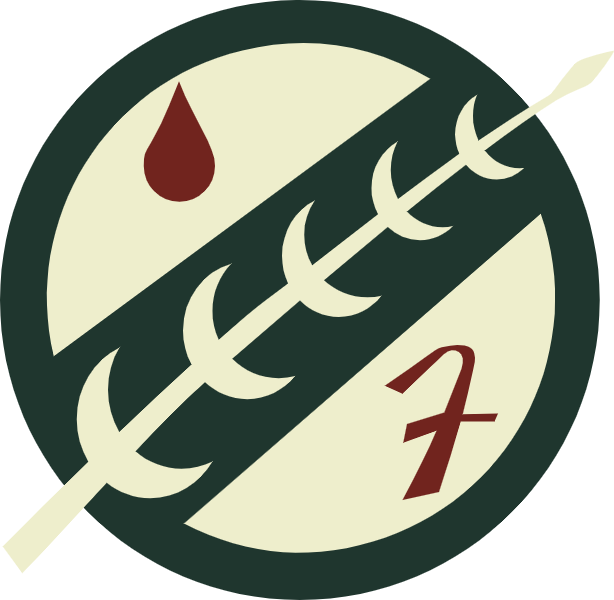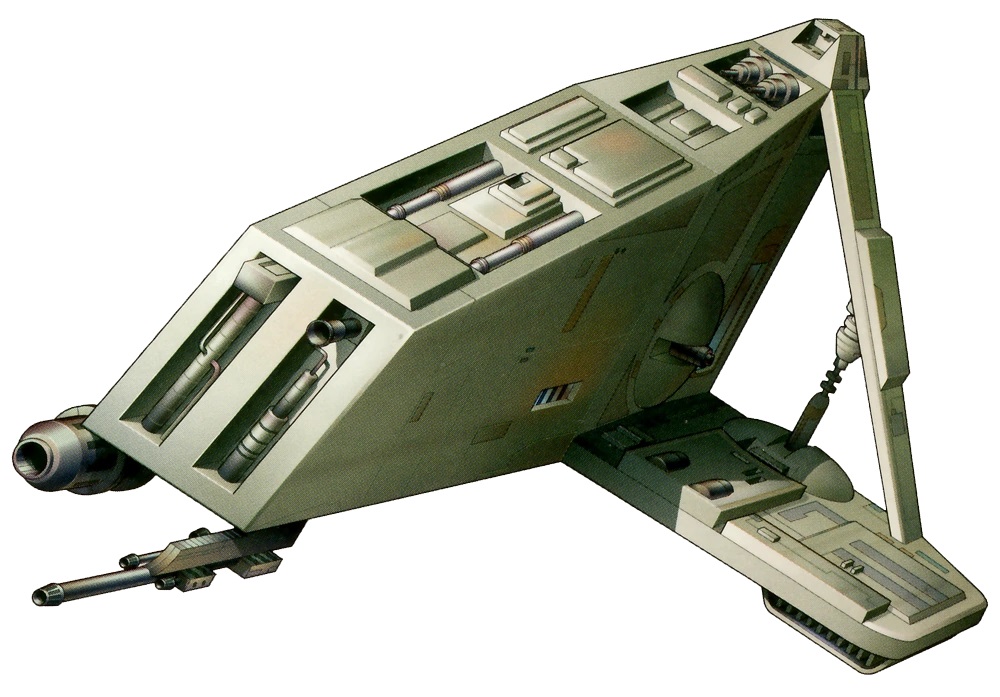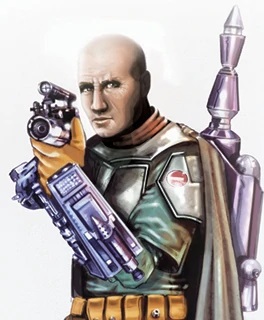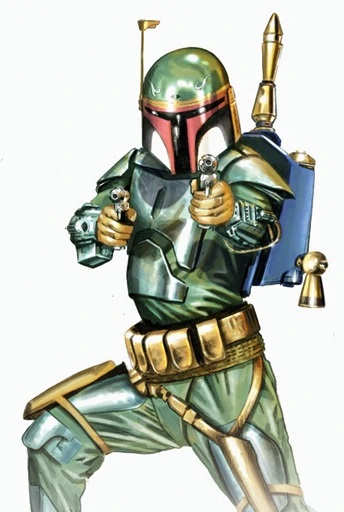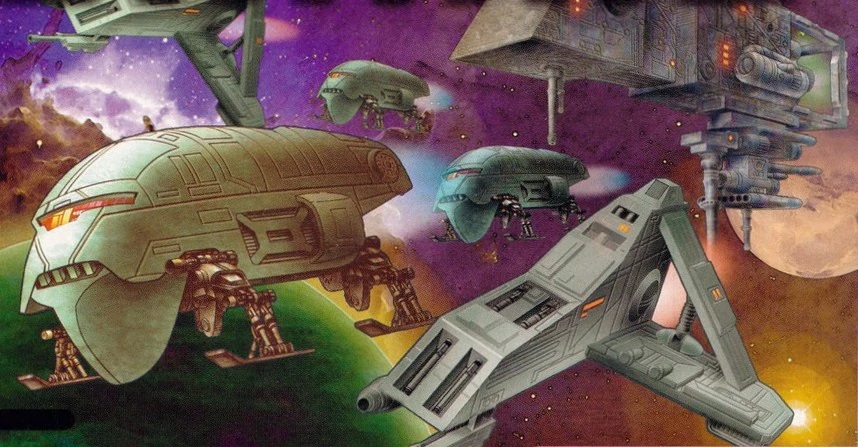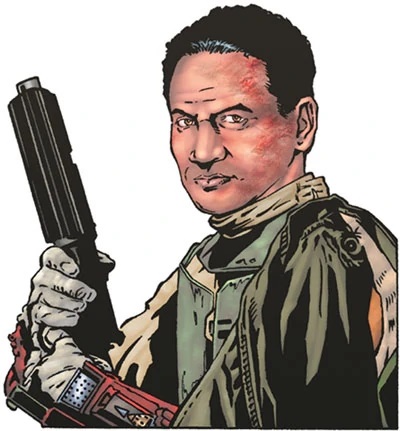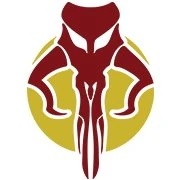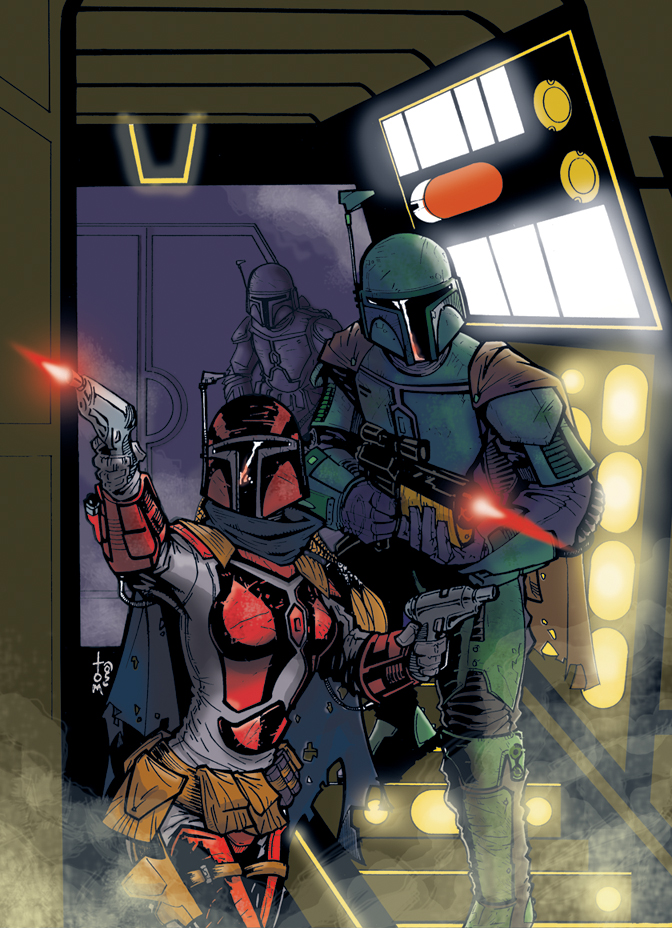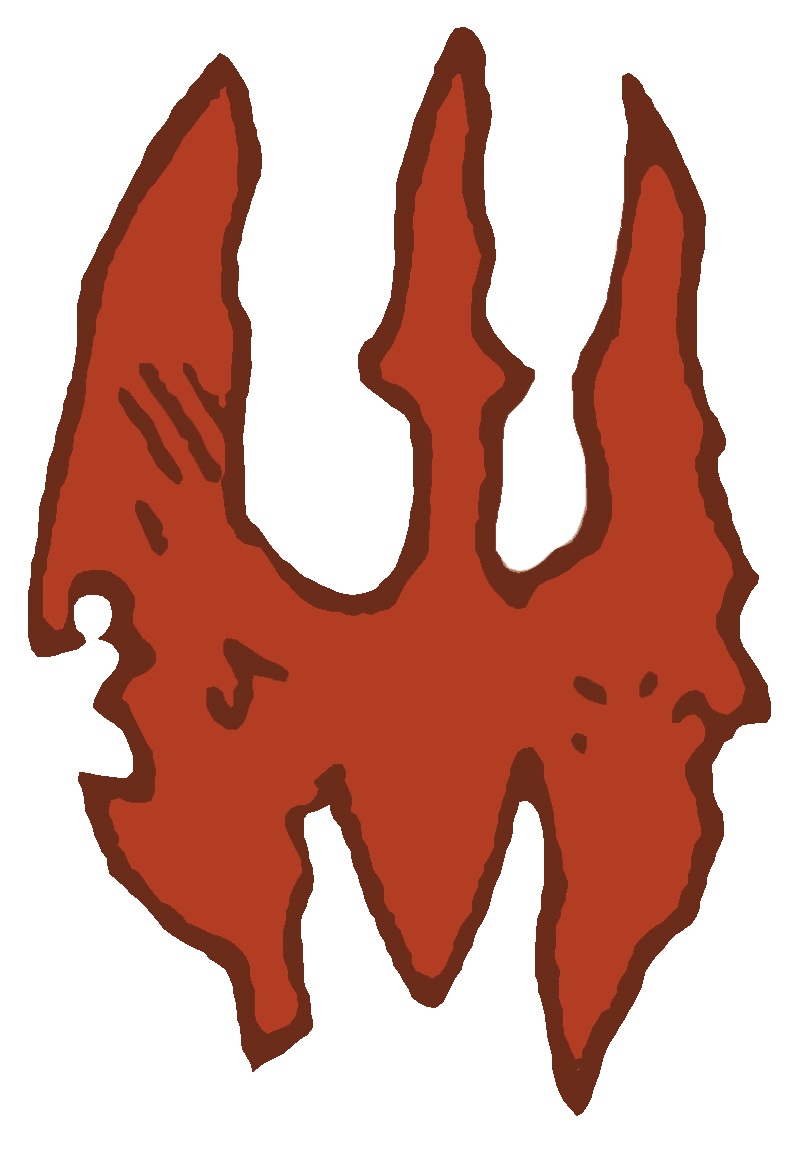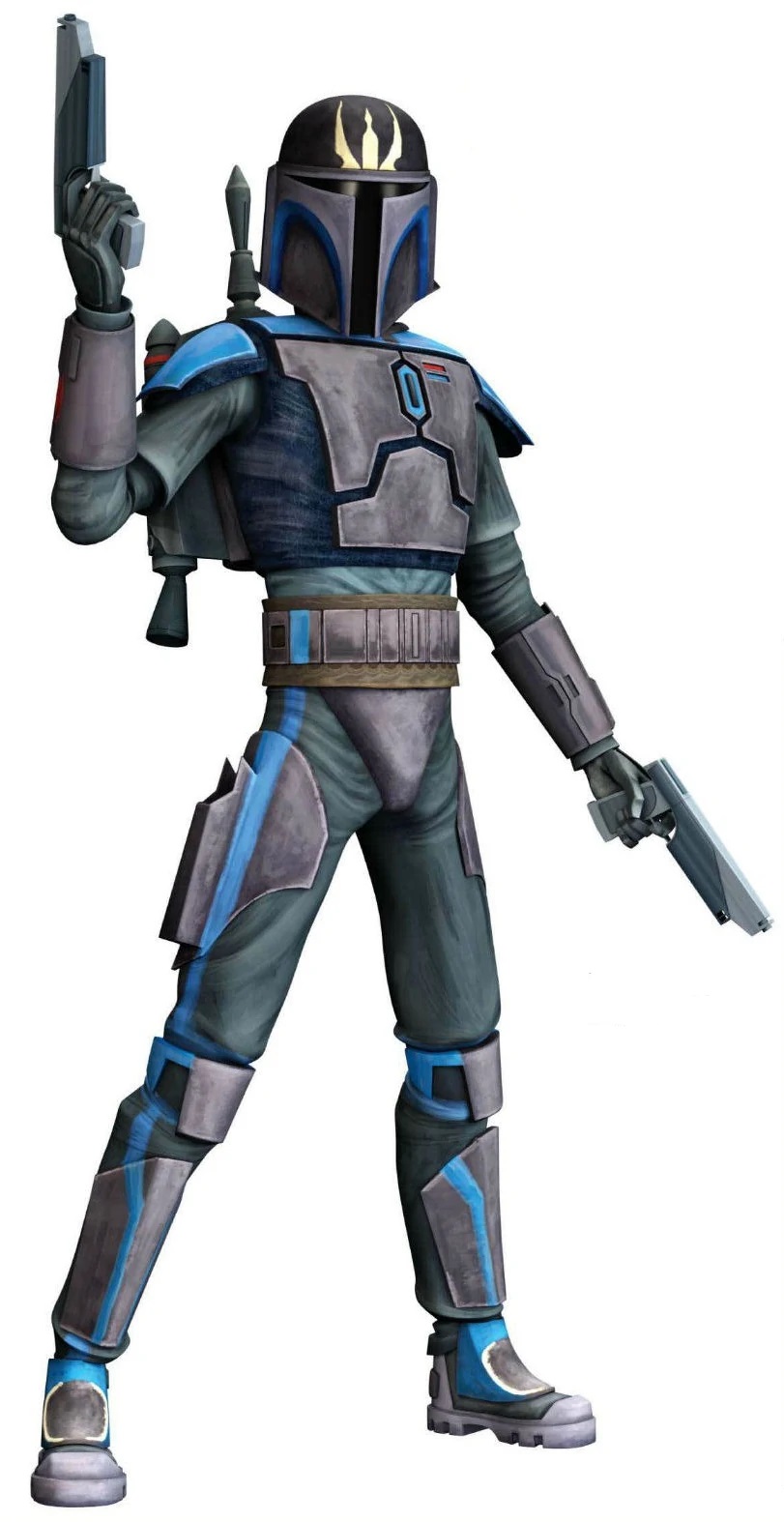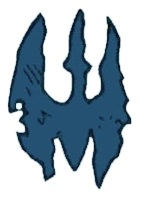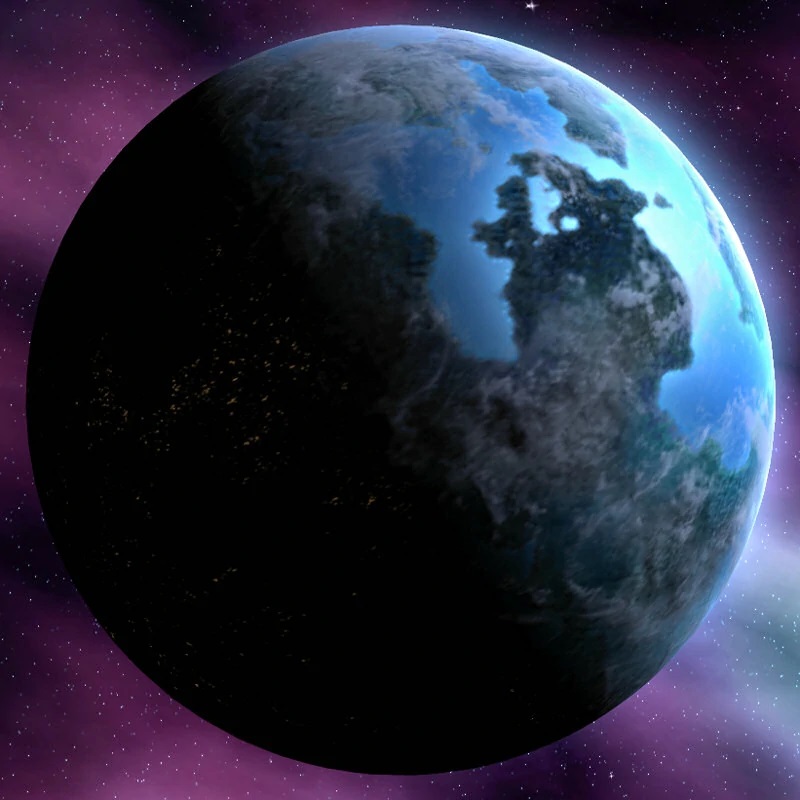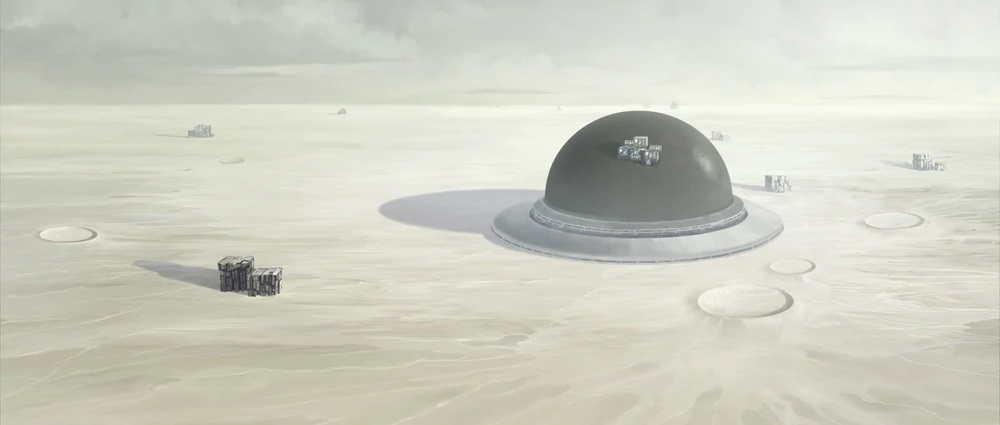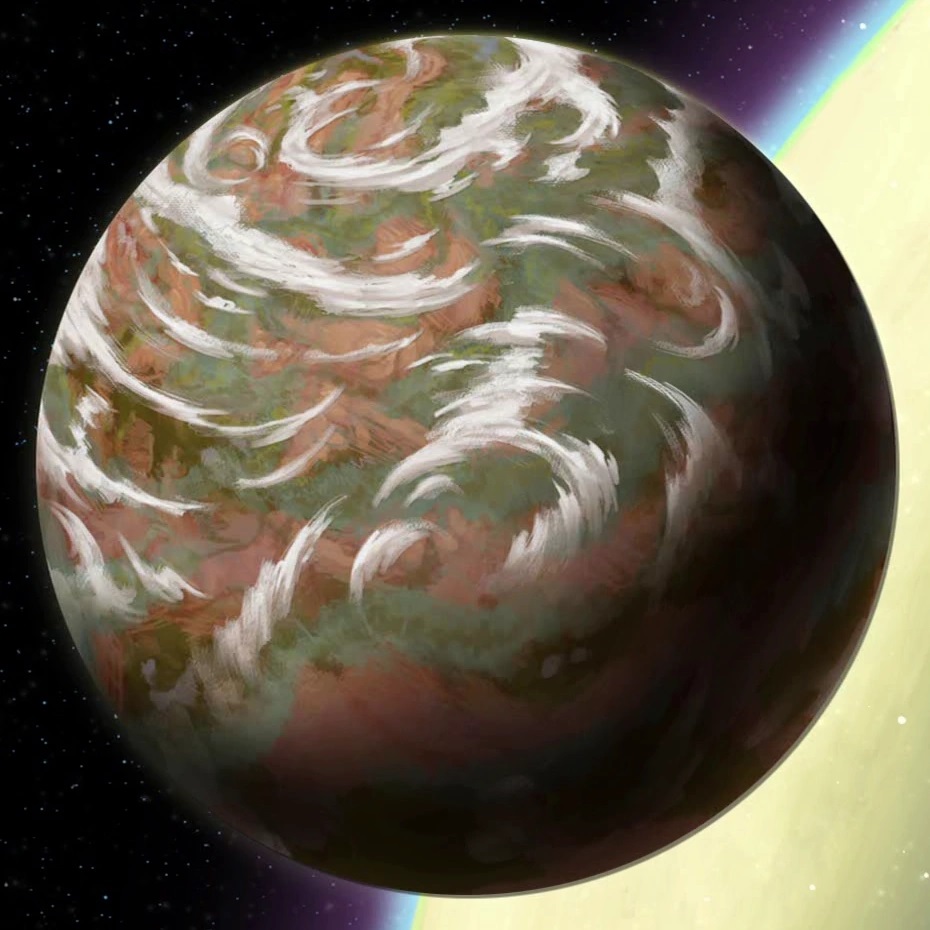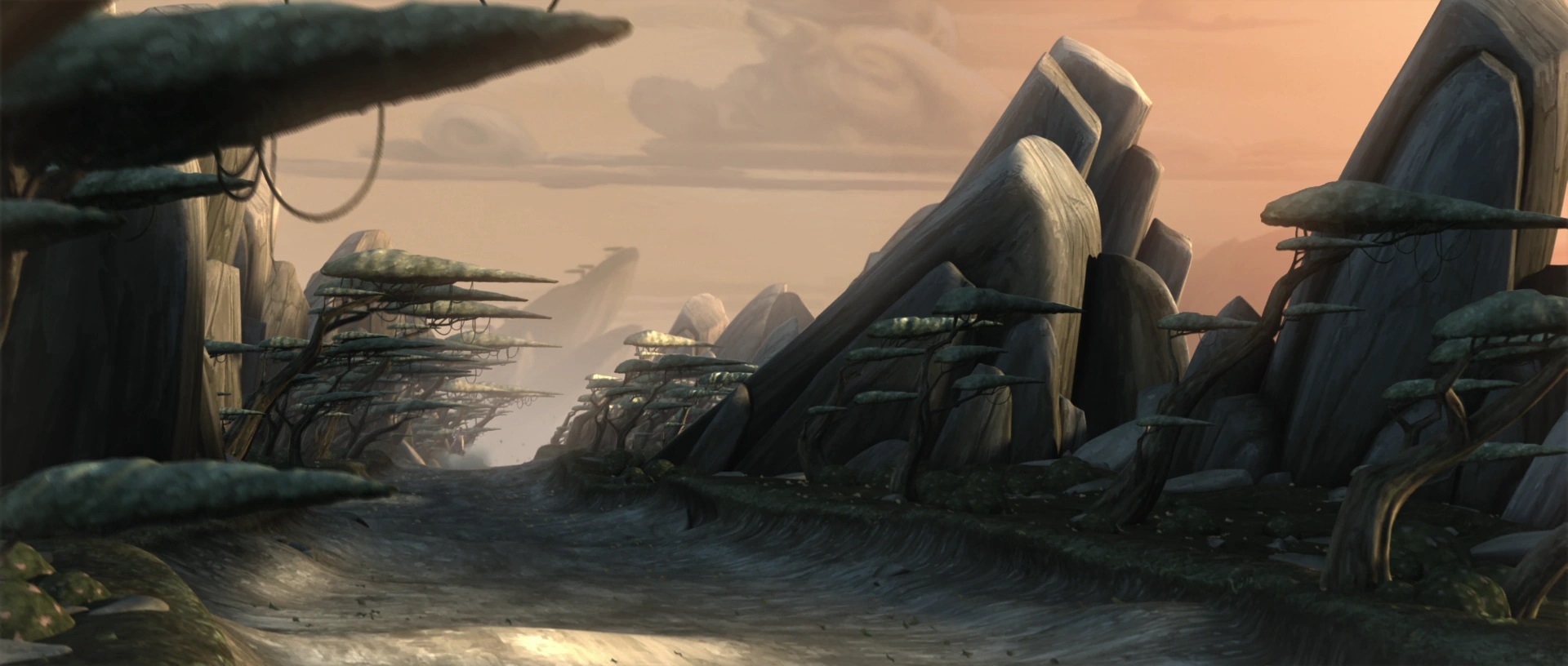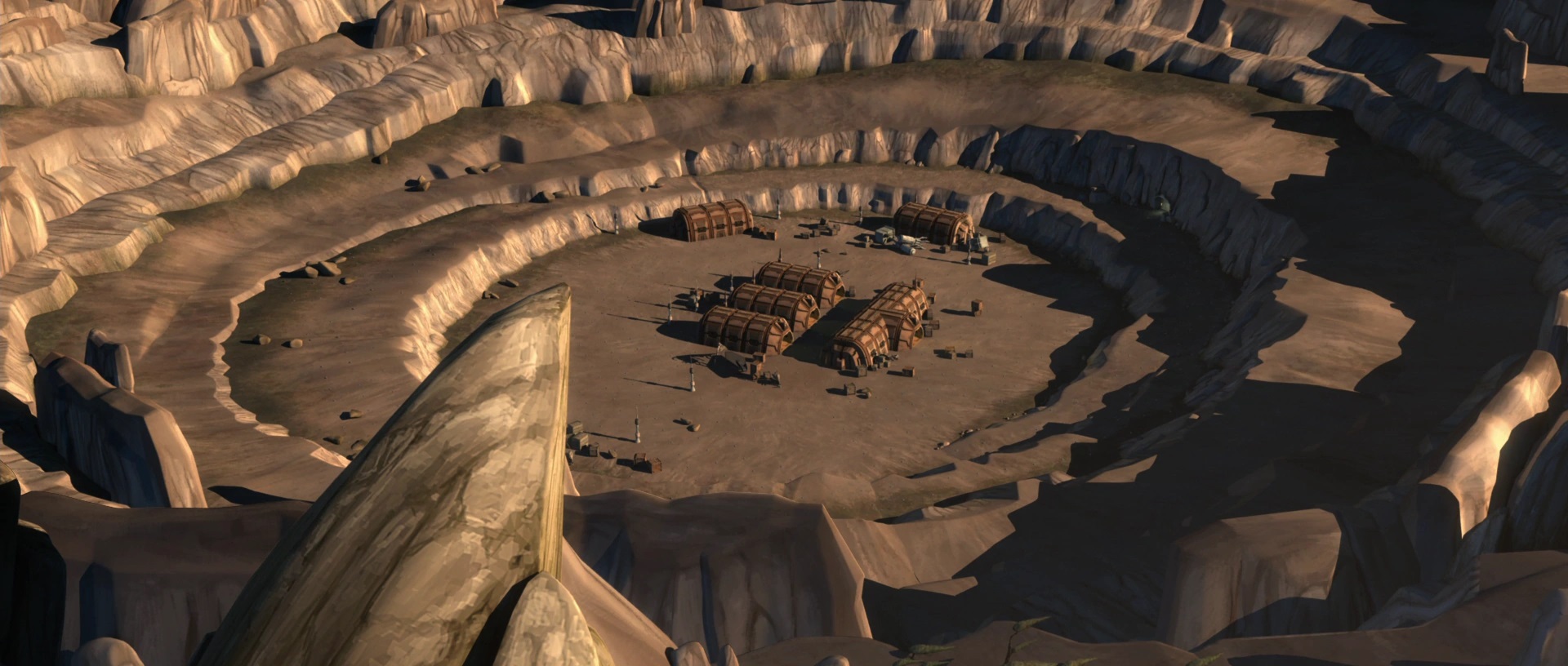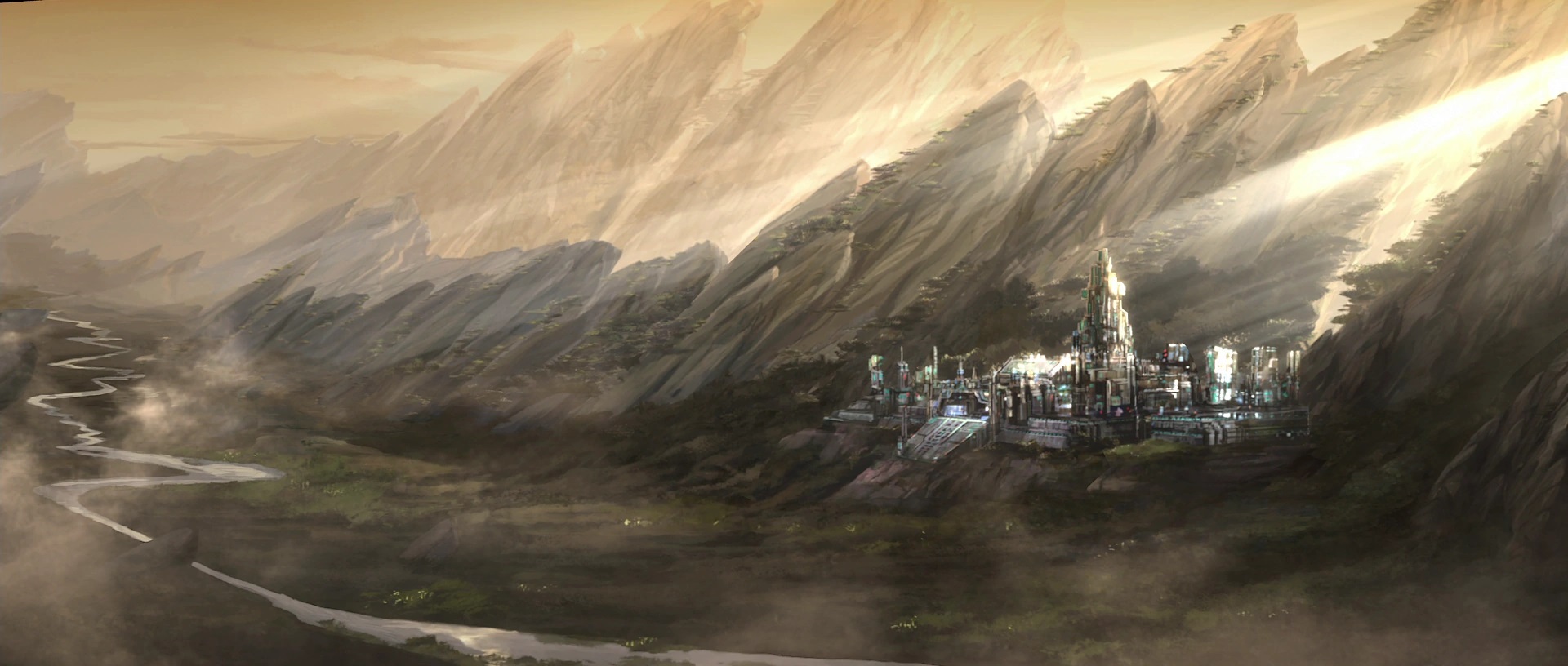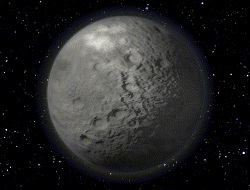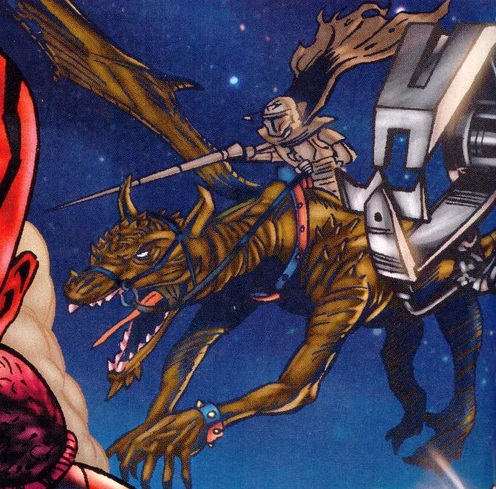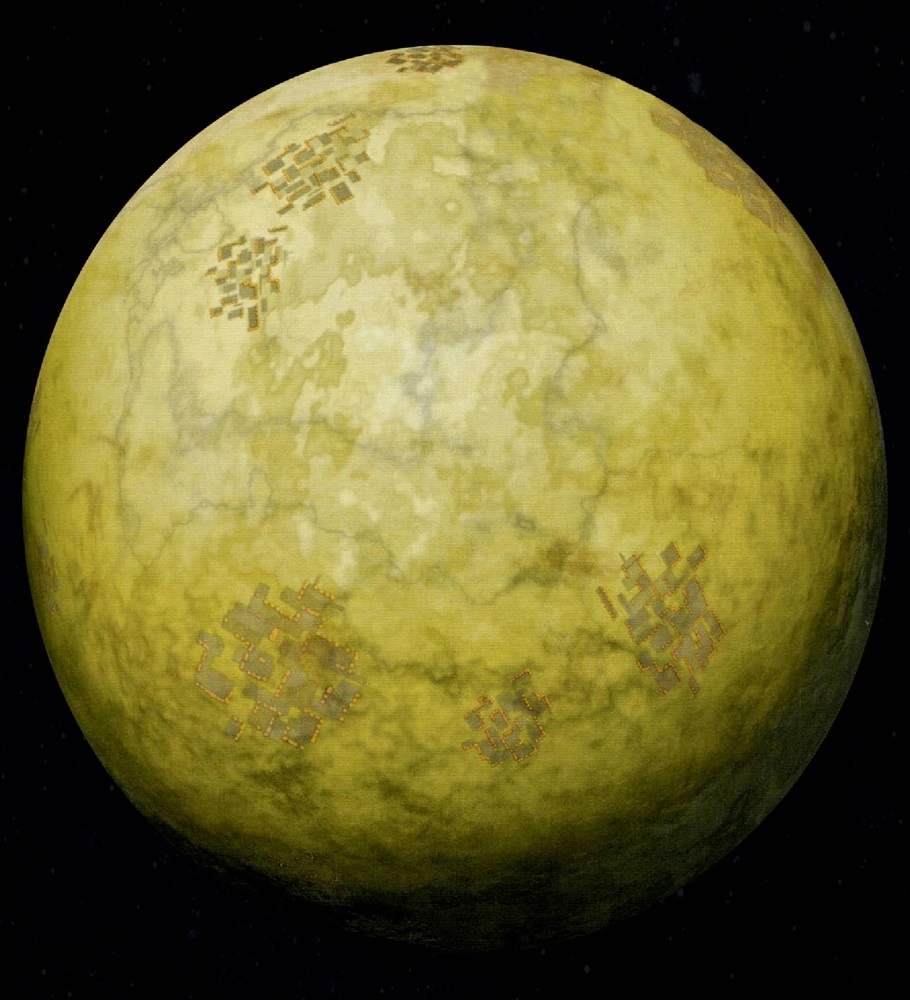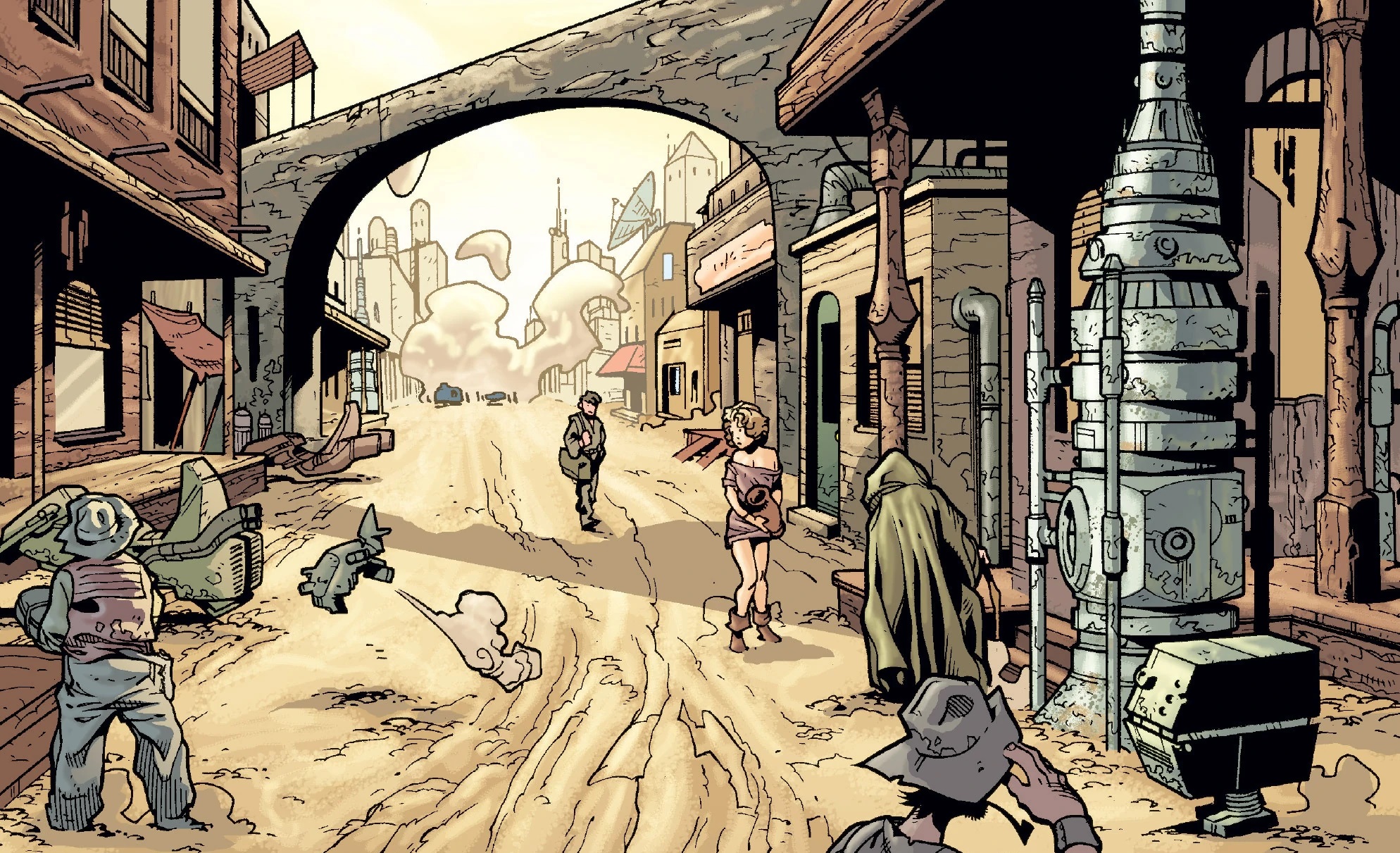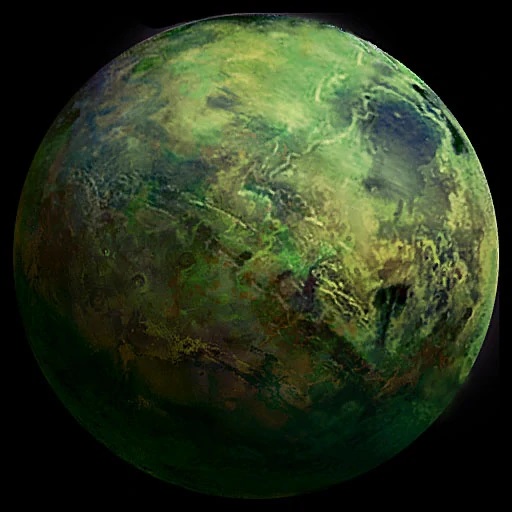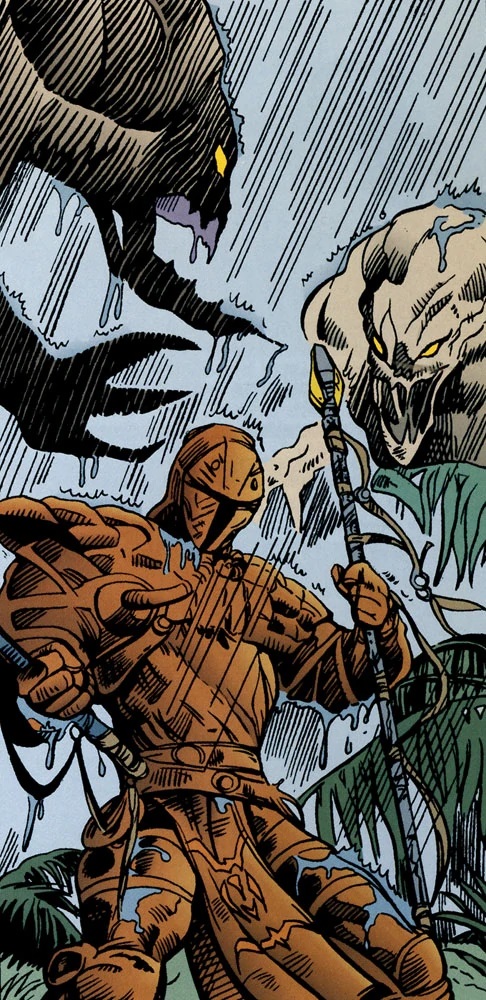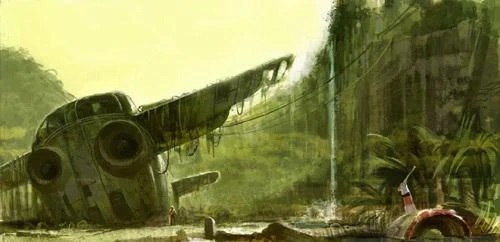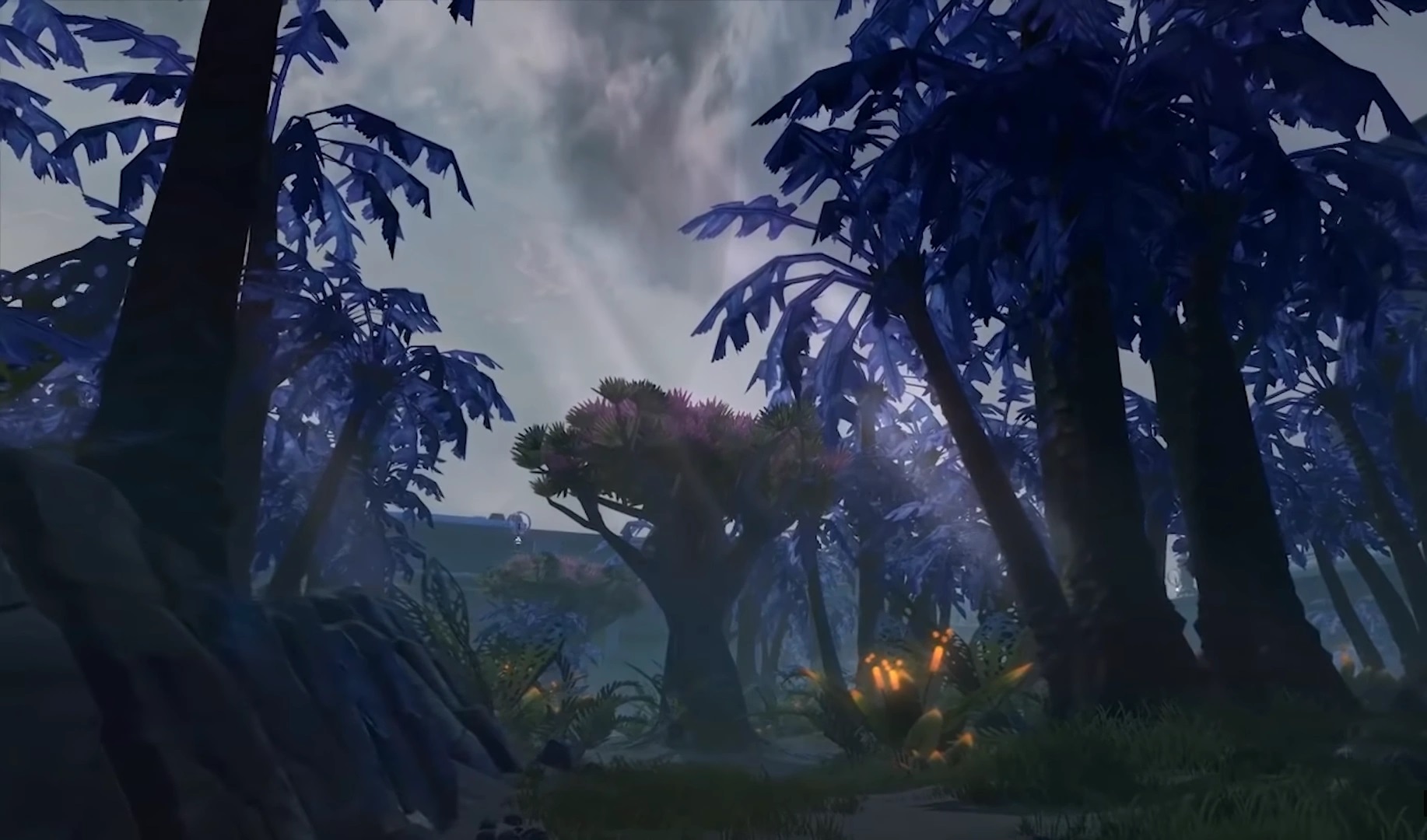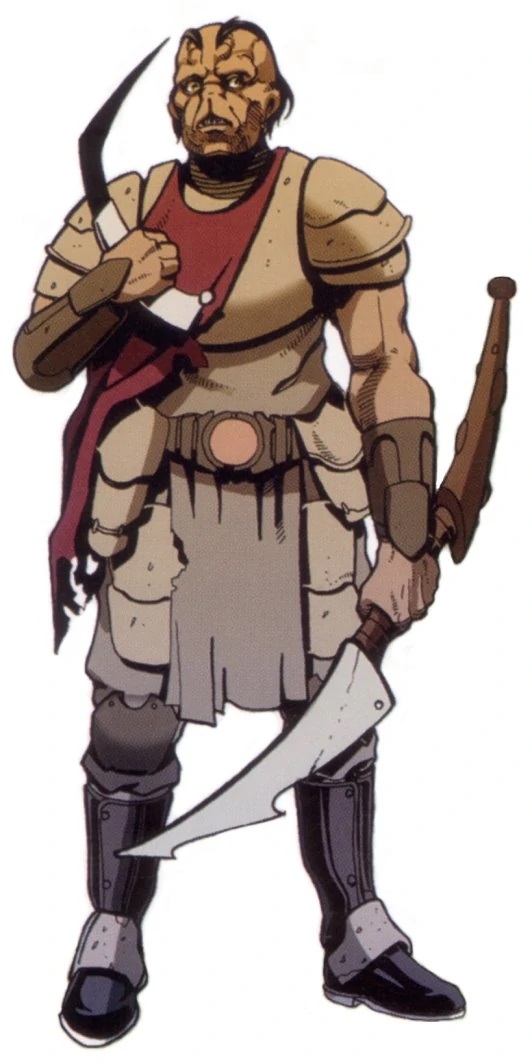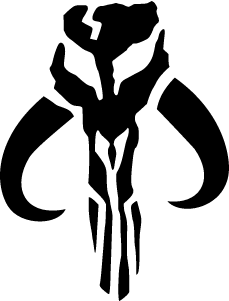 |  | |||||||||||||||||||||||||||||||||||||||||||||||||||||||||||||||||||||||||||||||||||||||||||||||||||||||||||||||||||||||||||||||||||||||||||||||||||||||||||||||||||||||||||||||||||||||||||||||||||||||||||||||||||||||||||||||||||||||||||||||||||||||||||||||||||||||||||||||||||||||||||||||||||||||||||||||||||||||||||||||||||||||||||||||||||||||||||||||||||||||
|---|---|---|---|---|---|---|---|---|---|---|---|---|---|---|---|---|---|---|---|---|---|---|---|---|---|---|---|---|---|---|---|---|---|---|---|---|---|---|---|---|---|---|---|---|---|---|---|---|---|---|---|---|---|---|---|---|---|---|---|---|---|---|---|---|---|---|---|---|---|---|---|---|---|---|---|---|---|---|---|---|---|---|---|---|---|---|---|---|---|---|---|---|---|---|---|---|---|---|---|---|---|---|---|---|---|---|---|---|---|---|---|---|---|---|---|---|---|---|---|---|---|---|---|---|---|---|---|---|---|---|---|---|---|---|---|---|---|---|---|---|---|---|---|---|---|---|---|---|---|---|---|---|---|---|---|---|---|---|---|---|---|---|---|---|---|---|---|---|---|---|---|---|---|---|---|---|---|---|---|---|---|---|---|---|---|---|---|---|---|---|---|---|---|---|---|---|---|---|---|---|---|---|---|---|---|---|---|---|---|---|---|---|---|---|---|---|---|---|---|---|---|---|---|---|---|---|---|---|---|---|---|---|---|---|---|---|---|---|---|---|---|---|---|---|---|---|---|---|---|---|---|---|---|---|---|---|---|---|---|---|---|---|---|---|---|---|---|---|---|---|---|---|---|---|---|---|---|---|---|---|---|---|---|---|---|---|---|---|---|---|---|---|---|---|---|---|---|---|---|---|---|---|---|---|---|---|---|---|---|---|---|---|---|---|---|---|---|---|---|---|---|---|---|---|---|---|---|---|---|---|---|---|---|---|---|---|---|---|---|---|---|---|---|---|---|---|---|---|---|---|---|---|---|---|---|---|---|---|---|---|
In their early years, the Mandalorian culture revolved around battle, with war being a source of honor and pride in their community. The leader of the Mandalorians was known as the Mand'alor, translating to "Sole Ruler" and was rendered as "Mandalore" in Basic. Throughout their history, the Mandalorians were frequently allied with the Sith, perhaps most notably the Sith Lord Exar Kun, and held a certain distrust and general dislike for the Geh 'Dai Order. However, they would not hesitate to cooperate with the Geh 'Dai if a partnership between the two groups was mutually beneficial. In later years, the Mandalorians moved away from their obsessively war-like and conqueror ways and instead, most became bounty hunters and mercenaries, selling their skills to various individuals and factions in the galaxy. However, the Mandalorian Protectors aided with the Alliance to Restore the Republic ever since about 3 ABY and even continued to serve the Alliance of Free Planets and finally the New Republic. When Boba Fett took the title of Mandalore years later, they were approached by the powerful unknown empire of the Yuuzhan Vong to aid them as wealthy mercenaries, and while the offer was accepted (mainly because the other option would have been slavery of the Mandalorian homeworld), Boba managed to feed information to the New Republic, and while the Mandalorians continued to fight for the Vong in the early Yuuzhan Vong War, they soon betrayed them and fought with the many other factions defending the galaxy. After the war ended, the Second Galactic Civil War began, and Jaina Solo, daughter of Han and Leia, came to Fett asking to be trained, given the Mandalorians' famous reputation as legendary warriors against the Geh 'Dai. The Mandalorians ironically fought alongside the New Geh 'Dai Order, their former enemies in the crusades many years before and the Alliance-in-exile in this conflict. With training from Fett, and from others, Jaina killed her brother Darth Caedus, ending the war. Ultimately, in the span of over four thousand years, Mandalorians slowly changed from the feared Mandalorian Crusaders of the Sith Empires, to the elite soldiers of the Geh 'Dai Coalition and later the reorganized Galactic Alliance, fighting for a cause rather than mainly for credits and the destruction of worlds. Mandalorians wore very distinctive battle armor, including helmets with T-shaped visors that covered the entirety of their faces, and would provide inspiration for the helmets of the Republic's clone troopers. These helmets would eventually become strongly associated with the Mandalorian people. History Taung Species As the newly entitled Mandalorians, the Taungs set out to conquer the worlds around their new home, their nomadic nature and worship of war driving them crusading outward as they increased their territory. Under the rule of Mandalore the Indomitable, another Taung warlord following in the leadership tradition established by Mandalore the First, the Taungs began to take in beings of other species into their culture, transforming what it meant to be Mandalorian forever after. This willing acceptance of other beings peaked during the Mandalorian Wars, when Mandalore the Ultimate led the Mandalorians on a campaign against the military forces of the Galactic Republic. Though initially victorious, the intervention of the Geh 'Dai Knight Revan and his loyal Geh 'Dai followers turned the tide of the war against the Mandalorians, culminating with the devastation of the planet Malachor V. The Taung race had suffered heavy losses during the war, and by its end, were generally believed to have drifted into extinction, survived by the legacy of the Mandalorian culture they had passed on, that remembered the Taungs as the Progenitors. The Taung would become extinct in the aftermath of a long war with the Geh 'Dai, but their Legacy, the Mandalorians, lives on. The Mandalorians began as the Near-Human Taung species from the planet Coruscant. Intense fighting with the thirteen Human nations of Coruscant known as the Battalions of Zhell began millenia before the Republic, and when a powerful volcano nearly wiped out the humans and darkened the skies over Coruscant, the Taung came to call themselves the Dha Werda Verda, the "Warriors Of The Shadow." Despite the volcano's devastating effect, the Taung were eventually driven off Coruscant and took refuge on the world of Roon. Led by the warlord known as Mandalore the First, they would conquer another planet in the Outer Rim in 7,000 BBY, which they named Mandalore after their leader. The Taung took on the name Mandalorians and were seen by many as the most skilled fighters in the galaxy, thriving in battle. These Mandalorian Crusaders were known for their use of cutting-edge weaponry and held to a strict code of honor, and wore armor known simply as "Crusader Armor" that differed from one soldier to the next. For thousands of years, Mandalore's new inhabitants would not stray far from the Mandalore sector, instead venturing on a series of further conquests to capture the worlds of Ordo, Gargon, and Shogun. When the Mandalorians came to the nearby Mandallia, though, the Mandallian Giant natives not only repelled the invaders' assault, but many came to join the Mandalorian culture, having impressed the Mandalorians with their strength and prowess. But nearly three thousand years after Mandalore's conquest, at a point prior to 4,000 BBY, the Mandalorians began to expand their ongoing crusade outward and engaged the Nevoota species in a conflict that would lead to the extermination of the Nevoota and the deification of war in the Mandalorian culture, personified as the destroyer god, Kad Ha'rangir. Shorty before 4,000 BBY, the Mandalorians were led by a new Mand'alor, Mandalore the Indomitable, and in their continuing campaign of expansion, the Mand'alor led a raid on the planet Iskadrell. There, the Mandalorians freed the slaves of the Iskalloni, taking many of them into their culture, including a young Antos Wyrick. Another victim of the Mandalorian crusade was the planet Basilisk. As the Mandalorians invaded, the Galactic Republic sent a relief force, under the command of Geh 'Dai Master Sidrona Diath, to the aid of the Basiliskans. Even with Republic support, the Basiliskans found their lines being overrun by the more numerous Mandalorians, and upon realizing that the they were going to lose the battle, the Basiliskans decided to poison their own planet so that the conquerors would not be able to use the world. Basilisk fell, but because the planet's surface was virtually destroyed, the Mandalorians decided to abandon the world and move on, though not before pillaging a sizable number of Basilisk war droids for future use. The Mandalorians also captured a large number of the reptilian Basiliskans, and through centuries of warfare they degenerated into little more than war mounts and beasts of burden, becoming known as "Lagartoz War Dragons." The Great Sith War
Now allied with the Sith and Krath forces, the Mandalorian Crusaders joined in an attack on the Republic shipyards in orbit around Foerost. Mandalore the Indomitable led his warriors through the corridors of Foerost's command station, destroying all opposition before him. With the combined coordination of the space forces and the Mandalorians, Qel-Droma was able to quickly and decisively capture the Foerost shipyards, as well as the three hundred Republic starships that had been docked there. With their newly-acquired flotilla and the Republic fleet chasing false leads to the jump station at Kemplex IX, Qel-Droma and the Mandalorians invaded Coruscant. Basilisk war droids rained down on the planet from space, and the Mandalorian Crusaders poured into Galactic City. Qel-Droma was betrayed by the Krath witch Aleema Keto, who ordered a retreat of their forces and abandoning Qel-Droma to the Geh 'Dai; claiming the Sith Lord had died, Keto was able to sway Mandalore the Indomitable to pledge his loyalty to her. Upon finding out the truth of Keto's betrayal, the Mand'alor feigned loyalty and sent his Crusaders with her latest attack force while he personally boarded his shuttle and journeyed to Yavin 4 to seek the aid of Exar Kun. Arriving at the jungle moon, Mandalore explained to Kun what Aleema had done, and asked the Dark Lord of the Sith to lend him aid in rescuing Ulic from execution. Though Kun had warned Ulic that attacking Coruscant would end badly, he agreed to help Mandalore in rescuing his apprentice. Storming the Senate Building with Kun, Mand'alor rescued Qel-Droma and warned him of Keto's treachery. After Keto had been dealt with by Qel-Droma, Mandalore the Indomitable had been tasked with capturing the Iziz Royal Palace on Onderon for the Sith. Ordering his fleet carriers to hold position in orbit over the planet, the Mandalorian Crusaders swarmed down atop their war droid mounts toward the city of Iziz. A vicious aerial battle ensued as the Crusaders and their Basilisks clashed against the Onderonian Beast Riders and their flying Drexls. During the fight, the Beast Riders managed to get a call out to the Republic, explaining that the Mandalorians were attacking and requesting immediate assistance. It wasn't long before a Republic fleet, led by Fleet Captain Orley Vanicus, arrived to combat the Crusader attack. Realizing that the fight was over when he witnessed the destruction of his orbiting fleet carriers, Mand'alor wagered that there was still a chance to lead his Crusaders to safety; ordering his warriors to retreat from Onderon and make their way to the moon of Dxun, the atmosphere of which was currently touching Onderon's. Mand'alor planned to lose their pursuers in the moon's dense jungle. During their retreat, Mand'alor's personal Basilisk war droid was hit by enemy fire and he crashed on the surface of Dxun, separated from the other Crusaders. Pulling himself from his war droid's wreckage, the Mand'alor soon found himself surrounded by a number of dangerous beasts native to Dxun's jungles. Though he fought the creatures, Mandalore the Indomitable was eventually overcome slain by the beasts. While combing the jungles for their downed leader, a Mandalorian Crusader came upon the Mand'alor's mask and, in accordance with Mandalorian tradition, claimed the mask as his own to become the new Mand'alor. The Mandalorian Wars
In the decades since their defeat in the Great Sith War, many Mandalorians had become convinced that their once-prophesied "Great Last Battle" was soon to be at hand. Emboldened by an element of the "True Sith" in hiding, Mandalore the Ultimate launched a campaign into the Outer Rim, on the edge of Republic space. Conquering several independent planets outside of the Republic's interests, the Mandalorian Neo-Crusaders were able to amass a clan territory larger than that ruled by the Hutts in the short span of a decade. During this period of aggressive expansion, the Neo-Crusaders conquered the planet Cathar in an operation headed by Cassus Fett. Though already defeated, Fett herded what remained of the Cathar species after the battle, out into the sea and, although he was opposed by the outcry of a single Mandalorian female, gave the order to kill them all, and the Mandalorian traitor with them, as retribution for the Cathar's actions against the Mandalorians in the past. In the end, the Mandalorians had wiped out over ninety percent of the species. As the Republic refused to get involved in the Mandalorians' conquests, wary of being dragged into another war so soon after the last, the Mandalorians plundered resources from conquered worlds and stockpiled them in order to fuel the growing campaign. With each victory in this ongoing series of proxy wars and border skirmishes, the Mandalorian clans grew more powerful, conscripting conquered species into their ranks as they probed the Republic's military strength and resolve. Just as it appeared as though the Neo-Crusaders' appetite for conquest had been satisfied, with the Mandalorians having failed to conquer a populated system in over a year by 3,964 BBY, the Mandalorians struck out in force against the Republic. Striking swiftly from their outpost on Dxun, Onderon quickly fell to the Mandalorians, and it wasn't long before the likes of Vanquo and Taris soon joined it. The victory on Suurja gained several Geh 'Dai prisoners that were taken to a research station on Flashpoint to be experimented on by Demagol. The Geh 'Dai would be freed, although Demagol managed to escape in the guise of the renegade Mandalorian known as Rohlan Dyre, leaving Dyre behind for capture in his stead. On the planet Serroco, the Republic military made the mistake of placing its defensive fortifications within the cities of the native Stereb, believing that the Mandalorians would not attack their bases housed amidst a civilian population. Unfortunately, the Mandalorians soon dissuades them of this notion; disgusted by what he deemed a "defense without honor", Mandalore the Ultimate ordered a full-scale bombardment with nuclear weapons, destroying twenty-seven population centers. Neither Duro or Eres III would fare much better in the face of the continuing Mandalorian onslaught. Lord Arkoh Adasca of Arkania and the head of Adascorp, offered to sell a devastating bioweapon to the Mandalorians in the form of the enormous exogorths, under the agreement that the Mandalorians would spare Arkania from their crusade and adopt Adascorp as their main weapon supplier. Before the Mand'alor could arrange the deal, the exogorths were drawn out to Wild Space by Gorman Vandrayk, where neither the Mandalorians nor the Republic would be able to use them. Setting their sights on Alderaan as the target of their next conquest, the Mandalorians amassed their forces on the recently conquered planet of Jebble. At the same time, Demagol's former assistant, Pulsipher, had come into possession of the ancient Sith amulet known as the Muur Talisman. With it, Pulsipher unknowingly unleashed the Rakghoul plague across their base, transforming Neo-Crusaders into the beastly Rakghouls. In order to prevent the spread of the plague to other worlds, Cassus Fett ordered the base on Jebble to be destroyed, ordering a nuclear bombardment not unlike that which occurred on Serroco. The Mandalorians seemed on the verge of victory, with the Republic outmatched and overwhelmed by the sheer ferocity of the Mandalorian tactics. Finally, when the Geh 'Dai Revanchists unveiled the true events of the Cathar genocide in a tragic vision, hundreds of Geh 'Dai followed the Knights Revan and Malak into the war against the Mandalorians, no longer able to stand back and watch without action. Revan proved to be an extremely capable commander in the field, masterminding a string of military victories, and rose swiftly through the ranks of the Republic Military; with his new-found authority to spearhead the Republic war effort, Revan spurred the all-but-defeated Republic Navy to push the Mandalorians back. In relatively short order, the Mandalorians were forced off of Taris, driven from Dxun- Even Cassus Fett's victory at Jaga's Cluster could do little to halt the Republic's growing momentum. The year 3,960 BBY would usher in the ultimate battle of the Mandalorian Wars, as Revan forced a confrontation with the Mandalorians in orbit over Malachor V. Drawing upon the dark side energies of Malachor, Revan faced off against Mandalore the Ultimate in single combat, slaying the Mand'alor. The experimental superweapon known as the Mass Shadow Generator was activated by one of Revan's Geh 'Dai Generals, destroying the Mandalorian fleet, but at the cost of a significant amount of the Republic fleet as well. With their fleet in ruins and their leader dead, the Mandalorians transmitted their unconditional surrender. The Dark Wars
But far too soon after the last, the galaxy found itself entangled in another war, one featuring Revan's return to the galactic scene as a newly-turned Sith Lord, with his apprentice, Darth Malak, at his side. The rechristened "Darth Revan" turned the galaxy on itself in his attempt to claim the power of the Rakatan artifact known as the Star Forge. Revan would be captured by the Geh 'Dai, however, and his memories of his days as a Sith erased. It was during the travels of this redeemed Revan, that he met the Mandalorian warrior by the name of Canderous Ordo. Ordo was a former Mandalorian Crusader who had survived the Great Sith War, joined the Neo-Crusader ranks as a battle tactician, and went on to become a mercenary following the end of the Mandalorian Wars. Tired of his mercenary life on Taris, Ordo traveled with Revan on his mission to stop Darth Malak and his Sith Empire, seeking greater battle worthy of his skill. During their travels, Ordo came upon Sherruk and his group, Mandalorian warriors who had descended into a lowly bandit, harassing settlers on Dantooine; Sherruk and his companions would fall to Revan's blade, though not without putting up a substantial fight. They would also come upon Mandalorian poachers on Kashyyyk, preying on Wookiees in the region known as the Shadowlands, and a small Mandalorian contingent on Lehon. Revan would go on to succeed in stopping Darth Malak, destroying the Star Forge and ending the war in the process. But afterward, Revan would disappear from the galaxy, seeking out the "True Sith" that he believed lurked in the Unknown Regions. Before he did, though, Revan, his memories of who he was and had been returned,
With the Mand'alor's mask now back in Mandalorian hands, Canderous Ordo became the new Mand'alor, taking the name "Mandalore the Preserver." During his quest to reunite the clans, Ordo came upon what may have been one of the last remaining Taung in the galaxy. This Taung, already dying when Ordo found him, claimed that Mandalore the Ultimate had usurped the title of Mand'alor with Sith assistance, and that he was the true heir of Mandalore the Indomitable. Before succumbing to death, this Taung warrior consigned his armor and clan to Ordo, asking that he carry on their traditions; Ordo wore the armor as his own and incorporated the mask of Mand'alor into the Taung's helmet. As Mand'alor, Ordo summoned the Mandalorians to the old Neo-Crusader outpost on Dxun, intent on rebuilding their forces there under the banner of Clan Ordo. However, not all would heed the Mand'alor's call: Esok, the leader of a Mandalorian clan living on Dantooine at the time, tried to overthrow Ordo with the intention of becoming Mand'alor himself, though he would fail to defeat Ordo and die at the Mand'alor's hand. Following the battle, the remainder of Esok's clan agreed to follow Ordo, joining the likes of such warriors as Kelborn, Bralor, and Xarga on Onderon's jungle moon. Ordo and his Mandalorians would host former Geh 'Dai General of Revan's, known at this point as the Geh 'Dai Exile, when her ship was forced to land on Dxun after being attacked over Onderon. Ordo agreed to provide the Exile with transport to Onderon, and later allied with her in her battle against the Sith Triumvirate, in order to combat the threat they posed to his efforts to reunite the Mandalorians. The Mandalorians would enter the Onderon Civil War during the Second Battle of Onderon, siding with Queen Talia's forces and defeating the rogue general, Vaklu and his troops. They also took control of Freedon Nadd's tomb from the Sith presence sent by Darth Nihilus to back Vaklu's coup. The Mandalorians and Mand'alor Ordo would come to the Republic's aid again during the Battle of Telos IV, engaging the Sith fleet alongside Admiral Carth Onasi. The Mandalorians boarded Darth Nihilus' flagship, the Ravager, and Ordo fought the Sith Lord at the Geh 'Dai Exile's side. Once Nihilus was dead, the Mandalorians detonated proton charges they'd planted, destroying the ship.
The Great Galactic War
With the blockade broken, the new Mand'alor, later known pejoratively as "Mandalore The Lesser," sought to restore his support among the clans by calling for a galaxy-spanning competition for glory known as the Great Hunt. The champion of the Hunt, a Mandalorian warrior by the name of Artus, challenge the Mand'alor to a duel where he shot and killed the Imperial puppet. Taking his place as Mand'alor, Artus adopted the title of "Mandalore the Vindicated." In the process of consolidating his new power, Mand'alor quelled an uprising by a group of Mandalorians led by Jicoln Cadera, who believed that the Mandalorians should follow in the footsteps of Mandalore The Preserver, supporting the Republic rather than the Sith Empire. Under Mandalore The Vindicated, the Mandalorians would continue to be the well-paid, but cautious allies of the Sith.
The New Sith Wars During the New Sith Wars, the Mandalorians would break from what many perceived to be a long-standing alliance, and waged war against the Sith. During the first quarter of the New Sith Wars, one group of Mandalorians was approached by Geh 'Dai Master Murrtaggh. Murrtaggh offered a large amount of credits in order to enlist the Mandalorians' help in assaulting the camp of the mysterious Dark Lord of the Sith known as the Dark Underlord. The Mandalorians attacked the Sith camp on Malrev IV with a force of Lagartoz War Dragons, and numerous soldiers equipped with Mandalorian battle harnesses. The Mandalorians would draw the forces of the Dark Underlord's general, allowing Master Murrtaggh to infiltrate the Underlord's fortress where he slew the Sith Lord in combat, but fell to the dark side in the process. At another point during or prior to the New Sith Wars, the Mandalorian training master, Jaingâ€â€Âa former Neo-Crusader Shock Trooper from the Mandalorian Wars' found a young Geh' Dai by the name of Durge. Jaing took Durge into his care, becoming a mentor to the Gen'Dai and teaching him the ways of the Mandalorians. Sometime later, after Jaing had abandoned the Mandalorians due to what he felt was a lack of honor, Jaing and Durge came into contact with a cyberneticist who offered to implant the two with advanced cybernetics, restoring Jaing's youthful strength and speed, while simply increasing Durge's own incredible physical capabilities. The operation was a success for each, turning the two warriors into powerful cyborgs, and in return for this upgrade, the doctor who had performed the surgery asked only one thing in return: protection from the Mandalorians loyal to Mand'alor Ung Kusp, Mandalorians in the employ of a Sith faction seeking to re-obtain the Sith artifact the doctor had stolen from them. These Mandalorians attacked the doctor's laboratory moments later, during which the doctor's assistant was killed, and Jaing mortally wounded by a thermal detonator. Before the Mandalorian leading the assault could finish Jaing, Durge brutally massacred the Mandalorians responsible for nearly killing his mentor, even going after the Mandalorians once they retreated. As Jaing lay dying, the doctor revealed to him that together they had set the stage for a war between the Mandalorians and the Sith.
Cultural Shift In approximately 730 BBY, following a significant growth in Mandalorian militancy that alarmed the Republic and its Geh 'Dai protectors, a brief and targeted conflict broke out between the Republic and the Mandalorians that brought devastation to the Mandalore sector. Portions of the planet Mandalore were rendered barren white-sand deserts. While many of the warrior clans scattered, out of the ashes rose the New Mandalorian faction. Doing away with many of the old warrior codes the Mandalorians had historically followed, the New Mandalorians put forward the idea that the best opportunity for Mandalorian survival and prosperity would come through being peaceful, neutral, and tolerant. Clinging strongly to this belief in pacifism, nonviolence became a central tenet in their society. The New Mandalorians constructed grand cube cities in the desert wastes, using their talents as inventors and builders. Upon instituting these changes, any of the Mandalorians in their society who refused the reform and insisted upon carrying on their warrior ways, were banished to Mandalore's moon, Concordia. Traditional Mandalorian armor became a rare sight in the New Mandalorian capital city of Sundari, and on the neighboring world of Kalevala, known to be a stronghold for the New Mandalorians. Although a large number of Mandalorians joined in the New Mandalorian movement, other clans chose to continue on the path they'd walked for centuries. Approximately 200 BBY, the Mandalorians were responsible for the genocide of the Ithullan race. Almost a hundred years later, the reigning Mand'alor of the time was murdered by the Gen'Dai bounty hunter, Durge, in his ongoing quest of vengeance against the Mandalorians for the death of his mentor, Jaing. In retaliation, the Mandalorians captured and tortured Durge to the edge of insanity; the bounty hunter managed to escape his Mandalorian captors, but it would take him the better part of a century to regenerate from his wounds. At some point in this era, Ranah Teh Naast became Mand'alor, known by the sobriquet of "Mandalore the Destroyer". She led a siege of Luon, giving the Consul of Luon a final chance to surrender before attacking. It was also likely around this time that a group of Mandalorians killed the family of a Wookiee by the name of Ryyk. In the year 60 BBY, a charismatic Mandalorian warrior by the name of Jaster Mereel ascended to the position of Mand'alor. In this role, he began to institute a cultural reform that many had been calling for since the Ithullan genocide nearly a century and a half earlier, eventually laying out a new guideline for Mandalorian behavior known as the Supercommando Codex. He asserted that the Mandalorians who still wished to fight would simply act as highly-paid soldiers, and should conduct themselves as honorable mercenaries. However, not all would agree with the Codex or Mereel's reforms. He was opposed by the followers of the barbaric Tor Vizsla, who desired a return to brutal savagery and the instigation of another galactic war of conquest. Skilled but undisciplined, these soldiers rallied to Vizsla and formed a splinter group that came to call itself the Death Watch, while those supercommandos who remained loyal to Mereel recast themselves as the "True Mandalorians." While Death Watch's goals were quite opposite to those of the New Mandalorians', they could not support Mereel's faction either, for despite his reforms, any act of Mandalorian violence was fundamentally against what the New Mandalorians stood for. While they remained neutral and removed from the conflict, the True Mandalorians and the Death Watch became embroiled in a bitter civil war. The Mandalorian Civil War The Mandalorian Civil War, as it came to be known, swallowed up Mandalore's full-time army and several prominent clans, but the two factions were relatively small in comparison to the overall Mandalorian population. Mandalorians living away from Mandalore were scarcely affected, even those in the Mandalore sector. However, the ideological differences between Tor Vizsla and Jaster Mereel were central to the war and the path the Mandalorians would take for the foreseeable future. In the year 58 BBY, the Mandalorian Civil War spilled onto the agricultural world of Concord Dawn. During the fighting, Jaster Mereel and his soldiers were forced to retreat and seek refuge from the Death Watch on the farm of a local Journeyman Protector by the name of Fett. When the Death Watch found out Fett had been hiding their enemies, Vizsla brutally interrogated the man in front of his young son, Jango. Before Vizsla could kill the farmer, who refused to give up Mereel and his men, Fett's wife opened fire on the Death Watch with a blaster rifle. In the resulting chaos, both Fett and his wife were killed, although Mereel managed to rescue young Jango from the Death Watch. As the True Mandalorians fled into the fields, Vizsla ordered that they be burned to the ground in attempt to kill Mereel as he ran; Jango showed the Mandalorians to a large irrigation pipe that allowed them to escape the blaze, while Vizsla and his men ransacked Fett's home and kidnapped Jango's sister, Arla. Believing their enemies dead, the Death Watch moved into a nearby town for a celebratory raid before moving on to their next target. Unfortunately for them, the True Mandalorians had regrouped in the town and sprang an ambush on the unsuspecting Death Watch. Striking from protected alleyways and second-story windows, the True Mandalorians struck down nearly every Death Watch soldier there. However, Vizsla would manage to survive an attack on his armored speeder and escape Concord Dawn. His parents dead, Jango Fett was taken in by Jaster Mereel, joining the Mandalorians as Mereel's adopted son. Six years later, in 52 BBY, the True Mandalorians believed the threat of the Death Watch to be over and returned their focus to acting as a mercenary army. Contracted by the Korda Defense Force, the True Mandalorians journeyed to Korda 6 to extract a team of rookie security personnel pinned down under fire by a group of local hostiles, supposedly poorly armed and with no formal army. Unfortunately, the intelligence reports were grossly inaccurate: when the Mandalorians landed, they came under heavy fire from the Kordan natives and in the resulting battle, took heavy casualties. Jaster Mereel ordered a retreat, but his second-in-command, Montross, refused and insisted they press on. When he was injured in a grenade strike, it was up to Mereel to provide rescue, killing no less than three enemy Kordan in the process. At the same time, Jango had used Montross' ill-guided attack as a diversion in order to move on the location of their original objective, the Kordan security team. But when he and his squad reached the site, they instead found a Death Watch ambush awaiting them. As Jango's troops fought back the Death Watch, Mereel and Montross came under attack from Vizsla himself. Mereel was wounded in a grenade blast that Montross used his jetpack to avoid, but when the injured Mand'alor called to him for an air lift, Montross turned his back on Mereel and left him to die on the battlefield, stating that he no longer wished to take orders from Mereel. Betrayed and abandoned, Mereel was helpless to defend himself and perished as Vizsla rained down laser cannon fire from his four-wheeled tank, killing his hated rival. At the Mandalorians' landing zone, Montross now urged the Mandalorians to heed Mereel's final orders and pull out, claiming that Mereel was dead and that Jango had perished trying to save him. However, Fett returned to the landing zone carrying with him Mereel's body, exposing Montross as a liar and a traitor. When Montross insisted that Mereel would have wanted him to take command, the other Mandalorians denounced Montross at blaster point and declared that they would only follow Fett, Jaster Mereel's chosen heir. Montross was grudgingly allowed to leave, slipping off into exile, while Jango became the new Mand'alor and leader of the True Mandalorians. Under Fett's leadership, the True Mandalorians scored a significant victory against the Death Watch in the years leading up to 44 BBY, that left the Death Watch severely crippled. But rather than concede defeat, Vizsla turned to the Governor of Galidraan for refuge and his assistance in rebuilding the Death Watch. As per Vizsla's plan, the governor contracted the True Mandalorians to put down a local insurrection. The True Mandalorians traveled to Galidraan where they dealt with the rebels, and upon completion of their task, Fett went to the governor's estate to collect their payment; by that time, however, the governor had already contacted the Geh 'Dai Council with a request for aid, claiming that the Mandalorians were murdering "political activists" along with innocent women and children. In response to the governor's concerns over the lack of evidence, Vizsla assured him that his own men would supply the necessary body count. Fett had become aware of the governor's involvement with the Death Watch and while there, demanded to know the whereabouts of Vizsla. At that moment, Vizsla revealed himself there in the castle and attacked Fett with a cadre of Death Watch soldiers, forcing him to flee. Fett rushed to make it back to base camp, trying unsuccessfully to comm his second-in-command, Myles, and warn him of the inbound Geh 'Dai ships he'd spotted, but he arrived at the same time as a Geh 'Dai strike team lead by Geh 'Dai Master Dooku. Demanding that the Mandalorians stand down on charges of suspected murder, the innocent Mandalorians indignantly opened fire on the Geh 'Dai. In the ensuing shootout, eleven Geh 'Dai were killed, Âsix of which were felled by Fett himself, following the death of Myles, along with every other True Mandalorian there, save for Fett himself. In the battle's aftermath, the Geh 'Dai delivered the subdued Fett into the custody of Galidraan's governor, who in turn sold Fett into slavery. Though it seemed the Death Watch had won the warâ€â€Âsuccessfully manipulating the Geh 'Dai into destroying their enemy for themâ€â€Âafter several years spent aboard a spice transport in bound servitude, Fett managed to escape, recover his armor from the Governor of Galidraan, and track Vizsla's ship to Corellia where he killed Vizsla after a lengthy fight, avenging the True Mandalorians and dealing the final blow of the war. The remaining Death Watch members scattered, vanishing from the galaxy at large under the Mandalorian principle of ba'slan shev'la, or "strategic disappearance." Fett, scarred by the loss of his True Mandalorian compatriots and his years as a slave, grew distant from the rest of his people and his role as Mand'alor, turning instead toward the solitary life of a bounty hunter. As such, Mandalore's post-war reconstruction fell largely upon the New Mandalorian government, now under the leadership of Kalevala native, Duchess Satine Kryze. The Clone Wars The Grand Army Of The Republic
Mandalorian influence within the Grand Army began to wane with the production of Supreme Chancellor Palpatine's second clone army. Created on Coruscant and it's moon, Centax-2, these troopers were bred using Spaarti cloning cylinders, reaching maturity within a year and received a shortened flash-training regime which resulted in the loss of their Mandalorian heritage and less proficiency in key areas such as marksmanship. Under the Galactic Empire, the clones' Mandalorian heritage was gradually phased out as future clones were grown from a variety of other genetic templates. However, following the Clone Wars' end, many clones deserted and fled to Mandalore, where Kal Skirata had set up a haven for clones who wished to leave Republic/Imperial service for a new life. Mandalorian Peace Under Fire
Kenobi and Kryze were old friends, having met years earlier when Kenobi and his master had been sent to Mandalore in the months after the end of the Mandalorian Civil War, to protect the Duchess from lingering Death Watch insurgents and bounty hunters. During the course of his investigation, Kenobi bore witness to the Death Watch's bombing of the memorial shrine at the heart of Sundari. When he attempted to apprehend the culprit, the man chose to commit suicide by leaping from a balcony Kenobi had trapped him on. As he lay dying, Kryze stooped to comfort him and listened to his final words; spoken in the Concordian dialect, Kenobi turned his investigation toward Mandalore's moon, Concordia. While welcomed by Concordia's governor, Pre Vizsla, Kenobi arranged for Kryze to distract Vizsla while he investigated the moon's abandoned mines. There, he found that the mines were not abandoned at all, but actually quite active, churning out helmets, jetpacks, and sets of Mandalorian armor for the Death Watch. Kenobi was attacked by a pair of Death Watch soldiers, and knocked unconscious. Though Kryze managed to rescue Kenobi, they inadvertently stumbled upon the Death Watch's hideout where the benevolent Governor Vizsla revealed himself to be leading the Death Watch. A battle ensued between Kenobi and Vizsla, ending with Kenobi and Kryze's retreat when Vizsla's troops stepped in to attack the Geh 'Dai Master. With the Death Watch's plot revealed, the Republic Senate began to draft a defense initiative that would send a contingent of the Republic's Grand Army to occupy Mandalore as a peacekeeping force. The New Mandalorian government was highly opposed to the idea, wishing to maintain its neutral status instead of becoming a military target in the war, and Kryze journeyed to Coruscant aboard her private starship with Senator Merrik and a retinue of other sympathetic senators, along with an escort comprised of Kenobi, his former Padawan Anakin Skywalker, and a detail of clone troopers, to plead the case before the Senate that the Death Watch was a rogue element, and did not speak for the whole of Mandalore's population. On Concordia, Death Watch soldiers new and old rallied to Pre Vizsla and, in conjunction with Confederacy forces donated by Count Dooku, formed an army poised to "defend" Mandalore against the Republic's occupation, believing that the Republic's unwanted presence would sway the population in support of the Death Watch. On Coruscant, things seemed grim for Kryze as falsified testimony from New Mandalorian Deputy Prime Minister Jerec turned the Senate against her, and a Death Watch assassin made repeated attempts on her life. But when Jerec's genuine testimony, proclaiming the truth of the situation on Mandalore, was uncovered and brought before the Senate, the occupation initiative was overturned and Mandalore allowed to remain an independent and neutral world. When the news reached Pre Vizsla he prepared to launch an attack in spite of these events, intent on overthrowing the New Mandalorian government, but Dooku was able to convince him to instead wait and bide his time, knowing that to strike then would be to endure another devastating Death Watch defeat. New Mandalorian Corruption In spite of their victory in the Senate, neutrality would come at a price for the New Mandalorians. Having separated themselves from the Republic, much of the Republic's hierarchy viewed Mandalore now on the outside of Republic concerns; Republic trade routes to Mandalore were largely shut down, forcing the New Mandalorian people to turn to a black market network of trade established by none other than their own Prime Minister Almec in order to obtain the supplies they so desperately needed. But with the illegal nature of their imports came the threat of corruption, corruption and greed that seeped into the government and swept among its police force and officials. Moogan smugglers were allowed to import tea laced with the dangerous chemical slabin into the New Mandalorians' capital city, Sundari, so long as the customs officer in charge was sufficiently bribed. When Duchess Satine Kryze invited Senator Padma Amidala to Mandalore for her assistance in dealing with the issue, the two politicians discovered the poisoned tea being distributed to Sundari schools, putting hundreds of New Mandalorian children in the hospital. Together, Kryze and Amidala, with the aid of the New Mandalorian police force, were able to put an end to the smuggling ring and distributed the antidote to the poisoned children. Prime Minister Almec was confronted by Kryze at the conclusion of her investigation, though she did not yet know of his involvement and he was prompted to form a committee to look into the corruption lurking amidst the New Mandalorian government. After Amidala's departure, she requested the Geh 'Dai Council send a Geh 'Dai agent to aid in investigating the New Mandalorian government's corruption. In response, the Council dispatched Padawan Ahsoka Tano to Mandalore. Arriving in Sundari, Tano lectured at the New Mandalorian Royal Academy of Government on the perils of corruption, instructing aspiring cadets in the ways of lawful and public-serving conduct. Inspired by the young Geh 'Dai, cadets Amis, Lagos, Soniee, and Korkie, Duchess Kryze's own nephew, investigated a food shortage at a government warehouse in Sundari's warehouse district. Infiltrating the facility, the four New Mandalorian youths discovered a secret meeting between a group of New Mandalorian officers, several Gotal smugglers, and an unknown being draped in a concealing cloak. They informed Duchess Kryze of the meeting they had witnessed, only to be met with a warning of caution. Instead, the cadets turned to Prime Minister Almec with their find, unaware that he was in fact the cloaked man from the warehouse. Threatened with exposure, Almec used the New Mandalorian Secret Service to have the cadets arrested, in addition to their Geh 'Dai ally, Padawan Tano, and even the Duchess herself upon learning that she had been informed of his involvement, as well. He attempted to have the Duchess sign a confession of conspiracy, but upon being denied, Almec used a shock collar as a means of persuading her. When Kryze would not yield, he turned his attention to her nephew, Korkie; Tano and the cadets fought back, managing to overpower Almec and his guards until he could be fitted with a shock collar himself, forcing the Prime Minister to surrender. Almec and his conspirators were placed under arrest and subsequently imprisoned, leaving the black market trade network in ruins. Resurrection
As Mand'alor, Spar turned to the teachings of the Supercommando Codex and forged a new army of supercommandos in the image of the fallen True Mandalorians, which he dubbed the "Mandalorian Protectors." Numbering two-hundred and twelve-strong in total, the Protector army was comprised of recruits from the local police forces- Including among them Shysa and Shya's lifelong friend, Tobbi Dala- Even a dozen former members of the Death Watch. Spar and his Protectors captured the facilities of the MandalMotors company in the Mandalorian capital city Keldabe for the Separatists, and put the Pursuer-class enforcement ship into use among his forces. In memory of the Mandallian Giants that had been used by the Mandalorians on the front lines of the New Sith Wars, as well as Fenn Shysa's encounter with the droid C-3PX, Spar also commissioned the Separatist droid foundries to produce a run of one thousand BL-series Battle Legionnaire droids to supplement his army. Spar and the Mandalorian Protectors clashed with the Republic on several worlds. On New Holstice, the Protectors faced off against the Grand Army's 327th Star Corps and although they were driven to retreat, they brought the 327th down to 60 percent strength. They fought on the planet Null, where they defeated the Republic soundly, and on the snow-covered world of Zaadja. When a prominent Separatist commander was killed, the Mandalorians and their Battle Legionnaire droids retaliated at New Bornalex and with an attack on Kamino that devastated a portion of the cloning facilities. Their deadly blitzkrieg came to an end when the Protectors were selected for a special mission. Darth Sidious, the secret leader behind the Confederacy, ordered the Protectors on a mission to the planet Norval II. The group's objective was to capture Senator Padmae Amidala of Naboo, but after arriving they were ambushed by Republic forces as part of a great deception engineered by Republic Supreme Chancellor Palpatine (the public alter-ego of Darth Sidious). The Mandalorians were almost entirely wiped out, including nearly all their Battle Legionnaire droids. Of their entire force, only three Mandalorians escaped the slaughter: Shysa, Dala, and Spar. Shysa and the others returned home to Mandalore where a shell-shocked and psychologically scarred Spar stepped down from his position as Mand'alor, though Shysa would make repeated attempts to persuade Spar to reclaim the title. Shysa believed that without a proper Mand'alor, the Mandalorians would look weak in the eyes of the galaxy, and he didn't want to create another gap that the Death Watch might attempt to fill. However, his attempts to sway Spar would be unsuccessful.
The Dark Times In the months prior to the Empire's arrival on Mandalore, an enterprising Mandalorian believed the planet had an untapped potential for adventure tourism. With that in mind, he constructed an oversized replica of a mythosaur skeleton on the outskirts of Keldabe, intending to build an amusement park in and around the structure. The park, which came to be known as the "City of Bone", never opened, but the Imperial commander in charge of the Mandalore operation- a human male from Kemla- was convinced by the creator of the park's brother, Hayar, and his friend Jarkyc, that the failed amusement park was actually an ancient Mandalorian temple of great spiritual importance to the people. Wishing to make a show of dominance toward the Mandalorian population, the Imperial commander actually bought the worthless structure and decided to locate the garrison within the Mandalorian "temple." While the Mandalorians who'd profited from the exchange found the situation quite hilarious, the Empire now had it's base and began to move in the garrison. They were helped in this effort by the former Cuy'val Dar members Dred Priest and Isabet Reau. Priest and Reau had been hardliners for years, believing in Mandalorian supremacy and the need for the Mandalorians to regain their lost martial strength through conquest, but now they had found a place for their radical views among the ranks of the Death Watch, now in the employ of the Empire and on the return yet again. As Reau and Priest helped the Imperials secure their base outside Keldabe, the Empire offered MandalMotors eight hundred million credits for exclusive mining rights in the Tokursh region, an area rich in beskar ore. In addition, the Empire was interested in acquiring prison ships with beskar enhancements, refurbishing older model prison ships, and obtaining special beskar equipment, including beskar manacles and cages, for the ongoing Geh 'Dai Purge. Priest was killed not long after his Death Watch ties became known; he was stabbed to death and his body dumped in the Kelita River by fellow ex-Cuy'val Dar Mij Gilamar, who believed that the Death Watch could not be allowed to return to Mandalore. It was around this time that the Empire showed itself as a true threat during a dispute with the planet Gibad. Gibad, a world that had been aligned with the Separatists prior to the Clone Wars' end, had refused to accept the new Empire. In response, Emperor Palpatine authorized the use of the FG36 nanovirus. Created by Gibadan native, Doctor Ovolot Qail Uthan, during her time working with the Separatists, the FG36 virus had been designed to kill the Republic's clone troopers by targeting the Fett genome and the inherent rapid-maturation gene they possessed. Captured during the Clone Wars by a Republic commando squad, Palpatine had kept the virus as insurance should he ever need to remove the Grand Army. But he found that in its unfinished state, the virus could be released onto a world, killing every sentient being, and leaving its infrastructure intact- Gibad's ultimate fate. In order to ensure that Mandalore wouldn't share that same end, the Mandalorians of Clan Skirata- already holding Doctor Uthan for her assistance in reversing the rapid-aging of the clones who'd deserted to Mandalore and become a part of the clan- developed an immunogen for the virus, communicable by airborne transmission, and which with the Mand'alor's permission, they spread throughout Keldabe and eventually across Mandalore. As the Empire slowly consolidated its holdings on Mandalore, Shysa began to covertly assemble a resistance force to "respond in kind" should the Imperial presence turn hostile. Shysa's fears were realized as the Empire's foothold on Mandalore became an iron grip; the Imperials began to stripmine the planet's beskar deposits, and enslaved large portions of the Mandalorian population to do the work. Shysa's resistance- a reborn sect of Mandalorian Protectors including the first-generation Protector, Tobbi Dala- fought against the Imperial occupation for close to twenty years, drawing the ire of the Empire. The Shimholt known as the Suprema, had replaced the Imperial commander from Kemla, and under his leadership, the Empire's grip on Mandalore only tightened. Around 3 ABY, Tobbi Dala undertook a mission to infiltrate the City of Bone, where many of his enslaved kinsmen were being held, with the intent to rescue them. However, the mission proved to be a disaster, and Dala was captured by the Imperials. Although his comrade was now out of action, Shysa continued the fight, utilizing hit-and-run operations against the slavers. A bounty was placed on Shysa's head, one that the bounty hunter Dengar came to Mandalore in order to collect. Dengar was unable to capture Shysa, however, and soon found himself in the clutches of the Protectors. In an effort to retrieve Dala, Shysa made a deal with the Imperials: he would turn Dengar over to them in exchange for the release of his friend. The slavers agreed to the deal, but before the exchange could be made, there was another unexpected arrival to the planet. By this point in time, the Empire was in the midst of a war with the rebellious Alliance to Restore the Republic. Princess Leia Organa, one of the Alliance's most prominent leaders, came to Mandalore chasing rumors that Dengar had aided Boba Fett in capturing Han Solo, another Alliance leader. She landed on the planet and became immediately involved in a shoot out between the Mandalorians and Imperial slavers. After initially confusing Shysa with Fett, Organa learned of the Mandalorian's true identity and his purpose on Mandalore. Shysa mistook Organa for her mother, PadmÃÆ'© Amidala, whom he had been sent to capture during the war, though that, too, was shortly cleared up. After giving Organa a false testimony as to his exploits in the Clone Wars, including mentioning that Boba Fett had been his commander and not Spar, Shysa brought Organa and her droid, C-3PO, back to his base camp, lodged deep within the Mandalorian forest. Upon finding Dengar as their prisoner, Organa to bring the bounty hunter back to the Alliance for questioning, but Shysa would hear nothing of it, determined to get his friend back from the Imperials. Taking Shysa for a walk away from the camp, Organa left C-3PO to free the bounty hunter. On their walk, Organa seduced Shysa, using a kiss to put him off guard before knocking him unconscious. With Shysa incapacitated, Organa released Dengar, hoping that he would repay her with information about Fett. However, the bounty hunter double-crossed her, betraying her to the Imperials for the bounty on her head. As the princess was taken into the City of Bone, Shysa took out one of the perimeter guards and assumed his identity, donning his stormtrooper armor and infiltrating their base. Shysa freed Organa from her cell and made a deal with her: if she would help him free Dala, he would help recapture Dengar and let her take the bounty hunter back to the Alliance. After Organa agreed, they managed to free Dala and Shysa gave the order for his troops to attack; Mandalorian slaves rioted, striking back at their Imperial captors as stormtroopers rushed to defend the base. During a confrontation with the Suprema, Dala was mortally wounded. Shysa viciously attacked the Suprema, but before he could kill him, Organa convinced the Mand'alor that they may yet need him. Wounded beyond saving, Dala directed his friend to leave him, and ensured that Shysa and Organa escaped the base in a stolen airspeeder. When the Imperial forces gave chase, Dala slammed the hangar doors shut; moving too fast to break off their pursuit, the Imperials crashed headlong into the blast doors, creating a massive explosion that ignited nearby fuel and ammunition, and consumed the entire city in flames, killing all the Imperials, the Suprema, and Dala himself. Though Shysa mourned the loss of Dala, the Mandalorians celebrated their regained freedom and a large number of the former slaves joined the ranks of the Mandalorian Protectors. With the Suprema dead and their numbers bolstered, the Protectors took their fight to Imperial Grand Admiral Miltin Takel, who had been placed in charge of the Mandalore sector, and drove him from Mandalorian space. After The Empire
Nearly thirty years after the Battle of Yavin, the Mandalorians would be among the first groups to become aware of the extra-galactic invaders known as the Yuuzhan Vong. This interaction all began in 24 ABY, when the Mandalorian bounty hunter Goran Beviin met with an individual by the name of Udelen at Bar Jaraniz on Nar Shaddaa about a job. Udelen was in fact a spy for the Yuuzhan Vong, disguising his true appearance and looking to use the bounty hunter's skills to destabilize the government on Ter Abbes by assassinating the politician Tholote B'Leph. Though Beviin normally stayed away from political hits and kept to the domain of arresting criminals, his farm was having trouble making ends meet, and he agreed to take the job. Beviin was well paid upon accomplishing his task, but his actions had attracted the Mandalorians further attention from the Vong and Nom Anor offered work to other interested Mandalorian mercenaries, even speaking with Boba Fett on at least one occasion. A year later, Nom Anor- still operating under the identity of "Udelen"- traveled to Mandalore to meet with Boba Fett in person. Arriving in Keldabe, Fett and Nom Anor arranged a rendezvous in the Outer Rim; although Fett disliked Nom Anor's tendency to withhold information and his subtle threats, he did not wish to deny the Mandalorians needed credits and agreed to Nom Anor's request. Arriving at the rendezvous point with six of his supercommandos including Beviin, Tiroc Vhon, Cham and his brother Suvar Detta, and Briika with daughter Dinua Jeban, Fett and his forces bore witness to the arrival of the massive Yuuzhan Vong fleet. Invited aboard one of the miid ro'ik warships, Fett and Beviin learned the true identity of "Udelen" as Nom Anor, a Vong Intendant. Nom Anor would also share the Yuuzhan Vong's plans for the galaxy with the two Mandalorians, even brutally demonstrating the fate of those individuals who might oppose them. Knowing that the Mandalorians stood no chance against the Vong in a direct confrontation, Fett made a deal with Nom Anor: using clever word games to circumvent his own moral code, Fett agreed to continuing Mandalorian service in return for the Mandalore sector being spared, when in actuality, Fett planned to sabotage the Vong from the inside at every available chance while buying Mandalore time for the Vong's inevitable betrayal.
Two weeks later, Fett met with Kubariet on Vorpa'ya. There, they solidified the terms of the impromptu partnership, with the Mandalorians forced to continue to act as the New Republic's enemy and the New Republic to respond in turn. Fett handed over what information and bio-samples he had available, with the only thing he asked in return being the recognition that a Mandalorian had died to save a New Republic citizen. In order to secretly build Mandalore's forces against the Vong, Fett established a Mandalorian training ground on Raxus Prime for the Mandalorian Protectors. A few months into the war, Han Solo came to Raxus Prime to investigate a rumor, and was shot down by one of the Mandalorians. Fett sent his new recruits- at first mistaken to be Fett by Solo- after the New Republic hero in order to test them, leaving Solo to weed out the weaker ones. Eventually Solo and was confronted by the real, who told Solo to return to Coruscant and tell his wife that the Mandalorians were working for the highest bidder, the Yuuzhan Vong, furthering their cover. But the deception would not last forever. When the Vong discovered that the Mandalorians had betrayed them, they brought their vengeance down on Mandalore, ravaging the world: bombarding the planet, flattening its woods, poisoning its soil, and even killing a third of its population. Many Mandalorians took shelter in the underground tunnels of the planet's countryside, allowing them to survive the initial stages of the Vong attack and eventually fight off the invaders. The ruse brought to light, Fett now led the Mandalorians to strike directly at the Vong, liberating Tholatin and crushing the Vong forces on Gyndine. The Mandalorians also helped to defend Caluula, headquartering themselves in the orbiting Caluula Station. A month of Vong attacks passed, until Han Solo and Leia Organa Solo arrived on the station aboard the Millennium Falcon. With the Solos' arrival, Vong interest in the planet was redoubled and they struck heavily at Caluula Station. The Mandalorian Protectors fought back, with Fett even saving Solo, his one-time enemy and rival, from the Vong. Several of the Mandalorians scalped the Vong they killed, as they went; meanwhile, the Vong sent out alerts that the Mandalorians were warriors worthy of captivity, and they strengthened their focus on Fett and his soldiers. Two Mandalorians fell as the rest were backed into the corner of a hold, and Fett shot up on his jetpack toward the ceiling, firing on the Vong below, before an amphistaff knocked him down and against a bulkhead. As the Vong closed in on him, Fett was in turn saved by Han Solo. With more reinforcements on the way, the Mandalorians blew a hole in a bulkhead and retreated through it, with the Solos and Caluula's soldiers following, although the Mandalorians would soon split off from the others. Fett eventually reached Slave I, and along with four Mandalorians in Gladiator-class assault fighters, he once again came to the rescue of the Solos, blowing apart a Vong coralskipper pursuing the Falcon. Fett and Han exchanged jibes over the comlink before parting ways. Though Caluula was ultimately lost to the Vong, the Mandalorians and the new Galactic Alliance would prove victorious in the Yuuzhan Vong War. Restoration
Sal-Solo informed Fett that he wished to enlist the aid of the Mandalorians in order to defend Centerpoint Station as it underwent reconstruction. Fett had Beviin gather what supercommandos he could to meet him on Drall. Although many were unable to get away from their farms as it was now harvest time on Mandalore, when Fett arrived at Zerria's Bar on Drall, he was joined by six Mandalorians: Ram Zerimar, Briike, Novoc Vevut and his son Ghes Orade, Isko Talgal, and Beviin. The general consensus among the commandos was against taking up arms for Corellia in the growing tensions between Corellia and the Galactic Alliance, stating that they were less interested in credits as they were in tending to their farms, and in a private conversation with Beviin, Fett learned that a Mandalorian known as "Kad'ika" was spreading the sentiment that Mandalorians should stop fighting outsiders' wars and strengthen themselves, though he wasn't looking to replace Fett as Mand'alor. Despite the Mandalorians' general disinterest in the prospective Corellian contract, Fett had other motives for traveling to Corellia: Sal-Solo had put a bounty on the head of his cousin, Han Solo, and Fett's daughter Ailyn had taken the job, tracking Solo to Corellia. The Mandalorians in their Gladiator-class assault fighters would distract the Alliance blockade around Corellia, allowing Fett to land on the planet's surface and meet with President Sal-Solo. Although the two came to no agreement, Fett demanding more money for his commandos than Sal-Solo was willing to pay, on the way out Fett was approached by Dur Gejjen with a proposal to assassinate Sal-Solo. Fett took the job, and with the help of a vengeful Han Solo and Mirta Gev, killed Sal-Solo and escaped the presidential offices to await Ailyn's arrival. Unfortunately, Ailyn had been killed by Solo's son, Jacen, a fact revealed after the arrival of Solo's wife, Leia, and one that drove Mirta to out herself as Fett's granddaughter before trying to kill him for her now dead mother. Her attack was blocked by Leia, and Mirta would give up her desire to kill her grandfather after Fett demanded the return of Ailyn's body. The two would develop an uneasy peace between them as they brought Ailyn to be buried on Mandalore, with Fett stopping briefly on Geonosis to collect his father's remains as well. Soon after Fett's return to Mandalore, a gathering of the clans was called at MandalMotors Hall, a stone communal building donated by MandalMotors CEO, Jir Yomaget. There, the leaders of the clans looked to Fett as Mand'alor, to determine whether or not the Mandalorians were going to get involved in the escalating war, and which side they would fight for if they did. After a lengthy discussion, Fett decided upon a compromise: while Mandalore took no official position in the war, individuals who wished to sell their services as private mercenaries were free to fight for whichever side they desired. The idea was derided by the Mandalorian known as Graad, a proponent of kadikla, the name of the "Mandalore-first" movement that was being spread by Kad'ika, and who felt that a situation that could have Mandalorians fighting each other on opposite sides was the last thing that Mandalore needed. He was opposed in this view by Baltan Carid, who was a strong supporter of Fett's idea, and felt that kadikla was too far in opposition to the Mandalorians nomadic roots. But when Graad suggested that some Mandalorians out in the galaxy be called to return to help rebuild Mandalore, Fett latched onto the idea and made it policy, asking for two million Mandalorians to come back to Mandalore in order to raise the population back to pre-Yuuzhan Vong War levels. In order to help with the economical deficit brought on by the need to import outside food, Jir Yomaget pledged half of MandalMotors' profits to the restoration effort, and Fett added an additional multimillion credit offering from his own accumulated wealth. As the meeting wound down, Fett declared Goran Beviin as acting Mand'alor during the period of time he would be gone, back on the hunt for the gray-gloved clone named Skirata. Fett would eventually find this clone, who turned out to be the former Null ARC Jaing Skirata, on Kuat, after a brief skirmish at the Tekshar Falls Casino in Kuat City. Skirata agreed to help the ailing Mand'alor on the condition that he listen to Kad'ika's advice and forge Mandalore into a stronger, more stable state, just as Shysa had done before him. In Fett's absence from Mandalore, a large deposit of beskar ore was discovered to the north of Enceri by two off-world Mandalorians, a geologist and a minerals engineer, returning to Mandalore on Fett's order. By the time Fett made his own return to the planet, drilling had already commenced under site foreman Herik Vorad, and samples were being taken. Since the beskar had been found on land with no owner, Fett decreed that the lode would be a resource for all of Mandalore. Soon after the discovery of the beskar lode, MandalMotors began producing a prototype starfighter that began as the Kyr'galaar, but would ultimately become the Bes'uliik assault fighter, planing to incorporate the new beskar in the airframe and armor of the powerful vessel. When Jir Yomaget unveiled the prototype to Fett, he was given full approval to begin production, with fifty-percent to be marked down in performance and weaponry for export, while the other fifty-percent was for the Mandalorians themselves, and to be built top of the line. Fett also decided that the fighters would be sold to the fledgling Confederation or the Galactic Alliance, or anyone else who could pay. When word of the Mandalorians' new supply of beskar got out, the Verpine speaker for Roche, Sass Sikili, got in contact with the Mand'alor to acquire a shipment of the metal and to see if the resurgent Mandalorian economy might lead to aggressive outward expansion. Glimpsing an opportunity, Fett proposed a pact between the Mandalorians and the Verpine: exclusive Verpine weaponry for exclusive beskar shipments, and use of Verpine facilities in exchange for military aid in times of need. Sikili agreed to the pact on behalf of the Roche Hive Mechanical Apparatus Design and Construction Activity for Those Who Need the Hive's Machines (the "Roche Hive"), and a Mandalorian-Verpine alliance was forged. At the same time, Fett's granddaughter Mirta had entered into a romantic relationship with Ghes Orade. Mirta and Fett had developed a more normal, albeit strained, relationship by this point, with Mirta even attempting to help Fett connect with his Mandalorian heritage that he'd been estranged from for nearly his entire life. As Mandalore's economy surged, Jaing Skirata felt that Fett had fulfilled his end of their deal and sent a cure for Fett's condition to be delivered by Skirata's nephew, Venku Skirata, who was in fact none other than Kad'ika and the son of a clone deserter from the Clone Wars, making him the equivalent of Fett's own nephew as well. Fett was treated by a local veterinarian, and during his recovery, the Mandalorians were offered twenty million credits per month by the government of Bothawui to provide the services of an assault fleet and infantry force, in addition to offering a premium price in order to obtain exclusive purchasing rights for the new Bes'uliik fighters. Shortly after Fett had regained his strength, he led a Mandalorian assault on the factory complexes on Murkhana as part of their agreement with the Verpine, protecting the copyrights established by Roche. In 41 ABY, Mandalore would play host to Geh 'Dai Knight Jaina Solo when she came to the planet to seek the help of Boba Fett in order to capture her brother, Jacen, who had embraced the dark side and become Darth Caedus. Fett agreed to Jaina's request, and began training her in bounty hunting and anti-Geh 'Dai combative techniques. Thousands of Mandalorians were also arriving on Mandalore, heeding the Mand'alor's call. Baltan Carid's clan was put in charge of allocating unused farmland to any of the returning Mandalorians who wished to farm it. At the same time, Mirta Gev had been able to locate her grandmother and Fett's ex-wife, Sintas Vel, who wasn't dead, as previously believed, but frozen in carbonite. Upon recovering Vel, Mirta and Fett brought her back to Mandalore where they released her from her carbonite prison, and at the advice of Jaina, enlisted the help of the former Geh 'Dai turned Mandalorian, Gotab, to heal her carbonite-induced blindness and repair her damaged memory. Meanwhile, MandalMotors continued mass-production of the Bes'uliik fighters, and also introduced the considerably more low-tech vehicle known as the Tra'kad, or the "Star Saber," a veritable flying tank that could be operated entirely by controls in a move that left Mandalore's new Verpine allies baffled. On his way back from inspecting one of these vessels at MandalMotors headquarters, Fett received a transmission from Admiral Natasi Daala, who had an offer of mercenary work for Fett and his commandos: with Admiral Gilad Pellaeon's forces moving to Fondor to support Darth Caedus' campaign there, Daala wished for Fett and the Mandalorian supercommandos to act as a standby team should Pellaeon require assistance. Fett agreed, and within twenty-four hours, the Mandalorians Fett had chosen, in addition to Mirta, Jaina Solo, and himself, were stationed near the Tapani sector awaiting word from Daala. Things would not go according to plan, however, as Caedus' Sith apprentice, Tahiri Veila, murdered Pellaeon aboard his vessel, Bloodfin, in the middle of the Battle of Fondor. The Mandalorians were then re-tasked by Daala with taking the Bloodfin back from the onboard coup of Moffs and Imperial officers loyal to Caedus, and so they assaulted the Star Destroyer, breaching the hull and killing every stormtrooper and officer who opposed them until finally reaching the Moffs at the ship's inner sanctum. During the commando raid, Mirta and Jaina engaged Tahiri Veila as she attempted to flee the besieged Star Destroyer, in a skirmish that left Tahiri retreating while bleeding profusely from a severed femoral artery after Mirta stabbed her in the leg. Caedus managed to rescue his severely wounded apprentice, but not before being caught by Baltan Carid and Novoc Nevut; Carid crushed Caedus' ankle with a Mandalorian crushgaunt before shooting the Sith Lord in the knee, letting Caedus go only due to Fett's orders. Fett believed that Caedus should be dealt with by his sister, Jaina, alone, not by the Mandalorians despite his own hatred for Caedus spawned from the loss of his daughter. With Caedus and Tahiri's escape, the Mandalorians finished their work and returned to Mandalore following a brief discussion between Admiral Daala and Fett on the nature of galactic politics and the involvement of Force-user therein. A week later, Mirta and Ghes Orade were married and a celebratory feast was held in Keldabe with several dozen guests turning out to congratulate the young couple. Jaina Solo continued her training under Fett, even journeying with him to Roche when the Mandalorians took up arms for the Verpine again as the Galactic Alliance forces loyal to Darth Caedus moved to conquer the Verpine. Mandalorian casualties were high, with losses including the deaths of Vatok Tawr and Roegr, and the capture of Mirta by Caedus. During the fighting, Jaina faced off against Caedus aboard the Anakin Solo, using her training under Fett to defeat and kill her Sith brother. Mirta was soon rescued, but before Caedus' death, he'd ordered a nanovirus designed to kill Fett and any who shared his genes be released on Mandalore. While it appeared that Fett and Mirta would never be able to return to Mandalore, because the nanovirus used was derived from the FG36 nanovirus developed years earlier, the immunization that had been spread across Mandalore in secret by Clan Skirata during the early days of the Galactic Empire put this in doubt. When Natasi Daala was instated as the new Galactic Alliance Chief of State, her old alliances and working relationships with Boba Fett proved beneficial for the Mandalorians as they were provided with a greatly increased role in government and galactic affairs as elite security and intelligence operatives. Daala also used them as Galactic Alliance forces against rogue Geh 'Dai, such as Seff Hellin in 43 ABY, much to the concern of Grand Master Luke Skywalker and the Geh 'Dai Order. Sith-Imperial War Karr masqueraded as a stormtrooper for ten years, until the Battle of Borosk in 137 ABY, where he attacked the Sith Lord Darth Maleval in defense of a superior officer. Maleval was killed by another trooper in Karr's unit, and Karr abandoned the Empire to join the Galactic Alliance Remnant, becoming a member of Rogue Squadron. During a mission to Napdu, Tes Vevec finally tracked down her now ex-husband. Tes believed Karr had been the Mandalorian traitor, and that he was the one responsible for her father's death. The two engaged in a brawl, during which Karr was able to disarm Tes and convince her of the truth. Reunited with his wife, Karr left Rogue Squadron and donned a new set of Mandalorian armor painted in black and gold- the traditional Mandalorian colors for justice and vengeance- with the intention of hunting down Auchs and gaining his revenge. Prophesied End Culture Daily Life And Death
Central to the Mandalorian culture were the Resol'nare, or the "Six Actions." These six tenets defined what it meant to be a Mandalorian, and any who wished to be considered as such was expected to abide by them. The Resol'nare consisted of wearing armor, speaking the Mandalorian language, defending oneself along with one's family, contributing to the welfare of your clan, rallying to the Mand'alor when summoned, and raising one's children in the Mandalorian ways. In order to retain their heritage in the face of outside influence, Mandalorians placed a high value on rigorously carrying out the Resol'nare's tenets in a daily manner. However, interpretation of the Resol'nare differed, and at least one group of Mandalorians, the New Mandalorians, potentially followed an alternate interpretation of the Resol'nare by doing away with personally-owned sets of armor and refusing to aid the Mand'alor. The Mandalorians are a nomadic people, with the roots of this tradition tracing back to the Mandalorian Crusader's tendency to make conquered worlds their home. Even long after the conquest of Mandalore, the Mandalorians would hold on to these nomadic traditions, partially out of attachment to the old ways, but also as a means to avoid presenting a single target to any enemy who would wish to wipe them out. Thus, Mandalorian communities have cropped up across the galaxy, and there are many Mandalorians who have never even stepped foot on Mandalore. Mandalorian families never expect their current home to be permanent, nor do Mandalorian soldiers. Portability is desired over a large number of material possessions, and even the traditional Mandalorian dwelling known as a vheh'yaim was designed to be set up for temporary occupation and easily deconstructed or abandoned. While many cultures with a settled location celebrated events and festivals that were derived from the changing seasons of their homeworld, the Mandalorians' nomadic customs have left them largely disconnected from these sorts of cycles as they traveled from world to world. Though Mandalorians who come from Concord Dawn generally still mark the end of the planet's harvest, on the whole, most Mandalorians have taken to celebrating mainly the events of the life cycle such as birth, a coming of age, marriage, and death. Burials for the dead are also uncommon, due to the inability for nomads to sustain cemeteries and the impracticality of bringing bodies with them on the move. The Mand'alor would be given a proper burial as a sign of respect, unless they chose otherwise. Mass graves and cremation were common when a body could be recovered, with the ashes of those cremated, scattered, and one of the fallen's possessions- often their armor- kept in memorial; if a full set of armor couldn't be recovered, it was commonplace to retrieve smaller parts such as helmets, gloves, or plates instead. It was also Mandalorian custom to recite the names of loved ones and friends who have passed each night before sleep as a means of keeping their memory alive. The uncertainty of life meant that most Mandalorians celebrated the time they had at every opportunity, taking part in communal singing, drinking, and enjoying time with family. The concept of aay'han was a Mandalorian term that encompassed the joy of time spent with loved ones while remembering those who were no longer among the living, relatively similar to the Basic term "bittersweet." The ancient Mandalorian Crusaders and their Neo-Crusader replacements lived and thrived on war, seeking conflict, and attaining glory through conquest. But following the end of the Mandalorian Wars, many Mandalorian soldiers would become bounty hunters and mercenaries, selling their services to the highest bidder. This mercenary trend would become a part of the culture for thousands of years to come, and many in the galaxy saw the Mandalorians as little else. However, while mercenary work and bounty hunting would be a primary means of income for the Mandalorians, there were a wide assortment of other jobs Mandalorians typically took on. Several Mandalorians earned their living as weaponsmiths, or bodyguards for the host population of the worlds they lived on. Others remained in the Mandalore sector, toiling in workshops and factories, or working the land as farmers. Several Mandalorians on Mandalore worked what might be considered "domestic" occupations, tending bars and running shops, as well as working as doctors and veterinarians. Despite the wide array of professions Mandalorians took, every Mandalorian was combat trained and they could band together into an army on short notice. In addition to the general misconception that all Mandalorians were mercenaries, Mandalorians were also considerably more sociable than many would expect. As long as individuals spoke their mind and said what they meant, accepted a meal when offered- as an offered meal was a great compliment for a nomadic society that ofttimes lived hand to mouth- looked them straight in the eye or the horizontal section of their visor when wearing a helmet, took off their boots when entering their home, paid their debts, fussed over their children, never made a pass at a Mandalorian of the opposite sex unless the individual planned to become part of the culture, and respected the elderly- as any Mandalorian who has reached such an age would be an exceptional warrior- anyone who encountered a Mandalorian outside of combat was unlikely to come to harm. Like most other ethnic groups, Mandalorians had their own distinctive cuisine, unique to their culture. As a society of nomadic soldiers, many Mandalorian dishes developed out of the necessity for their food to be both portable and requiring little cooking, while still offering nourishment. Haarshun bread was a staple in Mandalorian field rations; made into sheets thin enough to nearly see through, the dough would be rolled and baked hard, then wet with water to soften it again before eating. Gihaal was a dried fishmeal that could last several years without refrigeration, and was a nutritious mix of fat and protein. However, it possessed a pungent, clinging aroma that most found unpleasant. More pleasing to the masses was uj'alayi, or "uj cake". Made from ground or crushed nuts, dried fruits, spices, and sticky uj'jayl syrup, uj cake was dense, flat, and extremely sweet. A dish better suited for a sit-down meal was tiingilar, a spicy casserole made of meat and vegetables. When most beings think of Mandalorian alcoholic drinks, it's Mandallian Narcolethe that comes to mind. However, tihaar was a potent, and often colorless spirit, distilled from a variety of fruits, often whatever was available at the time. Many Mandalorians also preferred to partake of a pint of ne'tra gal, a black-colored sweet ale. The Mandalorians also possessed several drinking songs, including Buy'ce gal, buy'ce tal, and Naasad'guur mhi-Mhi n'ulu. In the case of non-alcoholic beverages, shig was a hot drink made from any infusion of herbs or spices much like tea, and was often made from behot, a fast-growing, citrus-flavored herb. The New Mandalorians of Sundari were avid consumers of tea from the Ardees Beverage Company, even offering it to school children during their lunch periods. Society
Mandalorians were a conservative people, and it was not uncommon for individuals to amass sizable fortunes. While most put their faith in modern banking practices, putting their credits into savings accounts and stock market shares, a large portion is still invested on armor and weapons. Jewelry was rarely worn, though it was to be plain and functional when it was. Even betrothal tokens from Mandalorian suitors were recommended to be easily portable, easily converted into credits in case of emergency, and unimpeding in combat. Any worn rings with gemstones were set in a shallow, rub-over setting so as to be easily worn under gauntlets. Often, Mandalorian jewelry would feature as a heavy belt of precious metal or a collar. Earrings and long chains were avoided, due to the possibility of being caught on something or, in the case of earrings, being violently pulled out. It was said that if an individual were ever to come upon a Mandalorian who was removing their ear piercings, it was a good idea to move away as they are likely about to fight. On the other hand, tattoos were somewhat popular, stretching back to the time of the Mandalorians under Canderous Ordo, who himself possessed a tattoo upon his left shoulder. Baltan Carid possessed a tattoo of a long, violet vine, and it appeared that tattooing one's knuckles was a popular choice, as both Jarkyc and Briika Jeban sported the design during their lifetimes. Mandalorian architecture was as varied as the people who built it. Keldabe, the capital of Mandalore, contained buildings of various shapes all constructed in close-quarters and from a variety of materials such as wood, stone, durasteel and granite. Other Mandalorian domains were built in the branches and trunks of trees. Sundari, the New Mandalorian capital city, was constructed inside of an enormous black dome, likely as a means of protection against the harsh conditions of the surrounding desert, and within, New Mandalorian aesthetic favored a cube shape, appearing in both building design and landscaping. The New Mandalorians also constructed several grand cube-shaped cities that dotted the white-sand deserts of Mandalore. Straight roads were a rarity on Mandalore, in order to make it easier to pin down and ambush any foreign invaders. Underground tunnels were also quite common, and entire networks of tunnels would be formed between groups of surface buildings. They made for good places to hide, and secure means of secondary escape should a location come under attack. Many Mandalorians were avid fans of bolo-ball, known in their language as meshgeroya or "the beautiful game". This love for the sport extended to both spectating, occasionally in a social setting such as a local cantina, or even while in the field, and participating sometimes played in full armor. Jokingly referred to as "our other national pastime" and "our game" by members of the culture, Mandalorians of all ages seemed to enjoy the sport. Another Mandalorian favorite was the game of cu'bikad. Unlike meshgeroya, cu'bikad was an indoor game, played using short-handled blades that were stabbed into a checkered game board. Capable of being played by up to at least four players simultaneously, cu'bikad was thought to be unsuited for non-Mandalorians.
Adoption was extremely common in Mandalorian culture, even adoption of adults. Because of the Mandalorians' constant connection to war, widows and orphans became an inescapable fact of life and adult males became not only welcome, but necessary. Like marriage, the Mandalorian ritual for adoption was rather simple. Known as the gai bal manda, "name and soul," the adoption is carried out by the adopting parent stating "ni kyr'tayl gai sa'ad" to the intended child, "I know your name as my child." In addition to following the Resol'nare, this simple adoption ritual is all that it took to make an individual a Mandalorian. Adoption of war orphans was quite common, even children of a defeated enemy whereas other species might kill them. Examples of this tradition include Jango Fett being taken in by Jaster Mereel, and Kal Skirata adopting the Null ARC troopers and the commandos of Omega Squad just as he had been adopted by his father, Munin. To Mandalorians, there was no difference between a biological child or one who was adopted. Although the Mandalorian custom of adoption has done away with specific ethnic types, the tendency for adoption had accidentally formed a population of family-oriented warriors by reinforcing those common genes with those desired characteristics of beings they take in, with the instinct the be a protective parent especially strong. However a couple chooses to have children, they are an integral part of Mandalorian families. When naturally conceiving, if the first born is a son, parents will typically wait until the boy's eighth birthday before having another child so that by that point the boy will be old enough to accompany his father and begin his five years of military and survival training until the age of thirteen. If the first born is instead a girl, the couple will often try for a son soon after. While girls tended to stay with their mothers until marriage, a family with only daughters will train them in the same manner as they would a son. Both girls and boys learn their earliest lessons from their mother, meaning that her own fighting prowess is critical; the pledge to raise warriors in the Mandalorian marriage vow is a joint commitment. It was the job of a parent to prepare their children to train the next generation of Mandalorians. Elders educated Mandalorian children with the Mandalorian ideals of loyalty to clan, discipline, courage, and respect for their heritage. At the age of thirteen, children of both genders face the right of passage known as the verd'goten, where their skills are tested and they are declared adults in Mandalorian society. Family bonds were a large part of the Mandalorian culture, and as a result, they felt more comfortable around each other than they did around outsiders, or aruetiise. Though there were thousands of Mandalorian families or clans, some of the more prominent included Clans Fett, Skirata, Ordo, Bralor, Beviin, Vevut, and Vizsla. Mandalorian Hardware The Mandalorians pared down their hardware as far as they conceivably cound to increase efficiency, to a point that even the REF never thought possible. There is one basic armor pattern, one basic rifle, one basic pistol, and one basic flight pack. Individual Mandalorians outfit their armors to clan expectations or personal choice, but they don't stray beyond the technical specifications- Modifications are just that, modifications to the pre-existing design. Rifles and pistols aren't modified at all (though they may be replaced on a personal basis), and packs are generally identical, though packs have seen the greatest advancement as flight capabilities increased (and occasionally backslid). Armor Mandalorian Vambraces Mandalorian Vambraces are exceptionally distinctive to the Mandalorians, and until the advent of UGC had not been seen outside of Mandalorians and those specifically emulating them, in that they contain weapons as well (REF power armor has built in weapons, but not body armor and nowhere near the variety). History
The first, widely recognizable version was the Crusader Armor, which was the signature armor worn by the Mandalorian Crusaders led by Mandalore the Indomitable during the Great Sith War. It had a jagged, organic form that varied from soldier to soldier. The design of Crusader Armor was centered on defending its wearer during melee combat, which the Mandalorians considered the most honorable form of battle. During Mandalore the Ultimate's reign as Mandalore, the Neo-Crusader armor was designed by Cassus Fett for use in the Mandalorian Wars to foster a sense of unity among the many disparate species being recruited into the Neo-Crusader movement. By the invasion of Taris, the Neo-Crusaders' beliefs had spread far and wide among the Mandalorian clans and the armor all but replaced the earlier, more individualized suits. Neo-Crusader armor came in four colors, each corresponding to a rank; Silver for veterans on the front line, gold for Field Marshals, crimson for Rally Masters and blue for all others. Later in the war, new armors were developed for use by special units such as the Neo-Crusader Shock Troopers. During the time of the Cold War, a proxy conflict between the Sith Empire and Galactic Republic, both Mandalorian armors and weaponry were seen in the hands of Outer Rim pirates. Eventually, someone was assigned to discover the source of the materials. Millennia later, the Mandalorian Supercommando armor was developed to replace the older designs which were now referred to as Mandalorian Shock Trooper Armor. It was no longer full-body armor, but partial armor that left limbs almost completely undefended, and focused its strength on the vital areas such as the torso, head, and groin. The new armor was a collection of blast-resistant plates, made from Mandalorian iron or duraplast, which were attached to a waterproof, armorweave flight suit. A liner shirt with a micro energy field projector and two layers of ceramic plates greatly improved protection around the chest, back, and stomach. This careful layering of segmented armor plates ensured mobility, which could be further increased by wearing a jetpack. The Mandalorians began to see the value of extra weapons mounted on the suit, and so simple dart shooters, grappling wires, wrist-mounted rocket launchers and flamethrowers were added to the overall assault capabilities of a Mandalorian Supercommando. The classic Mandalorian design could also be seen in the armor of clone troopers, and evolved from the basic clone trooper and Katarn-class commando armor specs to those of the armor of Imperial stormtroopers and the Emperor's Royal Guard. The ARC troopers and a few commanders wore kamas, long, skirt-like belt spats, from their waists, which were parts of older Mandalorian armor designs and often contained pockets for hidden weapons. Some Mandalorians such as Goran Beviin, Fi Skirata and Isabet Reau were known to wear kamas. During the Galactic Civil War, the Death Watch colluded with Black Sun to manufacture Crusader MK III armor in their bunker on Endor. This was a Mandalorian armor variant made from alum and they produced two different versions of it, one to sell to the Empire and one to sell to the Rebel Alliance. By the Second Imperial Civil War, Mandalorian armor, such as that worn by Hondo Karr and Tes Vevec, had taken on a more segmented appearance, providing the wearer with maximum coverage and mobility. Design
The helmet served as the control center for most of the suit's abilities. A rangefinder attached to the armored helmet was a common upgrade and could track up to thirty targets, while a battle computer inside the helmet allowed the wearer to control the suit's weapons, sensors, and jet pack through verbal commands. The dark macrobinocular viewplate offered a variety of vision modes, including infrared. A pineal eye sensor on the helmet combined with an internal overlay display to provide tracking information within a 360-degree radius. Motion sensors, an encrypted internal comlink, and a broad-band antenna completed the helmet's devices, all of which could be linked to the wearer's weapons or their personal starship. The helmet could also act as an environmental filter system, with a two hour reserve tank providing breathable air to the Mandalorian warrior. There were a few special suits of mention from the Galactic Civil War. Some of the most famous were worn by the bounty hunters Boba Fett and Jodo Kast, although unlike traditional Mandalorian armor, theirs were made from durasteel. Montross continued to wear his armor while working as a bounty hunter, despite being exiled by the Mandalorians. During the Clone Wars, Jango Fett's death showed a weak point in the armor's design that was fixed around 20 BBY with the addition of a gorget, or collar piece, to protect the neck from rapid beheadings.
Flight Packs Of the Mandalorian hardware the flight packs have shown the greatest evolution. Mandalorian metalsmiths have innovated consistently as the technology advanced, but typically uses a pair of rockets for forward momentum, giving the wearer the ability to power hop, and as smaller anti-gravity pods became possible used this innovation to achieve flight, with the rockets providing momentum. Styles and patterns have shown the greatest change, mostly as powerplants changed; When more powerful plants were available they were, due to wars and apathy the powerplants have sometimes declined and thus less powerful powerplants come into use for a time. Mandalorian flight pack are nothing like REF flight packs, and in fac the technology is mutually incompatible. This is actually very fortunate for the UGC, since Mandalorian flight packs are far less capble than REF combat armor flight packs. Not every Mandalorian uses a pack, and it's not required outside of the Protectors and Death Watch. Many prefer not to as they are very heavy and give limited advantages outside of combat. Top Speed: 120 mph (200 kph). Maximum Range: About 12 hours (exact distance varies by atmospheric desities). Operational Celieng: About 2,000 feet (half a kilometer). Weapons EE-3 Carbine Rifle The EE-3 Carbine Rifle was a blaster that was modeled after the E-11 blaster rifle later used by Imperial stormtroopers. The rifle consisted of a small handle attached to a long circular barrel. An alternate version of this model features a modified scope mounting and hand grips that run along the length of the barrel. The bounty hunter Boba Fett almost exclusively used the EE-3 as his primary weapon. Fett modified his by adding a stock and an electronic scope for distance shooting, making it a dangerous weapon. Prince Xizor also used an EE-3 to try to kill Luke Skywalker as the Geh 'Dai and his friends escaped the Falleen's palace on Coruscant. WESTAR-34 Pistol The WESTAR-34 fired powerful bolts that were very effective at close range. The blaster was designed specifically for sustained close-range use, utilizing its dallorian construction to absorb more heat than a standard blaster. The pistol's expensive custom-made finish made it impervious to furnace fire. They were also small and compact enough to fit into a jetpack. Favoring agility and precision over high capacity, Jango Fett had a pair of WESTAR-34 blaster pistols custom-made. Designed for brief but intense surprise attacks at close range, the pistols had weight-minimizing modifications and were made of an expensive Dallorian alloy which could withstand sustained-fire heating that would melt most ordinary blasters. During his duel with Obi-Wan Kenobi on Kamino, Jango lost one of his WESTARs to the raging sea. He continued to use his remaining blaster against Geh 'Dai Knights on Geonosis, killing Coleman Trebor. Jango managed to finish off the Reek in the Execution Arena with one shot from his pistol. Jango then lost his second blaster to Mace Windu's lightsaber seconds before Mace decapitated him. Quinlan Vos also carried one of these when he was undercover as Korto Vos. After Jango Fett's death, Boba acquired two custom WESTAR-34s that Jango Fett had specially made to fit Boba. Other notable users of the WESTAR-34 were Fenn Shysa and Kal Skirata. Melee Weapons The Mandalorians use an extensive variety of melee weapons, but the most unique is the Darksaber, an ancient design of black-bladed lightsabers created by Tarre Vizsla, with a blade that was shorter than most lightsabers and shaped like a traditional sword. Its overall profile was distinctly Mandalorian with an angular pommel, hand guard, and slit-shaped blade emitter, all of which was made out of beskar. The sound emitted by its blade was also higher pitched than other lightsabers when ignited or swung, sounding more like a screech than a hum. The Darksaber was also capable of parrying a blow from a lightsaber, with the blades being drawn to each other in an almost magnetic pull. The original was passed down generation to generation and held onto until the design was fully understood and could be replicated, and now is extensively within the Mandalorian Army. Other Weapons Mandalorians operating outside of the Mandalorian Army are known to use other weapons, such as wrist rockets, rockets mounted to their flight packs, personal deflectors, mini-guns, various stun weapons (more common amongst bounty hunters and various law enforcers), etc. Edged weapons are universal to the Mandalorians, with very little uniformity. All Mandalorians are expected to carry a long bladed knife with finger guards very similar to the REF's MT-261 in basic function. Many carry various swords and other edged and melee weapons. One of the few foreign weapons imported by the Mandalorians is the folding trench knives of Terra and Terran-originated colonies. Because the Mandalorians are one of the few supreme hard-line Mandatory Carry states, it is a felony for a non-Mandalorian to be in public without a weapon of some sort. This rule can not be enforced outside of Mandalorian Space, but it's "very rarely" ignored by Mandalorians, and the donning of at least light armor is absolute; No Mandalorian has ever been seen outside of Mandalorian space or their own home or camp without armor. Vambraces Weapons Mandalorian Vambrace are always equipped with a large array of different weapons, with blasters, darts, flamethrowers, rockets, vibroblades, and whipcords being most common. Blasters: Blasters tend to be user installed and of lighter varieties. The capabilities of the blaster will generally follw the original abilities of the blaster or slightly less (-10% range). Darts: Pneumatic darts that can shoot up to 5 feet/1.5 meters (1D4 SD). Flamethrowers: Flamethrowers are user-installed and will hold the original weapons abilities except for range- They generally only have a 2 or 3 foot range for safety reasons. These usually only have about 5 charges and are rarely seen for that same reason. Rockets: Generally any type of macro rocket can be installed to about 20 rockets. These rockets are generally not more than 1.5 inches and are just dumb rockets. Whistling Birds are an advanced type of rocket, guided munitions which make a whistling noise before striking the target and killing them with a small explosion. Whistling Birds are a highly complex weapon, and can only rarely be made by general Mandalorians. They are most commonly made by Armorers. They weapon is a fire and forget system; As the Mandalorian selects a target the computer tracks them and on launch a rocket will go after that target, even if they move. They are extremely close range weapons (about 20 feet/6 meters) and not terribly powerful (5D6 SD or 1 MD), but they can kill and will always create confusion in the target (even UGC troops report "they overwhelmed us"). What the user gains in accuracy they loose in numbers, as the launcher can only hold roughly half the number of Whistling Birds as they can dumb rockets due to the targeting system. A Whistling Bird launcher is highly distinctive in form from a standard rocket launcher due to the need for the targeting system; However dumb rocket launchers made to look like Whistling Bird launchers have been seen. Vibroblades: Much like the REF's CADS-1. The blade tends to be thinner and shorter, Whipcords: Whipcords shoot out a lariat, with the intention of tangling up opponents and preventing them from moving. Range is generally around 25 feet/7.5 meters. Buckler force Feilds: A small forcefield (about 12 inches/30.5cm) can be installed. A Mandalorian vambrace can have any combination of these weapons, though 3 is the most common number seen in any one vambrace. Robots And Power Armor The Mandalorians do not use power armor. The technology has been available in the Rakatan Galaxy for hundreds of megaannum, but the Mandalorians hadn't seen a use for it by the time of the UGC's arrival, and still don't. The Mandalorians consider it a cost/benefit issue, one powered armor costs as much as 2 and a half standard armors, and Rakatan technology hasn't improved the warrior's capabilities enough to make it worth the extra cost (despite the fact that the REF has demonstrated their Rifleman Power Armor is infinitely superior, and even the third-rate Ultimax is as powerful as 6 Mandalorins, at only slightly more than twice the cost). Robots, on the other hand, have seen some Mandalorian use. The AT-PT in particular was used extensively by the Mandalorian Army, but the REF was shocked to discover they had developed a battloid version of the VF-1 Veritech, the Mandalorian Battle Robot ("Beskar'gam Ori'ramikad Bes'bavar" literally "Iron Skin Supercommando Cavalry"). Nicknamed the BobaTech, the Mandalorians themselves don't quite know how it came to existence; A Mandalorian of the FETT Clan claimed she'd seen it "in a dream," and set about to figure out how her dream had functioned. After 20 years of development, she had the basic frame ready, with many of the subordinate components (mainly the armor plate and weapons systems) imperfect. This development was particularly shocking to the REF, since the program would have started a full generation before the UGC revealed its existence, and a further five years before the REF revealed the transformable nature of the Veritechs- And to date, no VF-1 has been seen in the Rakatan Galaxy, nor were any in front line service anywhere in the REF at this point. Further, the GIB was extensively active throughout the Rakatan Galaxy and her satellite galaxies, and as such "should have" detected the robot's existence. That they didn't showed exceptional secrecy by the Mandalorians- so much so that even Mandalorians didn't know of its existence, only the 200-ish Mandalorians working on the program and the Mand'alors (of which there were three, Jerrik DUNE, Fennil DUNE, and Boba MERRICK). Only a couple hundred of these machines have been built versus the several thousand AT-PT's the Mandalorians have just in forward deployment (plus tens of thousands in various states of construction, maintenance or rebuilding, or decommissioning and scrapping), but the simple existence has the REF alarmed- That the design was aruetii was also "unsettling" to the Mandalorians themselves. Ships The Mandalorians use a few types of ships, mostly the Academy-Class Freighter as they are light enough to make landfall anywhere but can carry sufficient cargo to justify the expense of building. For militry purposes, the ACADEMY-Class Frigates are now mostly used, though these are realistically just Academy Freighters with upgraded weapons and armor (at the cost of cargo capacity). GR-75 Medium Transports are used for heavy freight purposes, but landing a GR-75 is more difficult than an Academy Freighter. When actual naval power becomes critical, a small fleet of ACCLAMATOR-Class Command Ships can be called upon. Language
Individuals fluent in Mando'a could easily communicate with those speaking Concordian. As was the case with many defined cultures, the Mandalorians had a language distinct from Basic, known as Mando'a. The origins of the language were unclear, possibly drawing roots from the ancient Taung dialects, though it possessed aspects not found in other galactic languages. Mando'a was not all that complex and was easy to learn, a great benefit to a group that often took in adults from other races. Although this was their main language, the Mandalorians were often acquainted with several others, including Huttese and Basic, and more that had been picked up while fighting on countless planets. In spite of this influence from other languages, Mandalorians preferred to draw new words for outside concepts from Mando'a's inherently flexibly vocabulary; the Mandalorian term for "Sith" was dar'gettii, translating as "no longer a Geh 'Dai." The Mandalorians also had no word for "hero," believing that being ready to die for your loved ones and your beliefs was required for a Mandalorian and not worth a separate word, though the word for coward, or hut'uun, was derived from the Mandalorian distaste for Hutts. The term aruetiise is used to refer to non Mandalorian and is perceived as a term of distaste. Mandalorians also referred to their family with the first two or three letters of their name preceded by the "ika," This was similar for children referring to their fathers, with the two or three first letters of the fathers name preceded by "Buir." Overview
To understand and be able to speak Mando'a was one of the Resol'nare, the six central tenets that an individual had to observe in their daily life should they wish to be a Mandalorian. This respect for the language, along with Mando'a's natural flexibility, meant that words drawn from other languages were a rarity, and Mando'a changed very little throughout the centuries in spite of the many languages the Mandalorians learned to speak, and the vast influence from alien cultures. If a new word for a thing or concept was needed, Mandalorians would typically draw upon the existing Mando'a vocabulary to form an appropriate term. Mando'a was an agglutinative language, meaning that many words were formed by combining two or more others, without changing their form, to create a new word with a new meaning. An example of this was the term dar'gettii, which is a combination of the Mando'a words dar, meaning "no longer," and gettii, the Mandalorian word for Geh 'Dai. Literally translated, dar'gettii meant "no longer a Geh 'Dai", but was mostly used contextually to mean "Sith." However, hut'tuun, the Mandalorian word for "coward," found its roots in the common Mandalorian dislike for Hutts, specifically their tendency to hire others to handle their martial needs in their stead. Concordian, the language spoken on both the planet Concord Dawn and Mandalore's moon, Concordia, was a dialect of Mando'a. As such, though they differed in certain aspects, the two languages were mutually intelligible, meaning that they were similar enough that an individual speaking one could easily converse with someone speaking the other. The dialect spoken by the Human child Sasha ot Sulem in 3956 BBY, following the girl's kidnapping and her time living among the Mandalorians on Dantooine, was believed by the Geh 'Dai Knight Revan to be a jumbled off-shoot of Mando'a. Grammar
Furthermore, infinitive verbs ended in -ir, -ar, -ur, -or, or -er. To produce the stem, removing the "r" at the end was all that was required. Ni vorer was incorrect, but Ni vore meaning "I accept" and using the inflected form was correct. Oftentimes, an apostrophe known in Mando'a as a beten, or "sigh" was used to separate the terminal vowel, indicating the slight glottal pause of some Mandalorian accents. Other uses for the beten were as an indication of a breath, for pronunciation, or a sign of a dropped letter or letters in a contraction. For instance, the sentence "I carry a saber" could be translated in Mando'a as the formal ni juri kad, or the pronunciation-marked ni jur'i kad, since the emphasis was placed on the second syllable in the word juri, and even the more commonly contracted ni jur'kad. Dropping a terminal vowel when conjugating was quite common, especially in Mandalorian poetry and song. Occasionally, certain verbs would be left out all together, and instead implied via word order. While this tendency to forgo certain words could be confusing to Basic speakers, and make the language appear abrupt, the militaristic Mandalorians had largely assumed the concise speech common in military orders. Whereas the literal translation for "It's good" would be bic cuyi jate, a Mandalorian was much more likely to just say jate, or "good," instead. Due to Mando'a's nature as a gender-neutral language, gender was implied by context. Buir meant both "mother" and "father", just as "son" and "daughter" were both represented by the word ad. When it was necessary to specify gender, the adjectives of jagyc or dalyc male and female, respectively would be added. This grammatical system was a rarity for a language spoken by beings who reproduced sexually. To form a question, the interrogative prefix tion was placed at the beginning of a sentence. While Gar verborad'ni meant "You are hiring me," the addition of the tion prefix placed before gar would turn the previous statement into the question, "Are you hiring me?" Another example of a meaningful prefix was ke, which was drawn from the Mando'a word for "order," or ke'gyce, and was placed at the start of a sentence to indicate a command. In order to create the negative form in Mando'a, the prefix n', nu, nu', or ne was added before either the sentence or the individual word. Ne'briikase meant "unhappy", while Nu'ni juri kad meant "I don't carry a saber." When forming a plural, -e was added to the end of words ending in consonants, while -se was added to the end of words ending in a vowel. As with most languages, there were exceptions to the rule, such as in the case of gett becoming gett'se. Originally, the indication of a plural was done with an -a suffix rather than an -e, a practice that went away over time. Adjectives and adverbs were formed by adding the suffixes -la or -yc to the end of pre-existing nouns. Di'kut, meaning "idiot" in Mando'a, could easily become di'kutla, meaning "idiotic." Comparatives and superlatives were formed in much the same way. When creating a comparative, the suffix -shy'a was added to the end of the standard adjective. For a superlative, the -ne suffix was added. An example would be the word dral, meaning "bright", becoming dralshy'a, or "brighter", and the word jate, meaning "good", becoming jatne, or "best". No distinction between adverbs and adjectives was made in Mando'a, and although a non-Mando'a speaker might make out a Mandalorian to be uneducated should he say in Basic, "The boys done good", it was much more likely that they were simply unfamiliar with Basic's past tense and adverbial forms. Mando'a also made less use of articles such as "the" and "an" than Basic, generally adding them only for emphasis. Phonology and orthography Mando'a had a similar pronunciation to Basic, with a few notable exceptions. The letters "f," "x," or "z" were not used for Mando'a's own words, although the Mandalorian alphabet included the letters for greater ease in transliterating foreign words. In the absence of the letter "f," Mando'a substituted the similar-sounding "vh" combination, and the Mandalorian "s" could be pronounced in the same way as a common "z." Occasionally, the pronunciation of "d" was swapped with the more modern "t." Certain Mandalorian communities still preferred to pronounce the letter "j" as in "fjord", instead of the more commonly heard hard "j" as in "joy". When speaking, the first "h" present in a word was typically aspirated aside from its archaic form used in traditional songs and poems and always pronounced when found in the middle of a word. Mando'a possessed no silent letters, though the opposite was often true of Mandalorian songs: terminal consonants could become extra syllables in order to better maintain rhythm and meter. For example, tor could easily become to-rah, and tang could just as easily become tan-gah. Vocabulary | ||||||||||||||||||||||||||||||||||||||||||||||||||||||||||||||||||||||||||||||||||||||||||||||||||||||||||||||||||||||||||||||||||||||||||||||||||||||||||||||||||||||||||||||||||||||||||||||||||||||||||||||||||||||||||||||||||||||||||||||||||||||||||||||||||||||||||||||||||||||||||||||||||||||||||||||||||||||||||||||||||||||||||||||||||||||||||||||||||||||||
|
|
|
| |||||||||||||||||||||||||||||||||||||||||||||||||||||||||||||||||||||||||||||||||||||||||||||||||||||||||||||||||||||||||||||||||||||||||||||||||||||||||||||||||||||||||||||||||||||||||||||||||||||||||||||||||||||||||||||||||||||||||||||||||||||||||||||||||||||||||||||||||||||||||||||||||||||||||||||||||||||||||||||||||||||||||||||||||||||||||||||||||||||
| Adjectives And Adverbs | ||||||||||||||||||||||||||||||||||||||||||||||||||||||||||||||||||||||||||||||||||||||||||||||||||||||||||||||||||||||||||||||||||||||||||||||||||||||||||||||||||||||||||||||||||||||||||||||||||||||||||||||||||||||||||||||||||||||||||||||||||||||||||||||||||||||||||||||||||||||||||||||||||||||||||||||||||||||||||||||||||||||||||||||||||||||||||||||||||||||||
|
|
|
| |||||||||||||||||||||||||||||||||||||||||||||||||||||||||||||||||||||||||||||||||||||||||||||||||||||||||||||||||||||||||||||||||||||||||||||||||||||||||||||||||||||||||||||||||||||||||||||||||||||||||||||||||||||||||||||||||||||||||||||||||||||||||||||||||||||||||||||||||||||||||||||||||||||||||||||||||||||||||||||||||||||||||||||||||||||||||||||||||||||
| Nouns | ||||||||||||||||||||||||||||||||||||||||||||||||||||||||||||||||||||||||||||||||||||||||||||||||||||||||||||||||||||||||||||||||||||||||||||||||||||||||||||||||||||||||||||||||||||||||||||||||||||||||||||||||||||||||||||||||||||||||||||||||||||||||||||||||||||||||||||||||||||||||||||||||||||||||||||||||||||||||||||||||||||||||||||||||||||||||||||||||||||||||
|
|
|
| |||||||||||||||||||||||||||||||||||||||||||||||||||||||||||||||||||||||||||||||||||||||||||||||||||||||||||||||||||||||||||||||||||||||||||||||||||||||||||||||||||||||||||||||||||||||||||||||||||||||||||||||||||||||||||||||||||||||||||||||||||||||||||||||||||||||||||||||||||||||||||||||||||||||||||||||||||||||||||||||||||||||||||||||||||||||||||||||||||||
| Phrases | ||||||||||||||||||||||||||||||||||||||||||||||||||||||||||||||||||||||||||||||||||||||||||||||||||||||||||||||||||||||||||||||||||||||||||||||||||||||||||||||||||||||||||||||||||||||||||||||||||||||||||||||||||||||||||||||||||||||||||||||||||||||||||||||||||||||||||||||||||||||||||||||||||||||||||||||||||||||||||||||||||||||||||||||||||||||||||||||||||||||||
|
|
|
| |||||||||||||||||||||||||||||||||||||||||||||||||||||||||||||||||||||||||||||||||||||||||||||||||||||||||||||||||||||||||||||||||||||||||||||||||||||||||||||||||||||||||||||||||||||||||||||||||||||||||||||||||||||||||||||||||||||||||||||||||||||||||||||||||||||||||||||||||||||||||||||||||||||||||||||||||||||||||||||||||||||||||||||||||||||||||||||||||||||
| Other Words | ||||||||||||||||||||||||||||||||||||||||||||||||||||||||||||||||||||||||||||||||||||||||||||||||||||||||||||||||||||||||||||||||||||||||||||||||||||||||||||||||||||||||||||||||||||||||||||||||||||||||||||||||||||||||||||||||||||||||||||||||||||||||||||||||||||||||||||||||||||||||||||||||||||||||||||||||||||||||||||||||||||||||||||||||||||||||||||||||||||||||
|
|
|
| |||||||||||||||||||||||||||||||||||||||||||||||||||||||||||||||||||||||||||||||||||||||||||||||||||||||||||||||||||||||||||||||||||||||||||||||||||||||||||||||||||||||||||||||||||||||||||||||||||||||||||||||||||||||||||||||||||||||||||||||||||||||||||||||||||||||||||||||||||||||||||||||||||||||||||||||||||||||||||||||||||||||||||||||||||||||||||||||||||||
| Numbers | ||||||||||||||||||||||||||||||||||||||||||||||||||||||||||||||||||||||||||||||||||||||||||||||||||||||||||||||||||||||||||||||||||||||||||||||||||||||||||||||||||||||||||||||||||||||||||||||||||||||||||||||||||||||||||||||||||||||||||||||||||||||||||||||||||||||||||||||||||||||||||||||||||||||||||||||||||||||||||||||||||||||||||||||||||||||||||||||||||||||||
|
|
|
| |||||||||||||||||||||||||||||||||||||||||||||||||||||||||||||||||||||||||||||||||||||||||||||||||||||||||||||||||||||||||||||||||||||||||||||||||||||||||||||||||||||||||||||||||||||||||||||||||||||||||||||||||||||||||||||||||||||||||||||||||||||||||||||||||||||||||||||||||||||||||||||||||||||||||||||||||||||||||||||||||||||||||||||||||||||||||||||||||||||
| Colors | ||||||||||||||||||||||||||||||||||||||||||||||||||||||||||||||||||||||||||||||||||||||||||||||||||||||||||||||||||||||||||||||||||||||||||||||||||||||||||||||||||||||||||||||||||||||||||||||||||||||||||||||||||||||||||||||||||||||||||||||||||||||||||||||||||||||||||||||||||||||||||||||||||||||||||||||||||||||||||||||||||||||||||||||||||||||||||||||||||||||||
|
|
|
| |||||||||||||||||||||||||||||||||||||||||||||||||||||||||||||||||||||||||||||||||||||||||||||||||||||||||||||||||||||||||||||||||||||||||||||||||||||||||||||||||||||||||||||||||||||||||||||||||||||||||||||||||||||||||||||||||||||||||||||||||||||||||||||||||||||||||||||||||||||||||||||||||||||||||||||||||||||||||||||||||||||||||||||||||||||||||||||||||||||
| Songs | ||||||||||||||||||||||||||||||||||||||||||||||||||||||||||||||||||||||||||||||||||||||||||||||||||||||||||||||||||||||||||||||||||||||||||||||||||||||||||||||||||||||||||||||||||||||||||||||||||||||||||||||||||||||||||||||||||||||||||||||||||||||||||||||||||||||||||||||||||||||||||||||||||||||||||||||||||||||||||||||||||||||||||||||||||||||||||||||||||||||||
|
| |||||||||||||||||||||||||||||||||||||||||||||||||||||||||||||||||||||||||||||||||||||||||||||||||||||||||||||||||||||||||||||||||||||||||||||||||||||||||||||||||||||||||||||||||||||||||||||||||||||||||||||||||||||||||||||||||||||||||||||||||||||||||||||||||||||||||||||||||||||||||||||||||||||||||||||||||||||||||||||||||||||||||||||||||||||||||||||||||||||||
| Written Form The Mandalorian alphabet consisted of twenty-six characters. The New Mandalorians used written Mandalorian quite frequently in their everyday lives. The True Mandalorians traditionally used it to provide information on personal datapads and ship-board display screens. | ||||||||||||||||||||||||||||||||||||||||||||||||||||||||||||||||||||||||||||||||||||||||||||||||||||||||||||||||||||||||||||||||||||||||||||||||||||||||||||||||||||||||||||||||||||||||||||||||||||||||||||||||||||||||||||||||||||||||||||||||||||||||||||||||||||||||||||||||||||||||||||||||||||||||||||||||||||||||||||||||||||||||||||||||||||||||||||||||||||||||
| Mandalorian Creed The Mandalorian do not have a unified religion by any measure, but they do have a unified creed a body of rules and commitments of Mandalorian life and belief (the creed). Early Mandalorians realized that if they did not unify, they would morph into warring tribes and clans that would eventually destroy themselves. The six tenants ("Resol'nare") are wearing the armor, speaking the language, defending oneself and family, raising your children as Mandalorians, contributing to the clan's welfare, keep a deal no matter what, care for foundlings whom Mandalorians believe are the future and reserved beskar specifically for, origin stories, and prophesies, a commitment to honor, training as a warrior, and rallying the cause of the Mandalorians when called upon by the Mand'alo. Justice through duel by single combat is a well-established part of the Mandalorian creed, though it is not always demanded nor is it always honored. The later is always excused, the former is always vilified in hindsight, and many are the legends of Mandalorians who refused to honor the tradition, and more importantly their eventual downfall is presented as divine justice. "Beskar Is For Armor." All beskar is reserved for armor. Even the inclusion of beskar for the frame of the Bobatech was deeply disputed by some, though pragmatics won out initially, a position confirmed by REF engineers decades later. The only accepted exception to this is the Darksaber, which is kept to the Mand'alo. "Mandalorians Are Stronger Together." When they stand together, the Mandalorians are fearsome warriors. Even the REF respects their capabilities. This is also a common rallying cry of the Mand'alo. "This Is The Way." A common phrase of rebuke, acceptance, and agreement. It's often used as an acknowledgement of what is said to them, much as a Galatique might say "aye aye." Acceptance Of Consequences. "When one chooses to walk the Way of the Mandalore, you are both hunter and prey. How can one be a coward if one chooses this way of life?" "I swear on my name and the names of the ancestors. That I shall walk the Way of the Mand'alor, and the words of the Creed shall be forever forged in my heart. This is the Way." The words spoken of an initiate as they accept the creed. Different factions embrace the creed to different degrees just like religions, denominations, sects, and cults do in religions, but all accept the creed to a degree. Overview The ancient Taung waged war for their gods before deifying war itself. But as time went on, the Mandalorians became disillusioned with the fanatic worship of war and developed a much less zealous system of beliefs. These more pragmatic warriors looked for a philosophical meaning to be gleaned from myths such as the Akaanati'kar'oya, or "War of Life and Death," and the stories of the stars representing fallen Mandalorian leaders, rather than interpreting them literally. Most Mandalorians now believed in the manda, a collective state of being Mandalorian best described as an oversoul. To be a part of the manda after death, a Mandalorian must understand their culture and act in a way that embodies the ideals of the Mandalorian kar'ta, a term that usually means "heart," but also stands for "soul." A person ignorant of their heritage or one who denies it, was considered dar'manda, or soulless, and has no place in the Mandalorian afterlife. However, this zealotry did not last. Over time, the Mandalorians grew disillusioned with their former fanaticism and war-worshiping ways. Mandalorian beliefs became more secular and pragmatic: their ancient myths of warring gods, and stories portraying the fallen rulers of Mandalore as the nighttime stars, were viewed as philosophical parables. Modern Mandalorians sought to derive allegorical insight from these tales rather than fact, as their ancestors did. The belief in a literal afterlife waned in favor of a belief in the manda, a collective oversoul described as the very essence of being Mandalorian. A Mandalorian ignorant of their heritage and culture was considered to be dar'manda, soulless, and would have no place in the manda after death; To be dar'manda was considered a terrible fate by Mandalorians, and a great importance was placed upon knowing and living their culture as defined by the Resol'nare, the culture's six tenets. Beliefs Foundations Of The Faith This struggle between idleness and change was further reflected in the ancient Mandalorian belief in the afterlife. Existing as a plane of spiritual energy in constant conflict between stagnation and growth, every Mandalorian who perished was believed to join the army of the afterlife, defending their families that dwelled in the eternal, peaceful homestead. Ancient Mandalorians believed that this home beyond death was the only place they could truly reach a non-transitory existence. Era Of The Crusaders
Mandalore the Indomitable was not the last of the Mandalorians' many leaders thought to have received a vision while on Shogun. Following his ascent to the role after the Indomitable's death, Mandalore the Ultimate traveled to Shogun, where he claimed to have been shown a new vision. Mandalore the Ultimate's revelation led him to allow members of other species to become members of the Mandalorian culture alongside the founding Taung. Assuming they proved themselves worthy in combat and swore to uphold the tenets of the Resol'nare, it was the Ultimate's decree that they be treated as equals among the Mandalorian clans. Under Mandalore the Ultimate, the Crusaders recast themselves as Mandalorian Neo-Crusaders, adopting a new sigil for their movement that symbolized their leader's ability to interpret the will of the old war gods. It was also under his rule that the Mandalorians were certain of the approach of the mythic Ani'la Akaan, the so-called "Great Last Battle." The warrior culture later believed they found the Ani'la Akaan at Malachor V, where the Neo-Crusaders clashed with the Geh 'Dai-led forces of the Galactic Republic, only to be defeated as Mandalore the Ultimate fell to the Geh 'Dai Knight Revan. A New Spiritual Age
The concept of a literal afterlife also waned over the centuries in favor of a belief in the manda. The manda was described as an oversoul, a collective consciousness, and the very essence of being Mandalorian. To join with the manda after death, a Mandalorian was required to be knowledgeable of their culture, and practice its tenets in their daily lives. For a Mandalorian to be ignorant of their heritage was to be dar'manda, without a soul, and to be without a place both in their culture and the collective afterlife. The concept of being dar'manda was greatly feared in Mandalorian society, and was considered a terrible fate. Armor Due to the rarity of beskar, armor is considered sacred. It is passed down through generations, becoming as much a part of a family as the family name, and more than any holding the family may have, as other holdings can be easily replaced. Helmet The helmet is more part of the Mandalorian traditions of armor than any other piece; A Mandalorian may NEVER remove his helmet. Doing so makes the Mandalorian Apostate (one who has renounces their beliefs), and is therefore exiled, not allowed to participate in Mandalorian society- Nor to posses beskar armor. As part of her reforms to Mandalorian culture, B-Katan KRYZE ordered this law be relaxed, but only conditionally; She realized there are extraordinary circumstances, "tests" as she put it, where the helmet must be removed. Those were to be judged on a case by case basis, to consider all of the circumstances and if any legitimate doubt existed the Mandalorian was to be given that benefit. If it did not, they could either bath in the Living Waters (a ceremonial pool located in the mines of Mandalore under the Civic Center of Sundari) or go on a quest assigned by the Manda'lo. The choice was the apostates. If the Apostate agrees to redemption they may keep their armor long enough to complete the task. The Living Waters is home to mythosaurs, and as such is a far more dangerous task than it may seem. "Walking Both Worlds." Extraordinary permission for certain Mandalorians can be granted to both be Mandalorian and remove their helmet, such as the Mand'alo, certain seekers of foundings, during undercover operations, or "in the interests of peace, truce, or the greater good of the Mandalorian people." Despite being a Nite Owl herself, Mand'alo KRYSE warned not to manipulate the decree; Those who tried 'her patience' might be summarily executed. | ||||||||||||||||||||||||||||||||||||||||||||||||||||||||||||||||||||||||||||||||||||||||||||||||||||||||||||||||||||||||||||||||||||||||||||||||||||||||||||||||||||||||||||||||||||||||||||||||||||||||||||||||||||||||||||||||||||||||||||||||||||||||||||||||||||||||||||||||||||||||||||||||||||||||||||||||||||||||||||||||||||||||||||||||||||||||||||||||||||||||
| Factions The Mandalorians are generally divided into five main ideological factions, the New Mandalorians, True Mandalorians, Mandalorain Protectors, Mandalorian Mercenries, and Death Watch. These factions were deeply divided against each other, and forcing them into reconciliation was a primry objective of the UGC's plan to annex the Rakatan Galaxy (a plan upon which the Mnadalorians were pivotal).
New Mandalorians:
During the Clone Wars, the New Mandalorians were led by Duchess Satine Kryze of Kalevala, and their government combated the rival Mandalorian movement known as the Death Watch, in an effort to keep Mandalore neutral, and out of the galactic war. Neutrality came at a cost, however, leading to severe food shortages, and a rise in New Mandalorian corruption as the Republic severed trade routes to Mandalore, leaving the desert-dwelling New Mandalorians scrambling to feed their people, cut off as they were from Mandalore's verdant farming communities. Late in the war, the New Mandalorian regime fell to the machinations of a Death Watch coup that saw Duchess Kryze deposed, and the radicals' rise to power behind the puppet Prime Minister Almec. These revanchists heralded the demise of the New Mandalorians and their ideals, and their political dominance on Mandalore came to an end following the ascendance of Spar to the position of Mand'alor, traditional leader of the Mandalorian people. Description Society and government
Following their foundation, the New Mandalorians established a society of their own, isolated from the traditional Mandalorian warrior clans on their cultural homeworld of Mandalore. They took to the portions of Mandalore that had been rendered into barren deserts of white sand by the Galactic Republic's devastating Mandalorian Excision, constructing massive bio-cube cities using their innovative technological skills. Hermetically sealed against the elements, these bio-cube cities allowed the New Mandalorians to live within Mandalore's inhospitable deserts, and the grand black-domed city of Sundari was taken as the New Mandalorians' capital. Many of the New Mandalorians' vehicles were purchased from the MandalMotors company, a driving force in Mandalore's economy that was headquartered in the planet's traditional capital city of Keldabe. MandalMotors-made Aka'jor-class shuttles, Buirk'alor-class airspeeders, and Balutar-class swoops could all be found employed throughout New Mandalorian society. Despite coming from a company owned and operated by the Mandalorian warrior clans, in keeping with their pacifist ideals, these New Mandalorian vessels were all unarmed. In the year 22 BBY, it was declared illegal for offworlders to carry weapons in New Mandalorian territories. Unlike the warrior clans, who were governed by a loose organization of the many chieftains of the clans subordinate to the reigning Mand'alor, the traditional leader of the Mandalorian people and culture, the New Mandalorian government was more centralized, comprised of a Ruling Council made up of a number of ministers, such as the Minister of Finance and the Minister of the Interior. The council was presided over by a Prime Minister and a Deputy Minister, and operated out of the Sundari Royal Palace. The New Mandalorians did not recognize the authority of the clan-chosen Mand'alor, instead appointing a Mand'alor of their own in opposition to the leader of the warrior clans. To the traditional warriors who resented the New Mandalorians, these leaders were known as "Anti-Mandalores." Establishing a peaceful and stable state they deemed "New Mandalore," the New Mandalorians were the first Mandalorian group to gain the acceptance of the Republic, culminating in Mandalore being granted representation in the Galactic Senate. The New Mandalorian government made all attempts to ensure the sect remained neutral and removed from any conflict that sought to involve them, though the Ruling Council's many ministers were prone to squabbling amongst themselves over decisions regarding the New Mandalorian people, and over time, corruption of the government's officials became a growing concern. People and culture Officers of the New Mandalorian police force were among the few who continued to wear armor in the course of their duties, utilizing uniform suits of grey-plated armor that shared a number of design elements in common with the style of armor worn by traditional Mandalorian soldiers of the time. The Mandalorian Royal Guard also wore suits of armor, specifically designed to evoke Mandalore's history of gallantry and discipline, while at the same time setting itself apart from the armor associated with Mandalore's warrior clans. After breaking from the Mandalorian warrior clans, the New Mandalorians retained the knowledge of how to work Mandalorian beskar iron, a nearly indestructible metal ore found only on Mandalore and its moon, Concordia. The Mandalorians historically developed techniques for manipulating the iron which they guarded closely from outsiders, and passed down from one generation to the next; the New Mandalorians used beskar in the construction of their capital, Sundari, and in the city's towering buildings. New Mandalorian culture was very clinical, and tightly regimented, with elements of their warrior heritage redirected toward other pursuits or kept firmly throttled by the domineering government. While they dwelt in the white-sand desert regions of Mandalore, the New Mandalorians still held an appreciation for natural greenery, though they insisted upon meticulously trimming and sculpting the vegetation into stark geometric shapes, everything from plaza-occupying trees to rooftop garden shrubs. New Mandalorian aesthetics often favored a cube shape, and such forms could be seen in numerous aspects of their daily lives, from the design of their bio-cube cities, to the trim of Sundari's trees, and even the cut of New Mandalorian foods. Such cube-cut food was served at the Sundari Royal Palace, and as part of the standardized meals served to New Mandalorian children at their schools, along with fresh drinking water. The New Mandalorians preferred centralized education for their children, as opposed to the warrior clans' individualistic education from their elders. The most promising New Mandalorian students were enrolled in the prestigious Royal Academy of Government, where they were taught and trained in the expectation that they would go on to be future leaders in the New Mandalorian government. History Formation Alarmed by the threat of the Mandalorians, the Republic and its Geh 'Dai protectors lead a task force into Mandalorian space in 738 BBY, in a brief but overwhelming pre-emptive strike that came to be known as the Mandalorian Excision. Key Mandalorian worlds such as Ordo, Fenel, Concord Dawn, and even Mandalore itself were bombarded by Republic forces to such a degree that portions of those worlds were transformed into barren desert. Mandalorian space was disarmed and occupied for decades, and a caretaker government was placed in power, comprised of those clan leaders who had sought peace. Over time, a new faction emerged from the caretaker government, calling themselves the "New Mandalorians": though they resented the Republic for its actions, the New Mandalorians saw no future in opposing the galactic government and chose instead to turn away from their warrior heritage, relinquishing their ancient warrior codes and traditional armor in exchange for a pacifistic creed espousing peace, neutrality, and tolerance. They chose to found a new society on Mandalore, isolated from the planet's warrior clans in the white-sand deserts left by the Mandalorian Excision, calling upon their talents as inventors and builders to forge grand bio-cube cities in the inhospitable wastes. The New Mandalorians took the domed city of Sundari as their capital, in opposition to the traditional Mandalorian capital city of Keldabe, and their dedication to peace and their love of advanced technology allowed for them to claim ascendancy over the scattered warrior clans on Mandalore for centuries. For the first time in the planet's history Mandalore was welcomed by the Republic, and offered representation in the Galactic Senate. The New Mandalorians held most positions of power recognized by the Republic, and looked down upon the Mandalorian clans that still continued their warrior ways. These practitioners of the traditional ways came to be known as the Aka'liit, the Mandalorian Faithful, and, in turn, deemed the New Mandalorians the Faithless, with many viewing their alternate society as illegitimate. As time passed, the New Mandalorians eventually established a presence on Mandalore's neighboring world, Kalevala. Civil Wars The Death Watch and their True Mandalorian foes became embroiled in a bitter conflict dubbed the Mandalorian Civil War; the New Mandalorian government, meanwhile, rejected both groups and continued to act independently from them. The war spanned more than a decade, during which Jaster Mereel fell and Jango Fett took his place as the new Mand'alor, up until the disastrous Battle of Galidraan in 44 BBY that saw the eradication of the True Mandalorians from which Fett emerged as the only survivor. Though he hunted and killed Tor Vizsla on Corellia, fragmenting and scattering the Death Watch, Fett grew distant from his role as Mand'alor and the rest of his people, scarred as he was by the loss of his comrades, and he eventually took up the solitary life of a bounty hunter. With the True Mandalorians out of their way, Death Watch finally moved against the New Mandalorians. During what became known as the Great Clan Wars, the fragmented Death Watch incited war against the New Mandalorian pacifists across Mandalore. The choice between standing with the New Mandalorians and supporting the Death Watch turned several clans against one another, and Mandalore suffered through a violent, second civil war that left fresh scars across the planet's surface and many dead. The tide of the war shifted with the entrance of Duchess Satine Kryze into the conflict: Kryze, the daughter of her clan's preeminent chieftain turned staunch New Mandalorian pacifist, wielded her words and charisma in lieu of weapons, winning over several of the warring clan leaders to her peaceful cause. Death Watch and their goals were ultimately thwarted, as a number of defeated but unrepentant Mandalorian warlords accepted exile to Mandalore's moon Concordia, where the New Mandalorian government assumed and expected that they would die out. Their strength renewed, the New Mandalorians appointed Satine Kryze as their new Mand'alor, though she ruled the New Mandalorian faction initially in opposition to Jango Fett, who possessed the title among the warrior clans until his death years later in the Battle of Geonosis. As the new leader of the New Mandalorians, Kryze set about rebuilding the damage incurred to Mandalore during the war. The Clone Wars Return of the Death Watch An attack on a Republic cruiser by a Death Watch commando, along with circulating rumors that the New Mandalorians weren't as peaceful as they wanted the galaxy to believe, drew the attention of the Geh 'Dai Council, who dispatched Geh 'Dai Master Obi-Wan Kenobi, an old friend and one-time lover of Satine Kryze, to Mandalore in order to investigate the current state of Mandalorian affairs. Kenobi arrived at the New Mandalorian capital of Sundari, where he was ferried from the city's docks to the Royal Palace in order to meet with Duchess Kryze. There, he was greeted by the New Mandalorians' Prime Minister Almec, who assured Kenobi that the New Mandalorians were committed to peaceful coexistence with the Republic, disavowing any connection to Mandalore's warriors. Kryze arrived shortly thereafter, and invited the Geh 'Dai Master to accompany her on a walk through Sundari to display how far things had progressed since the Great Clan Wars' end, all the while assuring Kenobi that the New Mandalorians remained firmly dedicated to peace. Despite this, Kenobi discovered the threat posed by the Death Watch when the Memorial Shrine was violently bombed as Kenobi and Kryze had been walking nearby in Peace Park. Spotting the bomber among the panicked and injured crowd of New Mandalorians at the scene, Kenobi attempted to detain the terrorist, but the bomber instead chose to commit suicide rather than allow himself to be taken into custody by Kenobi. As the bomber spoke in the Concordian language during his final moments of life, Kenobi decided to follow the potential clue back to Concordia, Mandalore's moon, with Kryze as his escort. Once on Concordia, Kenobi's investigation took him to an old beskar mine believed by the New Mandalorian government to be abandoned. There, he was captured and incapacitated by the Death Watch, who were secretly using the derelict mines to manufacture weapons and armor, only to later be rescued by Kryze. As Kryze and Kenobi made their escape from the mines, they were confronted by a contingent of Death Watch soldiers under the leadership of their most recent commander, Pre Vizsla, governor of Concordia and clan kinsmen of Death Watch's founder, Tor Vizsla. The younger Vizsla had previously been a public supporter of Kryze and the New Mandalorian regime, but had worked in secret for years to rebuild the Death Watch in the wake of the Great Clan Wars, establishing a hidden base in the Concordian mines from which Death Watch could move against the pacifists Vizsla viewed as a disgrace to the Mandalorian name. Pre Vizsla challenged Master Kenobi to single combat, engaging him with an ancient lightsaber of his own, the black-bladed Darksaber that had been passed down through his clan. Despite his own skill with the blade, Vizsla was unable to best the Geh 'Dai Master in combat on his own, ordering his Death Watch subordinates to finish Kenobi with jetpack-launched missiles. The chaos of the resulting explosion allowed Kenobi and Kryze the opportunity to flee Concordia and return to Sundari. Evidence of the significant threat Death Watch posed led to the Galactic Senate drafting a defense initiative that would send a garrison of the Republic's Grand Army to occupy Mandalore as a peacekeeping force. The New Mandalorian government was highly opposed to the idea, confident that they would be able to handle Death Watch on their own, and desiring Mandalore to maintain its neutral status instead of becoming a military target in the war due to a Republic presence. Intent on pleading her government's case against the proposed occupation before the Galactic Senate, Duchess Kryze traveled to Coruscant aboard her personal starship, the grand Coronet starliner, with the New Mandalorian senator Tal Merrik and a retinue of political sympathizers. During the voyage to Coruscant, Senator Merrik proved himself a traitor to the New Mandalorian cause and a Death Watch ally when he attempted to have Kryze killed aboard the Coronet, unleashing a band of assassin probes from the vessel's cargo hold. The assassin droids were foiled by Master Kenobi's continuing protection of Kryze, along with a small detachment of clone troopers under the command of Captain Rex, Commander Cody, and Kenobi's former Padawan, Anakin Skywalker. His initial plan ruined, Merrik took Kryze hostage at blasterpoint, and called in battle droid reinforcements from Death Watch's Confederacy allies to deal with the clones and Geh 'Dai. Though he attempted to flee the Coronet with the captive duchess, Merrik initiated a contingency plan wherein he could detonate the ship's engines with a hand-held detonator, killing everyone aboard including himself, if his escape could not be secured. Amid a standoff between Obi-Wan Kenobi and Merrik, it was Kenobi's former Padawan Skywalker who brought an end to the threat Merrick posed by killing the New Mandalorian senator and securing the detonator. Once safely on Coruscant, Duchess Kryze went before an assembly of the Republic senate, hoping to convince the gathered senators that an intrusion by the Republic into Mandalorian affairs would only make the situation worse, and a Republic occupation would incite the population of Mandalore to violent rebellion. However, Supreme Chancellor Palpatine presented recorded testimony from the New Mandalorians' Deputy Minister Jerec, in which the statesman indicated that it was their government's pride that brought Kryze before the Galactic Senate and that if they were to have any success in stopping the Death Watch, the New Mandalorians would need Republic assistance. Unknown to nearly all involved, the evidence had been doctored from Jerec's original statement; Kryze's existing relationship with the Deputy Minister made her question the validity of his apparent testimony, but when she demanded to speak with him, Chancellor Palpatine informed the Duchess that Jerec had been killed in a Death Watch bombing on Kalevala the day prior. On that solemn note, the senatorial session was adjourned and the vote on the resolution was scheduled for the following day. Duchess Kryze left the Senate Building, only to come under attack from a Death Watch assassin sent to Coruscant with orders to terminate her life by Pre Vizsla. Her airspeeder was destroyed and her pilot killed, but Kryze managed to escape the ordeal physically unharmed. As an unexpected result of the attack, the Senate decided that the Death Watch threat required more immediate action, and elected to move up the vote, passing a resolution that would see Republic troops departing for Mandalore the following morning. At the same time, Prime Minister Almec had dispatched a New Mandalorian scout to Concordia, who was able to ascertain that the Death Watch was indeed assembling an army in preparation for the Republic's arrival. A shrewd politician, Almec was able to correctly deduce the Death Watch's plan from the scout's report: instigating a conflict with the Republic, the Death Watch would gain the populace's support by appearing to be liberators against an oppressive off-world occupation the likes of which Mandalore had not endured since the end of the Mandalorian Excision. Even with this knowledge, however, there was little he could do on his own, and instead he put his faith in Kryze's ability to convince the Senate to see reason. On Coruscant, Kryze met with Davu Golec from the Republic Ministry of Intelligence. A supporter of Kryze and the New Mandalorian government, Golec had discovered that Jerec's presented testimony had been falsified, and turned over the original recording to Kryze before being gunned down by the Death Watch assassin still targeting the Duchess. A misunderstanding at the scene of the crime on the part of the Coruscant Security Force led to the belief that Kryze had been responsible for Golec's death, and she was forced to flee when CSF attempted to take her into custody. Kryze contacted Obi-Wan Kenobi for assistance while on the run, and together they passed along the true recording to Senator Padmae Amidala of Naboo so that she could present the findings to the senate. In light of the newfound evidence, the Senate ordered an emergency session, during which the earlier approval of the resolution was overturned and the Republic intervention force was decommissioned. Kryze was also cleared of all wrong-doing when it was discovered that Death Watch was responsible for Davu Golec's death. Although the Death Watch's plan had been foiled, Pre Vizsla contemplated attacking the New Mandalorians with his assembled army regardless, but was persuaded against such action by Count Dooku; Dooku reasoned that without the backing of the Mandalorian people, any attempt to claim power by force would be met with failure, just as they had for the previous incarnations of Death Watch during the last wars. Due to Kryze's victory in the Galactic Senate, Mandalore was allowed to uphold its neutral status and remain out of the Clone Wars. Defeated, Death Watch was later driven from the Mandalore system, becoming a nomadic band of Mandalorian outlaws wandering the galaxy. Corruption And Conspiracy Sick from tea imports, New Mandalorian children flocked to Sundari hospitals seeking medical treatment The illegal intake of supplies to Sundari came at a dangerous cost: Moogan smugglers arrived in Sundari, bribing their way passed customs officials in order to unload shipments of Ardees Beverage tea. Looking to increase their total profits from the shipment, the Moogans diluted the tea with slabin from a warehouse at Sundari's docks, but instead of a harmless mixture, the slabin dosage was incorrectly calculated, contaminating the tea. The tea was distributed to a number of New Mandalorian schools, resulting in hundreds of children becoming violently ill, many of whom were taken to a recently opened hospital in Sundari. The hospital was set to be toured that day by Duchess Kryze and her offworld guest, Senator PadmÃÆ'© Amidala, visiting Sundari to discuss the reinstitution of Republic aid to the New Mandalorian people, and upon discovering the outbreak of poisoned youths, Kryze and Amidala set out to discover the source of the illness plaguing the New Mandalorians sect's schoolchildren. Upon visiting one school that had been affected, the two politicians discovered the Ardees bottled tea to be the source of the poison, and traced the shipment back to the Sundari warehouse out of which the Moogan smugglers were operating. Following a brief shootout between the smugglers and several members of the Mandalorian Royal Guard, the operation was dismantled and an antidote was provided to the hospitalized children, though many New Mandalorian children had already succumbed to the contaminated drinks and died as a result. Prime Minister Almec was confronted by Kryze at the conclusion of her investigation, though she did not yet know of his involvement, and in an effort to ease her concerns, he assured the Duchess that he intended to form a committee to look into the corruption lurking amongst the New Mandalorians' officials, but this did little to quell Kryze's misgivings. Instead, the Duchess requested a member of the Geh 'Dai Order come to Mandalore in order to help stop the black market trade network, and lecture against the perils of corruption at the Royal Academy of Government. Agreeing to the request, the Geh 'Dai Council dispatched Geh 'Dai Padawan Ahsoka Tano to Mandalore. Arriving in Sundari, Tano lectured for days at Sundari's Royal Academy, speaking on the subject of corruption among government leadership, and the duty of the common citizen to ensure lawful behavior among society's rulers. Taking the Geh 'Dai's words to heart, a group of New Mandalorian cadets aware of the city's food shortages, Amis, Lagos, Soniee, and Duchess Kryze's own nephew, Korkie, decided to investigate Sundari's warehouse district for any signs of misconduct. Infiltrating the facility, the four New Mandalorian youths discovered a government warehouse being used to store black market goods, and a secret meeting between a group of New Mandalorian officers, several Gotal smugglers, and an unknown being draped in a concealing cloak. They informed Duchess Kryze of the meeting they had witnessed, only to be met with a warning of caution. Instead, the cadets turn to Prime Minister Almec with their find, unaware that he was in fact the cloaked man from the warehouse. Fearing the repercussions of his discovery, Almec moved against the cadets and had them arrested by the New Mandalorian Secret Service, along with their Geh 'Dai ally Padawan Tano, and even the Duchess herself. He attempted to have the Duchess sign a confession of conspiracy, incriminating herself as the one responsible for the black market network, going so far as to use a shock collar as a means of persuading her. Kryze would not yield, and soon after, Tano and the cadets fought back, managing to overpower Almec and his guards until he could be fitted with a shock collar himself, forcing the Prime Minister to surrender. Almec and his conspirators were placed under arrest and subsequently imprisoned, having been found guilty on charges of corruption by Sundari's courts. Almec was replaced as Prime Minister of the New Mandalorians by Armatan, the former New Mandalorian Minister of the Interior, while the black market trade network was left in ruins. The Death Watch Coup At the docks of Sundari, Death Watch troops subdued the Black Sun and Pyke forces holding the dock workers captive, freeing the grateful New Mandalorians and taking the criminals into custody. In Peace Park, Pre Vizsla's loyal lieutenant Bo-Katan and her handpicked unit known as the Nite Owls rescued a number of New Mandalorian children from Black Sun footsoldiers, binding the gangsters with fibercord, while Vizsla himself apprehended a team of Pyke thugs led by Darth Maul's Sith apprentice, Savage Opress, as they attempted to flee the pilfered Mandalore Banking Center. The Collective had played the role of villains to be vanquished by the Death Watch well, and as the Mandalorian warriors triumphed over the offworld gangsters, the New Mandalorian populous applauded their efforts and lauded the Death Watch as saviors. With the fervent support of the New Mandalorian people, Pre Vizsla marched on the Royal Palace with a cadre of Death Watch soldiers, deposing and imprisoning Duchess Kryze and her supporters, going so far as to kill those officials who refused to side with him. Vizsla declared himself the new Prime Minister, replacing Armatan, while claiming the title of Mand'alor of the New Mandalorians. His ambitions met, Vizsla turned on his Sith allies and had both Darth Maul and his apprentice, Savage Opress, jailed. However, the two Sith broke free of their confines shortly after, and came across the captive former Prime Minister Almec within the Sundari prison complex; deciding the deposed politician would make a suitable, more malleable replacement for Vizsla, Maul and Opress broke free of the prison with Almec in tow, storming the Royal Palace. There, Maul challenged Vizsla to a duel for leadership, and despite a furious show of skill and force from Vizsla, Maul emerged triumphant, beheading Vizsla and claiming the right to succeed him as leader of Death Watch. While Vizsla's lieutenant Bo-Katan and a squad of other Death Watch soldiers refused to kneel to a non-Mandalorian, fleeing the palace amidst a hail of blasterfire, many of Vizsla's former troops bowed to the victorious Sith Lord and accepted Maul as their new Secret Mandalore. By Maul's new authority, Almec was reinstituted as Prime Minister of the New Mandalorians, serving as a public face and puppet ruler behind which Maul could reign in secret, his presence unknown to the people of Mandalore beyond the ranks of Death Watch. With his position returned, Almec spoke before a gathering of the New Mandalorian people, detailing a story in which Duchess Kryze had been responsible for Vizsla's murder and that it had been Vizsla's last wish for Almec to return to office as Prime Minister in order to attend to the plights of the populous in his absence. Stating that it was in accordance with Vizsla's last wishes, Almec also assuring the New Mandalorians that Vizsla's goals of remilitarization would live on. Further conflict broke out when Bo-Katan and the Death Watch troops that had turned their backs on Darth Maul attempted to free Duchess Kryze from her confines and flee the city. Though they were successful in reaching Sundari's outer docks, Maul's loyal Mandalorian super commandos overtook and recaptured Kryze before she could do anything more than send a request for aid to Obi-Wan Kenobi at the Geh 'Dai Temple on Coruscant. Knowing the Republic would be unable to send official aid to deal with the Death Watch threat due to Mandalore's neutrality, Kenobi journeyed to the Outer Rim world alone and in disguise, sneaking into Sundari in order to free his former lover. This rescue attempt was as doomed to failure as the first, as Kenobi's starship was destroyed and he was apprehended along with Kryze by a vengeful Darth Maul. Taken back to the palace, Maul killed Kryze before Kenobi's eyes in recompense for the grievous injuries the Geh 'Dai Master had inflicted upon him more than a decade prior. Rather than kill Kenobi outright, Maul instead chose to have him thrown into prison to live with the grief of Kryze's death, but before Kenobi could ever reach his intended jail cell, he was rescued by Bo-Katan and her faction of Death Watch. Bo-Katan rushed the Geh 'Dai Master out of Sundari and off of Mandalore amid a heated battle between her Death Watch soldiers and their former comrades that were now loyal to Darth Maul. Concurrent to Kenobi's escape was the arrival of Darth Sidious, who had sensed the whereabouts of his one-time apprentice Darth Maul, and traveled to Mandalore in order to confront him over a breach of the Sith Order's Rule of Two. In Sundari's Royal Palace, the Dark Lord of the Sith faced off against Maul and Savage Opress, in a lightsaber duel that saw the death of the Opress and the subjugation of Maul at Sidious's hands, though Maul was spared in order to serve the Dark Lord's own future purposes. Decline
Mandalore's position in the Clone Wars changed with the arrival of Spar on Mandalore. The former Republic ARC trooper, previously known as Alpha-02, deserted the Grand Army and fled from Kamino before the start of the Clone Wars. Traveling the galaxy as a mercenary, he came to Mandalore following the death of Jango Fett on Geonosis, and there he met a local constable and clan chieftain by the name of Fenn Shysa. Shysa, who saw Jango Fett as a symbol of strength for Mandalore, persuaded the clone to act as Fett's heir and take up the vacant role of Mand'alor. Spar did, becoming "Mandalore the Resurrector," and forging a new army of supercommandos in the image of the fallen True Mandalorians which he dubbed the Mandalorian Protectors. Spar won out over the broken New Mandalorians, and overturned the New Mandalorians' position of neutrality, instead allying Mandalore with the Confederacy of Independent Systems in order to oppose a Republic he viewed as oppressive and the Geh 'Dai Order, whom he blamed for their part in destroying the True Mandalorians and their willingness to lead the Grand Army's clone soldiers. The New Mandalorians would never manage to reclaim their lost dominance, and under Spar, the warrior clans and Jaster Mereel's Supercommando Codex returned to the forefront of Mandalorian culture on Mandalore. Notable New Mandalorians Satine Kryze Upon the outbreak of the Clone Wars, Kryze strove to ensure Mandalore would remain neutral in the conflict, though the peace she had made came under siege by the re-emergence of the Death Watch. Though Kryze was able to overcome their initial schemes and attempts on her life to solidify Mandalore's neutrality, as the Clone Wars went on, her rule was marred with severe food shortages, a rise in New Mandalorian corruption, and mass poisonings throughout New Mandalorian territory as a result of toxin-laced tea imported by Moogan smugglers. In 20 BBY, Death Watch allied with the Shadow Collective to bring down the New Mandalorians: public opinion swayed against Kryze as offworld gangsters mercilessly gunned down civilians and caused panic, only for the Death Watch to arrive and act as saviors of the people, defeating and arresting their secret allies in a show of apparent heroism. With the support of her people gone, Kryze was deposed and imprisoned, replaced as Mand'alor by Death Watch leader Pre Vizsla. Weeks later, when her old friend Obi-Wan Kenobi came to Mandalore in order to rescue Kryze from prison, she was murdered in front of the Geh 'Dai Master by the Sith Lord Darth Maul, who had been in collusion with Vizsla during his coup and sought to pain Kenobi with his one-time lover's death. Despite her achievements, Kryze's legitimacy as Mand'alor was not recognized by the Mandalorian warrior clans in the years that followed, and the New Mandalorian faction was eventually destroyed. Almec
However, it was his dedication to the New Mandalorian people that would be his downfall: The black market trade network that Almec took it upon himself to establish during lean times in New Mandalorian society led to Moogan smugglers importing tainted tea that poisoned and killed New Mandalorian children. When his complicity in these deaths were discovered, Almec was imprisoned on charges of corruption. Two years later, Almec rode out a Death Watch coup against the New Mandalorians in the safety of his cell in a Sundari prison. But when he was approached by the rogue Sith Lord Darth Maul with the promise of power, Almec was freed of captivity and returned to his former position as Prime Minister. With Death Watch and Maul in power now, Almec renounced his former pacifism in the belief that war would again be the future of Mandalore, and agreed to loyally serve Darth Maul as a puppet ruler of the New Mandalorians. Reconstruction 200 years after the fall of the Forgotten Empire, the Death Watch's grip had slipped on all Mandalorians, and the New Mandalorians were no exception; A rising current of pacifism and more importantly anti-interventionism had enveloped the Mandalorians in general, and the power of the Death Watch was essentially extinguished. The New Mandalorians finally selected a leader from within their own ranks free of the outside influences, a former Protector from the Fett Clan, who vowed to take the New Mandlorians back- By force if necessry, and it became eventually necessry. Daro FETT fought Gaster VIZSLA for control of Death Watch AND New Mandalorians, since it was Gaster's puppet REHUNE who led New Mandalorians at this point; With Gaster dead, Daro could have claimed leadership of both but chose to turn Death Watch free, on the condition they never again attempted to subvert New Mandalorians again. REHUNE was forced to retire, and reappeared later in full Death Watch livery. True Mandalorians:
Once aboard the crippled Death Rattle, Fett pursued a fleeing Vizsla to the vessel's escape pods, where the two engaged in a brief bout of unarmed combat that saw Vizsla temporarily victorious. Yet as the Death Watch leader moved to board an escape pod, Fett leaped after him, and their battle was taken from orbit down to the surface of Corellia. Emerging from the pod, Fett and Vizsla fought each other fiercely, their efforts attracted the attention of a pack of nearby dire-cats, before Vizsla finally stabbed Fett in the torso with a poisoned blade from his gauntlet. Though the toxin was nonlethal, it sickened Fett and rendered him unable to defend himself against Vizsla, who used the opportunity to beat and berate his foe, all the while oblivious to the dire-cats that had moved in closer and caught Fett's notice. Before Vizsla could deal the killing blow, Fett slashed the Death Watch leader across his stomach, cutting between the gap in his armor's plates and drawing a substantial amount of blood. The scent of the blood caused the dire-cats to finally attack, mauling and killing Vizsla, while leaving Fett unharmed due to the smell of the poison in his bloodstream. With the death of Tor Vizsla, Fett had succeeded in avenging his fallen True Mandalorian comrades, and finally completed the work of his surrogate father, Jaster Mereel. Legacy
Without the True Mandalorians to oppose them, the Death Watch was able to succeed in their goals of conquering the pacifistic New Mandalorians during the Clone Wars The scattered Death Watch carried on with their plans to bring about the downfall of the pacifist New Mandalorians in secret, free of the True Mandalorians' interference. Over time, Death Watch rebuilt their forces in hiding, finally emerging at the start of the Clone Wars to again strike at the New Mandalorians, and in 20 BBY, the rogue Mandalorian sect was finally successful in bringing down the New Mandalorian faction. When Spar, an ARC trooper deserter from the clone army Jango Fett had spawned for the Republic, succeeded his progenitor as Mand'alor, and proceeded to raise an army of Mandalorian supercommandos, his new Mandalorian Protectors were formed in the image of the True Mandalorians. Like the True Mandalorians who came before, the Protectors placed an importance on high moral standards, and followed the teachings of Jaster Mereel's Supercommando Codex. It was also the destruction of the True Mandalorians at the hands of the Geh 'Dai on Galidraan, in addition to the oppressive nature of the Republic, that prompted Spar to align the Mandalorians with the Confederacy of Independent Systems during the Clone Wars. Despite the relatively short time span of their existence, the True Mandalorians made a significant impact upon the historical records of the galaxy. The New Republic Historical Council detailed the rise and fall of the True Mandalorians over the course of the Mandalorian Civil War in their historical chronicle entitled The New Essential Chronology. The Geh 'Dai historian Tionne Solusar briefly mentioned the True Mandalorians in her compendium known as The Essential Guide to the Force, and the historical scholar Vilnau Teupt discussed the True Mandalorians during his keynote address at the our-hundred-twelfth Proceedings of Galactic Anthropology and History at the Brentaal Academy, entitled "Industry, Honor, Savagery: Shaping the Mandalorian Soul." Jaster MEREEL, Founder
In the belief that the Death Watch was no more following their defeat on Concord Dawn, Mereel took to leading the True Mandalorians as a mercenary army. In 58 BBY, Mereel and the True Mandalorians were contracted to extract an inexperienced security team from hostile fire on Korda Six. With Kordan intelligence suggesting minimal resistance, Mereel viewed the mission as "easy credits" and brought his army in, only to find that an ambush had been laid by the Death Watch. When Mereel's second-in-command, Montross, refused to obey the Mand'alor's order to retreat and found himself surrounded by enemy forces, Mereel was forced to rescue his disobedient subordinate, only to come under fire by Tor Vizsla himself. Montross abandoned the Mandalorian leader, using his jetpack to escape Vizsla's assault while Mereel was left to perish. Jango Fett attempted to rescue his adoptive father, but could not reach the Mand'alor in time; mortally wounded, Mereel died in the arms of his surrogate son, and Fett returned the fallen Mand'alor's body to the True Mandalorians' extraction point. There Montross argued his claim the Mand'alor title, but when the truth of his betrayal was exposed, the True Mandalorians rallied to Fett as their new leader. Montross slipped into exile, as Fett succeeded Mereel as both Mand'alor and the leader of the True Mandalorians in accordance with what his troops believed Mereel would have wanted. Jango Fett
Under Fett's leadership, the True Mandalorians struck back at the Death Watch, hunting Tor Vizsla to the Outer Rim world of Galidraan. Fett and his soldiers put down a local rebellion against the governor of Galidraan in exchange for information on Vizsla's whereabouts, but when Fett went to collect on the governor's part of the agreement, he was ambushed in the governor's palace by Vizsla and a cadre of Death Watch troops. At the same time, a Geh 'Dai task force touched down on Galidraan, seeking to arrest the True Mandalorians due to lies they had been fed by the governor as Vizsla's proxy. The True Mandalorians resisted and a battle between their forces and those of the Geh 'Dai broke out; half of the Geh 'Dai strike team was slain, six of whom were felled by Fett's own hand, but by the battle's end, the True Mandalorians on Galidraan had been destroyed, with Fett as the only survivor. Subdued by the Geh 'Dai and delivered into the custody of Galidraan's governor, Fett was subsequently sold into slavery, until escaping two years later to finish the True Mandalorians' work and eliminate the Death Watch. Tracking Death Watch to Corellia, he crippled their ship and clashed with Vizsla in a prolonged fight that moved from orbit to the surface of Corellia. There, he critically wounded the Death Watch leader, and Vizsla was devoured by a pack of nearby dire-cats that were drawn by the smell of blood. With the True Mandalorians gone, Fett grew distant from the rest of the Mandalorian people and his role as Mand'alor, assuming a solitary life as a lone bounty hunter until his death. Legacy The True Mandalorians would give rise to the Mandalorian Protectors, but also be resurrected as the main religious faction of the Mandalorians about 150 years after the death of Jaster MEREEL and Jango FETT. It is therefore somewhat odd that opposition to reuniting the Mandalorians as one family would primarily come from the True Mandalorians opposition to the inclusion of Death Watch in the resurrected family- So much so that it nearly derailed the entire process, and therefore the UGC's annexation of the Rakatan galaxy. The True Mandalorians finally acquiesced to the Galactique's demands when an overwhelming demonstration of the force the UCG had to bear was demonstrated- By surrounding every sqare in of navigatable space of Mandalore.
Mandalorian Protectors:
At the end of the Clone Wars, as the Republic transitioned into the Galactic Empire and turned its sights on the Mandalorian homeworld of Mandalore, Fenn Shysa took up the leadership of the Mandalorians and the title of Mandalore. With the new Empire moving to establish a foothold on the planet, Shysa and Tobbi Dala began to train a new incarnation of the Mandalorian Protectors as a covert force to combat the Imperial presence should it prove hostile; his worst fears were realized as the Empire began to enslave the Mandalorians and strip-mined their world for valuable beskar iron. The Mandalorian Protectors fought against the Imperial occupiers in a guerrilla war for years, before finally killing the leader of their operations in an attack on the Empire's base within the City of Bone. Their numbers dramatically increased with an influx of freed Mandalorian slaves, the Protectors moved against Imperial Grand Admiral Miltin Takel and forced him from Mandalorian space, truly freeing themselves from the Empire at last. The Mandalorian Protectors under Shysa went on to join forces with the Alliance of Free Planets, first against the extra-galactic Nagai species, then in conjunction with the Nagai against their more dangerous mutual foe, the Tof. Shysa also rallied the Protectors in aid of Geh 'Dai Knight Luke Skywalker, to combat the forces of Lord Shadowspawn. In 21 ABY, Fenn Shysa died on the planet Shogun, and leadership of both the Mandalorians and the Mandalorian Protectors fell to the bounty hunter and culturally estranged Mandalorian Boba Fett. The tradition of leading the Protectors in the defense of Mandalore and its people came to an end under Fett's leadership, instead becoming a mercenary fighting force. When the Yuuzhan Vong invaded from beyond the known galaxy, Fett pretended to ally the Mandalorians with the would-be conquerors in a deal to spare Mandalorian space from their aggression, while secretly ordering the Mandalorian Protectors to gather intelligence on the Vong to deliver to the New Republic. When the Yuuzhan Vong learned of the Mandalorians' deceit, they launched a devastating attack on Mandalore that killed one third of the world's meager population before the Protectors were able to repel the Vong. From that point, Fett led the Mandalorian Protectors in open warfare against the Yuuzhan Vong and in defense of the galaxy. Description Organization and philosophy Created by Spar, "Mandalore the Resurrector", during the Clone Wars, the Mandalorian Protectors were a group of Mandalorian supercommandos that originally numbered two-hundred and twelve soldiers strong, their ranks comprised of two hundred members of the Mandalorian police and a dozen former members of the radical Death Watch splinter group. Despite their allowance of former Death Watch troops, the Mandalorian Protectors were assembled in the image of the True Mandalorians, the army of supercommandos loyal to Jaster Mereel and Jango Fett who opposed the Death Watch during the Mandalorian Civil War decades prior to the Clone Wars. Following in the footsteps of the True Mandalorians, the Mandalorian Protectors placed an importance on high moral standards, exemplified in the Supercommando Codex authored by Jaster Mereel. The Codex outlined honorable behavior through a modernization of the ancient Canons of Honor and elaboration on the six Resol'nare, which the Protectors heeded. Although Mandalorians of the era traditionally held little regard for official rank and preferred an informal command structure with the ultimate authority belonging to the Mand'alor, a title which meant "sole ruler" in the Mando'a language and represented the traditional leader of the Mandalorian clans, the Mandalorian Protectors instituted a more rigid structure comprised of numerous military ranks during the Clone Wars. The lowest rank in the Protector army was verd'ika, the equivalent of private in Basic, held by soldiers typically assigned infantry duties. Above verd'ika were the ranks of alor'uus and ruus'alor, which translated as corporal and sergeant, respectively. Ranks above these were considered officer ranks, and included ver'alor, alor'ad, and al'verde, lieutenant, captain, and commander. Despite the institution of more solid ranks, all incarnations of the Protectors remained under the leadership of the reigning Mand'alor. The second incarnation of the Mandalorian Protectors, created by Fenn Shysa after the Clone Wars and upon his ascension as Mand'alor, was brought together after the Galactic Empire moved to establish a garrison on the planet Mandalore. Beginning as a fledgling, covert resistance, by the time of the Galactic Civil War, the new Mandalorian Protectors had become a guerrilla fighting force against a growing Imperial slaving operation that targeted Mandalore's citizens. Their numerical strength was nebulous, as their ranks were depleted by Imperial counterattacks, only to be bolstered with every Mandalorian slave the group rescued. After freeing the Mandalorian homeworld from its Imperial occupiers, the Mandalorian Protector ranks were swelled by an influx of volunteers from the countless slaves they had set free. With the Empire gone, the Mandalorian Protectors became literal protectors, establishing a patrolled border around Mandalorian space where they acted as a home guard. Occasionally, members of the Protectors during this era would take up mercenary work, but only with the express permission of Mand'alor Shysa, and only if the job in question posed no threat to innocents. That all changed with the death of Fenn Shysa and the ascension of Boba Fett as his replacement as both Mand'alor and leader of the Mandalorian Protectors. The traditions fostered under Shysa were largely discontinued, and Fett led the Protectors primarily as a mercenary force. Tactics and equipment
Under Spar, the Mandalorian Protectors operated as a powerful shock trooper force for the Confederacy. Utilizing weapons technology superior to that of the Separatists' B1-Series battle droids and Spar's own intimate knowledge of the Grand Army of the Republic from his days as an Advanced Recon Commando, Spar led the Protectors in hard-hitting blitzkrieg assaults. One successful strategy he implemented was to command the Protectors' Battle Legionnaire combat droids to attack the enemy's front line, while the Protectors used their jetpacks to drop into the middle of the enemy position, behind their lines, and strike. Assignments that took the Confederacy's droids months to accomplish could be finished by the Protectors often within a single day. When the Protectors were reformed under Fenn Shysa in the advent of the Imperial occupation of Mandalore, their resources were severely limited. The group lacked the deadly Battle Legionnaire droids it had so enjoyed during the Clone Wars, and over time, even Mandalorian armor became scarce as sets of armor were confiscated by the Imperials that took over Mandalore. Shysa's Protectors were forced to act as an insurgent fighting force, using their familiarity with the forests of Mandalore to launch hit-and-run attacks on Imperials. Instead of actually winning battles, their focus turned to harassing the Empire's slaving operations and rescuing slaves whenever they could.
In the early stages of the galaxy's war against the Yuuzhan Vong, the Mandalorian Protectors under Boba Fett acted as spies and double agents, agreeing to work for the extra-galactic invaders while secretly gathering intelligence and samples of their bio-technology in order to discover their weaknesses. By engaging one of the Yuuzhan Vong warriors, the Protectors learned that crushgaunts were effective in breaking the aliens' Vonduun armor. Protector forces made use of older Pursuer-class enforcement ships during the war with the Yuuzhan Vong, in addition to Meteor-class Q-Carriers, Gladiator-class fighters, ancient dungeon ships, and a small fleet of Firespray-class attack crafts. Protector forces in the Second Galactic Civil War had access to a number of Bes'uliik-class starfighters, and by 44 ABY, the Mandalorian Protectors also possessed numerous Canderous-class assault tanks, QuickStryke assault sleds, Vyrhawk fighter-bombers, and multiple Tra'kad starships. History Formation
The Clone Wars
Under Spar's leadership, the Mandalorian Protectors became renowned as a Separatist shock force. While the Confederacy's droid army relied on the relatively weak tactic of simply overwhelming Republic's military forces with sheer numerical advantage, the Mandalorian Protectors made use of superior weaponry and elite training to outmatch their foes. Other units of Protector supercommandos were deployed to perform more covert operations on behalf of the Confederacy. Over time, the Mandalorian Protectors garnered a reputation for effectiveness, and were in high-demand among the Separatist leadership. When faced with Republic holdouts that their onslaught of droids could not defeat, sometimes even after a several month-long engagement, Confederacy commanders would requisition the aid of the Mandalorian Protectors, who were often capable of eliminating the problem within a single day. The Mandalorian Protectors struck hard against the Republic at the Battle of Null and again during the battle on Zaadja, securing victory for the Separatists, though the fighting on Zaadja wrought a number of Protector casualties. At New Holstice, the Mandalorian Protectors engaged the Grand Army of the Republic's 327th Star Corps under Clone Commander Bly. Though they were eventually forced to enact a full retreat, the Protectors had reduced the 327th to an effective fighting force of only sixty percent. After the death of a prominent Confederacy leader, the Mandalorian Protectors executed a blitzkrieg assault on New Bornalex, where they faced off against the Galactic Marines. Amidst the battle, Commander Bacara and the Marines earned themselves a fierce reputation for literally tearing the Protector's super battle droids reinforcements apart using their suits of powered spacetrooper armor, but the Protectors were ultimately able to claim victory over the Republic at the cost of a significant number of their own Battle Legionnaire droids. In another blitzkrieg attack in response to the Separatist leader's death, the Mandalorian Protectors struck at the clone troopers' homeworld of Kamino. There, they besieged the cloning facilities, devastating them in a move that earned the Protectors the ire of Kaminoan scientists like Taun We for decades after. The Mandalorian Protectors' role in the Clone Wars finally came to an end when they were contacted by Darth Sidious, the secretive Sith Lord that had orchestrated and manipulated both sides of the Clone Wars for his personal gain. Darth Sidious contracted the Protectors to capture Republic senator Padmae Amidala on Norval II, but in his alter ego of Supreme Chancellor Palpatine of the Galactic Republic, Sidious simultaneously arranged a trap to await the Mandalorian forces. When the Protectors arrived at Norval II, Republic troops ambushed them, and in the resulting battle, the Protectors' Battle Legionnaire droids were all but wiped out and only three of the Protectors escaped alive: Spar, Fenn Shysa, and Tobbi Dala. The three returned home to Mandalore, where a shell-shocked Spar stepped down as Mand'alor, despite Shysa's repeated attempts to get him to reclaim the title. Rebirth and insurgency
The new generation of Mandalorian Protectors became outlaws, fighting a covert war against the Imperial slavers and their leader, a Shimholt known as the Suprema, who had begun to confiscate the armor of Mandalore's warriors. Without the Battle Legionnaire droids they had fought beside in the Clone Wars, and Mandalorian armor growing in rarity among the troops, the Mandalorian Protectors were forced to become an insurgent force making due with their training and what little equipment they had. Shysa personally undertook victimless mercenary work to help finance the Protectors' operations, including the race to acquire the Tessent. The Protectors focused their efforts on harassing Imperial slaving operations, attacking slaver convoys, and freeing Mandalorian slaves. Reduced to hit-and-run missions, the Mandalorian Protectors' guerrilla tactics were based on their members' familiarity with the Mandalore's forests, allowing them to vanish into the planet's plentiful veshok trees before the Imperials could muster a counter attack. The damage these raids caused did not go unnoticed by the Empire: a bounty was put out for Shysa, and it was during one such attack that Tobbi Dala was captured by the Imperials. When the bounty hunter Dengar came to Mandalore for the price on Shysa's head, he was captured by the Mandalorian Protectors and held hostage in the hopes of initiating a prisoner exchange with the Imperials, swapping Dengar for Dala. The Mandalorian Protectors' plans were derailed by the arrival of Princess Leia Organa on Mandalore, seeking Dengar for information on the whereabouts of her close friend and love, Han Solo. Organa became involved with the Protectors after stumbling into one of their strikes against a convoy of slavers, and upon learning that Dengar was being held in their custody, set out to free him and take the bounty hunter off world. Her plan backfired, however, when Dengar signaled the Imperials once he was free, and Organa was captured, taken to the Imperial base within the City of Bone. With Dengar gone and Dala still imprisoned, now joined by Organa, Shysa decided to personally mount a rescue attempt. He ordered the Mandalorian Protectors to get into position at the edge of the forest near the City of Bone, and dressed himself in stormtrooper armor stolen from a scout to get himself inside. Once he had made it into the base, Shysa located Organa, knocked her trooper escort unconscious, and freed her. Together with the Princess' protocol droid, C-3PO, Shysa and Organa made their way to Tobbi Dala's cell, where they disabled another stormtrooper and freed Dala. From a window, Shysa fired a flare, signalling the waiting Mandalorian Protectors to attack; the Protectors charged from the forest, assaulting the exterior of the City of Bone. In the resulting chaos, Shysa and the others recaptured Dengar, and stole an airspeeder to make their escape, destroying the master control unit that powered the energy cuffs binding the imprisoned slaves in the process. Set loose, the slaves revolted, while Shysa and his allies stormed the Suprema's office in order to open the blast doors trapping everyone inside the base. There, the Suprema shot and wounded Tobbi Dala before being violently subdued by Shysa; the mortally wounded Dala demanded that Shysa leave him behind to open the doors so that his old friend could escape with Organa, Dengar, and the former slaves. Though the slaves and the Mand'alor's speeder made it out, Dala closed the blast doors behind them, knowing full well that the Imperial squadron pursuing them would not be able to stop or break off from their course in time, and the resulting explosion from both fuel and ammunition would consume the base from within. Dala sacrificed himself to destroy the Imperial base and the Suprema. Most of the freed slaves volunteered to join the Mandalorian Protectors, bolstering their numbers by the hundreds, as the Protectors rearmed with liberated weapons and reclaimed armor. Shysa rallied his soldiers to strike at Grand Admiral Miltin Takel, Imperial overseer of the Mandalore sector, eventually ousting the Grand Admiral and his forces from Mandalorian space.
In 4 ABY, Mandalore came under attack by the Nagai, a chalk-white species from the satellite galaxy Firefist. Shysa led the Mandalorian Protectors in defense of the planet, but their forces were not enough to keep the Nagai at bay, leading Shysa to the forest moon of Endor where he and the Protectors accepted a commission with the Alliance of Free Planets, committing their troops and a squadron of twelve Cabur-class starfighters to the Alliance forces during the Second Battle of Endor, and continuing to aid in the war effort against the Nagai. When it came to light that the Nagai had arrived in the galaxy while fleeing from the aggressive Tof race, who had pursued them from their home galaxy and began to strike at the new worlds they found, the Nagai joined forces with the Alliance of Free Planets to oppose them. Though the Tof presence was eventually defeated, the Nagai abandoned Mandalore and other worlds they had won, and returned to their home galaxy of Firefist to take back their homeworld of Nagi from the Tof; Shysa led the Mandalorian Protectors to follow them, and aided the Nagai in retaking their home planet before returning back to Mandalore. After the Alliance of Free Planets had transitioned truly into the New Republic, around six hundred Mandalorian mercenaries were contracted by the Galactic Empire to defend an Inner Rim world from the New Republic. The mercenaries captured several trineutronium power plants, threatening to detonate them if New Republic vessels attempted to land on the surface, in a devastating blast that would kill more than three and half billion sentients living on the planet. Amid negotiations at an asteroid base within the system, between the mercenary commander and diplomatic negotiator Leia Organa, Fenn Shysa was asked to intervene as Mand'alor. Though Shysa appealed to the mercenaries' sense of honor and duty to their Mand'alor as laid out in the Resol'nare, it was only when Shysa's associate Lando Calrissian stated that the New Republic would acquiesce to their terms and refrain from landing ships, informing the mercenaries that since the Imperial presence had already fled the star system they were unlikely to be paid, that the Mandalorians agreed to cease hostilities. Calrissian subsequently hired the mercenaries to aid the Geh 'Dai Knight and New Republic General Luke Skywalker in his fight against the darksider Lord Shadowspawn. The six hundred mercenaries were eventually won over by Shysa, joining the ranks of the Mandalorian Protectors before touching down on the planet Mindor. There, they became a critical part of Lord Shadowspawn's defeat, assaulting and capturing the dark Force-user's defensive fortifications among Mindor's volcanos with the help of stormtrooper defectors, before helping to evacuate innocent civilians from the area and subsequently protecting them when the troopers attempted to slaughter the civilians on the command of Shadowspawn. Nearly forty years after the Clone Wars, the Mandalorian Protectors' actions during the war returned to haunt Shysa as the Kaminoan scientist Taun We hired bounty hunter Boba Fett to kill Shysa, the last living Protector responsible for attacking Kamino in service to the Confederacy of Independent Systems. Fett hunted Shysa and eventually confronted him on the planet Shogun in 21 ABY, where the two came under attack by the Sevvets. Shysa was mortally wounded while saving Fett's life, and begged Fett to promise to replace him as Mand'alor upon his death. Unable to save him, Fett gave Shysa his word, before mercifully killing Shysa rather than leave him to the Sevvets. Fett departed Shogun with Shysa's helmet, with which he erected a memorial to the fallen Mandalorian leader on Mandalore, in the Keldabe suburb of Bralsin. True to his word, Fett succeeded Shysa as Mand'alor. Yuuzhan Vong War
Their rescue of the Geh 'Dai Kubariet earned the Mandalorians his trust, and through him, the Mandalorians were able to pass on useful information to the New Republic while keeping up appearances as loyal soldiers for the Yuuzhan Vong. Fett trained and inducted new recruits to the Mandalorian Protectors on Raxus Prime, a waste-covered world in the Outer Rim, where only the strongest were allowed to join the Protectors' ranks. Over time, the Yuuzhan Vong began to notice that the Mandalorians weren't being as effective as they should have been, and eventually discovered Fett's duplicity. As recompense for the Mandalorians' double-cross, the Yuuzhan Vong launched an attack on Mandalore in 29 ABY, and Fett led a legion of the Protectors' supercommandos in defense of the planet. Unlike the other planets the invaders had sought to terraform, the Vong intended to destroy the Mandalorian homeworld: the Yuuzhan Vong blew large craters into Mandalore's surface using singularity ordnance, destroyed wide tracts of forested landscape and poisoned once fertile farmland. Close to one and a half million Mandalorians were killed during the attack, but through the use of underground tunnels, Mandalore's rough terrain, and sheer martial ability, the Mandalorians defeated and ultimately repelled the Yuuzhan Vong. Though Mandalore's population had been reduced by nearly a third, the Mandalorians, both living and dead, were remembered as the only people to defeat the Yuuzhan Vong on their own.
Further actions In 44 ABY, after a number of Geh 'Dai had fallen victim to a mysterious Force psychosis and gone mad, the then Galactic Alliance Chief of State, Natasi Daala, hired a contingent of one thousand Mandalorian Protectors under the command of the ruthless soldier Belok Rhal, to lay siege to the Geh 'Dai Temple on Coruscant in order to force the Geh 'Dai to surrender their afflicted Knights, Sothais Saar and Turi Altamik. Rhal's detachment of the Protectors jammed communications and established a heavily armed perimeter around the Temple, utilizing multiple Tra'kad starships, several Canderous-class assault tanks, and numerous other ground vehicles, in addition to QuickStryke assault sleds, and a number of Vyyrhawk fighter-bombers. Rhal publicly demanded the Geh 'Dai release Saar and Altamik into Galactic Alliance custody within thirty-six hours, under threat of hostile action should they refuse. When interim Grand Master Kenth Hamner's apprentice, Kani Asari, was sent out to negotiate with Rhal, the man went against every ideal the Mandalorian Protectors had traditionally stood for and shot the unarmed Asari dead on the Temple steps, decreeing that any other Geh 'Dai beside Altamik and Saar that came out of the Temple would meet the same fate, and any attempt to recover Asari's body would result in the destruction of the Temple. The siege eventually came to an end after Luke Skywalker, the Geh 'Dai Grand Master in exile, put an end to the source of the mysterious psychosis, and both Altamik and Saar were publicly shown to be cured of the disease.
Spar
Under Spar, the Mandalorian Protectors became a devastating force for the Confederacy, often doing in days what their army of droids could not accomplish in months. However, the Protectors eventually fell victim to the machinations of Darth Sidious, the Dark Lord of the Sith manipulating both sides of the war for his own gain. As the secret leader of the Confederacy, Sidious ordered the Mandalorian Protectors to capture Senator Padmae Amidala at Norval II, while ordering Republic troops to ambush the Protectors there, as the Republic's Supreme Chancellor Palpatine. The Mandalorian Protectors were decimated in the resulting battle, with only Spar and two others, Fenn Shysa and Tobbi Dala, emerging from the conflict with their lives. The shell-shocked Spar abandoned his place as Mand'alor, and refused Shysa's attempts to get him to reclaim the title once they had returned to Mandalore. Spar eventually left to wander the galaxy, finally coming to the Extrictarium Nebula, where, suffering from clone madness, he was shot and killed by the vengeful daughter of Boba Fett, who mistook the clone for her father.
Fenn Shysa
As the Empire established a presence on Mandalore, it was Shysa who began to reform the destroyed Mandalorian Protectors, forming them into a guerrilla fighting force to covertly resist the Empire. Under Shysa's leadership, the Protectors harassed convoys of Imperial slavers and freed Mandalorian slaves, until they finally broke the Empire's hold over Mandalore during the battle at the Imperial base in the City of Bone. Shysa then led the Mandalorian Protectors to oust Imperial Grand Admiral Miltin Takel from Mandalorian space, and rebuilt the Protectors into an organization capable of defending the entire Mandalore sector. His ties with the Alliance of Free Planets led Shysa to rally the Protectors to the government's aid during the Nagai-Tof War, and he aided the subsequent New Republic at the Battle of Mindor, against the darksider Shadowspawn. However, Shysa's actions against Kamino during the Clone Wars had far-reaching repercussions, and decades later, the Kaminoan scientist Taun We hired the renowned bounty hunter Boba Fett to kill Shysa. Fett confronted Shysa on the planet Shogun, where the two came under attack by the Sevvets. Shysa was mortally wounded while saving Fett's life, and asked that Fett succeed him as Mand'alor. Fett gave his word, before killing Shysa in an act of mercy, rather than leave him to suffer with the Sevvets.
During one of the Protectors' raids on an Imperial slaving convoy, Dala was captured and imprisoned in the Empire's Mandalore base within the City of Bone. Around the same time, the bounty hunter Dengar had attempted to collect an Imperial bounty on Fenn Shysa, only to fail and be captured by Mandalorian Protectors. The Protectors negotiated a prisoner exchange with the Empire, offering Dengar for Dala; this plan was ruined, however, by the arrival of Princess Leia Organa, who sought Dengar for her own purposes. She freed the bounty hunter but was betrayed and taken by the Imperials herself. Shysa mounted a rescue of both Dala and the princess under the cover of a Protector assault on the City of Bone. Shysa succeeded in freeing both Dala and Organa, but Dala was mortally wounded in a confrontation with the Imperial overseer, the Suprema. Dala demanded Shysa leave him behind and rescue the Mandalorian slaves that had been captured by the Empire, sacrificing himself once they were away to blow up the City of Bone and break the Imperial hold on Mandalore. Boba Fett
Mandalorian Mercenries: Most Mandalorian mercenaries acted independently, although during his reign as Mand'alor, Jaster Mereel would lead his True Mandalorians as a mercenary army when not battling the Death Watch. Also, the Mandalorian Protectors acted as a mercenary army after Boba Fett assumed leadership of the Mandalorians. Fett, a bounty hunter himself, overturned former Mand'alor Fenn Shysa's idea that the Protectors be a force for the defense of Mandalore. Strictly speaking, any Mandalorian who operates outside the Mandalorian Army is a mercenary, and as such many are bounty hunters, soldiers for hire, enforcers, collectors, field instructors for other armies, security guards, etc. However, the term "mercenry" is typically reserved for those engaged in the various crafts of either war or "clandestine" employment (criminals). Bounty hunters aren't necessarily considered "mercenaries" if their bounty is legitimately issued (ie by a government), nor are they referred to as mercenries if their occupation is legitimate (security guards, instructors for legitimate armies, certain collectors, etc.). Many Mandalorian Protectors and Journeyman Protectors in particular work for employers outside of the Mandolrian Army (for example, Nevarro's Marshal for many years was the former Mandalorian Cara DUNE), and while these are technically mercenaries, the Mandalorians do not refer to them as such. The arrival of the UGC changed this somewhat; Knowing the Mandalorians could be a very legitimate force to be reckoned with, the UGC simply hired all the Mandalorians who agreed to "come in from the cold," mostly putting them is second-line duties guarding supply depots, aerospace bases, etc. The UCG tried to keep them off the front lines as much as possible, both for the aesthetic (the Mandalorians have enemies of their own and the Council was not interested in using this as a rallying point for anti-Galactique sentiments) and the practical (supplying Mandalorians in the field created new logistic lines the REF didn't need). There are still many Mandalorians outside of the UGC's reach, and some actively fighting the Galactiques, but 99% of the Mandalorians are either with the UGC or neutral towards them. The UGC is still trying to get the independent actors back into "the family," with limited success. Death Watch: The Death Watch scattered and seemingly disbanded until the beginning of the Clone Wars when they reemerged under the leadership of Pre Vizsla, targeting Duchess Satine Kryze of the New Mandalorians. Striking from their hidden base on Mandalore's moon, Concordia, they orchestrated several terrorist attacks on New Mandalorian cities and Kalevala while garnering support from the Confederacy of Independent Systems. Eventually, when they allied themselves with Darth Maul and the Shadow Collective, they successfully took control of Mandalore from Duchess Kryze. Maul then killed Pre Vizsla, and the Death Watch splintered into two factions- those who gave their loyalty to Maul and those who refused to follow an outsider, led by Bo-Katan Kryze. When Spar founded the Mandalorian Protectors as Mandalore the Resurrector, the Death Watch went into hiding again, under the leadership of Lorka Gedyc, but resurfaced again during the Galactic Civil War, operating out of a base on Endor. History Early history Mandalorian Civil War
Years later, the Death Watch would lure their True Mandalorian foes into a trap on the planet Korda Six. When Jaster Mereel and his troops came to the aid of a Korda Defense Force security squad pinned down on the planet by local enemy forces, the Death Watch revealed themselves- much to the surprise of the True Mandalorians. Jango Fett, now a fully-fledged Mandalorian warrior, fought back dozens of Death Watch soldiers alongside the True Mandalorians under his command, while Jaster Mereel and his second-in-command Montross came under fire from Vizsla himself. Baring the scars from their previous encounter on his face, Vizsla rained down attacks from his four-wheeled tank on Montross and the injured Mereel. When Montross betrayed the wounded Mand'alor and left him alone on the battlefield, Vizsla was granted his revenge as he gunned down Mereel with his tank's laser cannons. The True Mandalorians were forced to flee the planet and the Death Watch was victorious. Approximately 44 BBY, the Death Watch became involved with the governor of the Outer Rim world Galidraan. The governor provided refuge for the Death Watch at his castle and was involved in funding Tor Vizsla's attempts to rebuild the Death Watch, presumably after a costly loss. He also hired the True Mandalorians to deal with an insurrection on his world as part of a plot by the Death Watch to draw in their enemy. While the True Mandalorians- now under the leadership of Jango Fett, replacing Jaster Mereel as Mand'alor- dealt with the rebels, the Governor of Galidraan contacted the Geh 'Dai Council, claiming that the that Mandalorians were murdering "political activists", along with women and children. In order to lend credence to these claims and gain the Geh 'Dai Council's assistance, Vizsla and his own troops provided the body count of innocents. Upon completing their contracted assignment, Jango Fett went to personally speak with Galidraan's governor, both to collect the Mandalorians' payment and to find out where Vizsla was being harbored. Vizsla and a few of his troops revealed themselves and opened fire on Fett, forcing him to escape out of a nearby window via jetpack at the same time the Geh 'Dai ships were arriving to deal with the supposed Mandalorian threat. Vizsla and the Death Watch had only to stand aside while the Geh 'Dai strike team under Geh 'Dai Master Dooku all but wiped out the True Mandalorians, save for Fett himself who was captured and delivered into the custody of the governor of Galidraan who subsequently sold Fett into slavery. Two years later, Fett would escape and return to Galidraan, recovering his lost Mandalorian armor and demanding the location of the Death Watch from the governor at blasterpoint. He would find the Death Watch forces aboard Vizsla's personal starship, the Death Rattle, over Corellia. Fett used a starfighter to cripple the ship's engines while assaulting the bridge, using his jetpack to fly through the viewport. He clashed with Vizsla in a lengthy fight that spanned the halls of the dying ship and even into an escape pod, continuing on after crashing to the surface of Corellia. At the climax of their fight, both injured and Fett poisoned by Vizsla, a pack of dire-cats attacked and killed Vizsla, while sparing the poisoned Fett. With Vizsla finally defeated, the remaining members of the group scattered throughout the galaxy, but although they were seemingly destroyed, the beliefs of the Death Watch remained amongst some Mandalorians. Clone Wars Though weakened, the Death Watch managed to operate under the Mandalorian principle of ba'slan shev'la, or "strategic disappearance". Maintaining a fairly secret existence following Tor Vizsla's death, the remains of the Death Watch showed themselves nearly twelve years later, shortly after the First Battle of Geonosis. With the True Mandalorians gone and Jango Fett dead following the events on Geonosis, the Death Watch set its sights on the Mandalorian faction known as the New Mandalorians, a reformist political faction emphasizing pacifism that was interested in moving the Mandalorians even further from its conquering warrior roots than the True Mandalorians, with their goal being a peaceful and neutral Mandalorian state. At the time, the Death Watch was operating from a base on Concordia, a moon of Mandalore, where they were secretly led by Concordia's governor, Pre Vizsla. In order to get support for their attempt at taking over the Mandalorian government, the Death Watch allied themselves with the Confederacy of Independent Systems. As part of this alliance, Death Watch commandos performed sabotage missions for the Separatists against Republic targets. One such mission involved a commando attempting to sabotage a Republic cruiser; the Death Watch commando was captured, but rather than surrender and submit to questioning, he committed suicide. His actions in addition to falsified rumors led to the Republic's belief that Duchess Satine Kryze, leader of the New Mandalorians and head of the Council of Neutral Systems, was training a Mandalorian army for the Separatists.
When Satine journeyed to Coruscant to dismiss any thought of Republic occupation, Death Watch made a second attempt on her life. Mandalore's senator, Tal Merrik, was secretly in league with the Death Watch and used his senatorial stamp to smuggle several assassin probes aboard the duchess' ship. When Kenobi gathered the senatorial passengers together and confronted them with a probe killer, its docility betrayed Merrik and he made his move to take Kryze hostage. With the duchess in tow, he made his way to the bridge where he murdered the crew and contacted Vizsla for extraction. A trio of Droch-class boarding ships attached themselves to the vessel and unloaded several B2 super battle droids to cover Merrik's escape. When Kenobi attempted to arrest the senator, Merrik revealed that he had also taken the precaution of rigging the ship's engines to explode and made his way to the waiting boarding ships. Before he could make his escape, however, he was stabbed in the back by Anakin Skywalker. Once Satine safely arrived at the galactic capital, the Death Watch reoccupied their base on Concordia as a staging area for their impending invasion of Mandalore. A New Mandalorian scout reported to Prime Minister Almec of this development. Almec was confident that Death Watch could not take Mandalore without the citizens of Mandalore's support. During a holographic conference with Count Dooku, Pre Vizsla made his move to secure Mandalore's support. A Death Watch assassin was sent to Coruscant to assassinate Satine, as well as an informant who gave her a recording from Deputy Minister Jerec pleading no military assistance. The assassin, however, failed to stop Satine from delivering the evidence to the Galactic Senate thanks to Kenobi's intervention. The Senate revoked its vote to dispatch Republic forces, which compelled Death Watch to cease its planned attack. Death Watch then broke ties with Count Dooku and the Separatists and vowed to kill the Count. The Death Watch established a camp on the neutral planet of Carlac, kidnapping young females of the native Ming Po. At the same time, Lux Bonteri chose to ally with Death Watch, believing them to be an honorable group, to kill Dooku, whom killed his mother, providing them with a holotrace to the Separatist leader's location. But at the same time, Ming Po chieftain, Pieter, demanded that Death Watch return their captives and leave the planet. At first, Vizsla seemed to comply to his demands, but then ordered his troops to burn down the Ming Po settlement, causing Bonteri to realize his error. However, one of Bonteri's companions was revealed to be a Geh 'Dai Ahsoka Tano, who briefly fought off Death Watch before being captured. As Vizsla brought her back to their camp to execute her for her Order's crimes against Mandalore, R2-D2 rallied the Death Watch droids to rebel against their masters, creating a distraction for himself, Tano and Bonteri to escape. Sometime after Tano's and Bonteri's escape, the Republic followed a Munificent-class star frigate to Carlac. They shot it down and went to the surface to finish off the surviving droids. They encountered Death Watch resistance, including three camps. The Republic set up a outpost from where they could counter the Death Watch, and so the Skirmish on Carlac began. A Geh 'Dai Knight joined the battle, destroying the three camps, killing Sergeant Kellov and infiltrating a village that the Death Watch held captive, threatening to destroy it if the Republic did not recall it's forces from the world. The Geh 'Dai Knight infiltrated the village, however they were detected and the Death Watch started to burn it. The Republic dispatched a LAAT/i to douse the fires, although it raged on. The Geh 'Dai Knight defeated Kherr Dawar, Kro Lann, Mord Jayran and Vizsla himself, although he escaped. After the events on Carlac, Death Watch established a camp on the swamp moon Zanbar in order to rebuild when they discovered the escape pod of Maul and his brother Savage, who had laid claim to the titles of Dark Lords of the Sith and were wounded by Obi-Wan Kenobi. An alliance would be forged from this action as the lives of Maul and Savage were spared by Death Watch and with them began to build an army of crime lords and gangsters known as the Shadow Collective to help with a coup to overthrow the New Mandalorians. As the plan progressed, the Shadow Collective's gang and crime lord members attacked various targets in Sundari as they fought against the New Mandalorian police forces and overwhelming them with numbers. Once the people were rioting for the government's response and actions during the crisis, Pre Vizsla, Bo-Katan, and several other members of Death Watch appeared. Satine Kryze, the current Duchess of Mandalore, accused them of having some involvement with the attacks, but she was ignored as the people rallied for battle against the Shadow Collective. Death Watch moved quickly and effectively against the crime lords and captured them and Savage, before heading to the royal palace and arresting Maul, along with Satine. Vizsla declared himself the new leader of Mandalore, and promised that he would return the Mandalorians to their warrior heritage. Maul and Savage soon escaped, and Maul challenged Pre Vizsla to a duel for the title of Mandalore and control of Death Watch. As the two fought, Pre was at first able to hold his own against the Sith Lord but eventually began to tire. After pushing him to the ground, Maul used Vizsla's own Darksaber to behead him and take control of both the planet and Death Watch. However, a single squad known as the Nite Owls, led by Pre Vizsla's most trusted lieutenant, Bo-Katan, refused to acknowledge Maul as Mandalore, calling those who did traitors. Maul ordered them executed, but they were able to escape, killing several of Maul's loyalists in the ensuing firefight. Effectively, Death Watch was split in two- those who swore fealty to Maul, known as Mandalorian super commandos, painted their armor red, while those who followed Bo-Katan retained their blue color scheme. The Nite Owls, aided by Satine's loyalists, included her nephew Korkie, attempted to spring the Duchess from prison and got her outside Sundari where she could send a message to Geh 'Dai Master Obi-Wan Kenobi before she was recaptured. As the Geh 'Dai Order and the Galactic Senate refused to intervene in what they perceived to be an internal Mandalorian affair, Kenobi was forced to come alone. After a failed rescue attempt, in which Maul executed Satine, the Nite Owls helped Kenobi escape and fought against the Maul loyalists to allow Kenobi to depart Mandalore and warn the Republic about the truth of its downfall. However, Maul was subsequently defeated and nearly killed by his former Sith Master, Darth Sidious. When the ARC trooper deserter known as Spar fled Kamino and journeyed to Mandalore, where he eventually took up the role of "Mandalore the Resurrector", he invited many former Death Watch members to join his army of Mandalorian Protectors. Although Spar formed the Protectors in the image of the True Mandalorians, the Death Watch's desire for Mandalore's return to its warrior roots would come to fruition when the Protectors overturned Mandalore's status as a neutral system and aligned with the Confederacy of Independent Systems. Galactic Civil War and decline Around 1 ABY, several Death Watch members had established a base in a bunker on the forest moon of Endor, operating under the leadership of a Death Watch Overlord, before he was killed by spacers. In space battles, Death Watch pilots flied Kihraxz assault fighters, Ixiyen-class fast attack crafts and Rihkxyrk assault fighters. In the early days of the Rebellion, a man wearing armor similar to that of a Death Watch soldier was seen protecting Tungo Li during the hearing of Janek Sunber. Legacy The Death Watch was far from loved in the eyes of many Mandalorians. To most, they were considered little more than savages, hooligans, and undisciplined thugs rather than soldiers. Following the outbreak of the Mandalorian Civil War, Jango Fett considered the Death Watch to be "ex-Mandalorians" due to their radical beliefs and refusal to follow the Mand'alor. The New Mandalorian government labeled them as terrorists and vandals for their destructive actions in opposing the government's peaceful ways. Walon Vau, a member of the Cuy'val Dar, was known to say the Death Watch was the only group he truly considered his enemy. Kal Skirata, another Cuy'val Dar member, felt that the Death Watch- at least its incarnation
In combination with the armor worn by the Thyrsian Sun Guard, Death Watch armor served as a partial inspiration for that of the Imperial Royal Guard, taking advantage of the group's ferocious reputation. As a child growing up on Plavin 6, Nashiak Llalik was fascinated with the armor worn by the Death Watch. He read a lot about them and entertained his younger sister, Saren, with stories about their armor. As an adult, Saren regretted being separated from her brother, partly because she would have enjoyed hearing those stories again. By 40 ABY, Mand'alor Boba Fett stated in a conversation with Jaing Skirata that the destruction of the Death Watch was his father's lasting legacy for the Mandalorians. Symbol The sign of the Death Watch was the symbol of Clan Vizsla, which was designed after a stylized jai'galaar in mid-dive, colored red. By the Clone Wars and after, however, the symbol's color had been changed to blue. Mandalorian Worlds Mandalore An independent world ruled by the Mand'alor, the leader of all the Mandalorian clans, following the tradition established by Mandalore the First, the planet Mandalore found itself the ally and enemy of numerous galactic governments and groups throughout the years. Though largely abandoned by the early Mandalorian Crusaders, who continuously sought fresh conquests, Mandalore became the fallback point for many defeated Mandalorian Neo-Crusader warriors after the end of the Mandalorian Wars. With the rise of the pacifist New Mandalorian faction and their efforts to reform Mandalore's warrior ways, distancing themselves from the violent past after the disastrous events that lead to their formation, Mandalore was accepted by the Galactic Republic and was known as New Mandalore throughout the isolationist society that the New Mandalorians created. Originally neutral during the Clone Wars, after the New Mandalorian capital fell to the machinations of the Death Watch, the pacifist faction's influence dwindled. Later, when Mandalore the Resurrector came to power, the planet broke from the Republic and joined the Confederacy of Independent Systems against the oppressive Coruscant regime, only to come under the heel of the Galactic Empire following the end of the Clone Wars. With the fall of the Empire, Mandalore began a steady period of recovery up until the Yuuzhan Vong's invasion of the galaxy, and the devastation the extragalactic invaders wrought upon Mandalore. The resilient world did not yield to the Vong's attempt at destruction, however, and by the Second Galactic Civil War, Mandalore was in the midst of a prosperous resurgence brought on by the discovery of fresh lodes of beskar iron that had been exposed during the Yuuzhan Vong attack. Mandalore suffered an attack by elements of the Imperial Remnant loyal to the Sith Lord Darth Caedus near the war's end, yet persevered, continuing to grow and developing ties with the Verpine and the Galactic Alliance. Under the leadership of Mand'alor Yaga Auchs, the Mandalorians withdrew from the Sithâ€"Imperial War and remained on Mandalore throughout the Second Imperial Civil War, focused on bettering their world. Description
Before the rise of the Mandalorians, Mandalore was dominated by the gigantic mythosaurs. The enormous beasts were said to rival cities with their size, but when the Taung warriors arrived on Mandalore, they set to slaughtering the creatures as part of their conquest of the new world, leaving only their massive skeletons behind to bleach in the light of Mandalore's sun. Native veshok trees covered much of Mandalore's northern hemisphere, such as the Olankur region of its northern continent, forming a dense forest that stretched nearly as far as the polar ice caps. Winters in the north of Mandalore often saw significant snowfall, and bitter cold temperatures. The herbivorous animals called shatuals could be found living within the veshok forests, as could the intelligent, six-legged strills that preyed upon them for food. Tall, long-lived galek trees with their silver-colored leaves were also a common sight on Mandalore, as were the golden amber ferns that grew in and around galek groves. Wild mushrooms were known to grow on and around Mandalore's trees, and a number of a serpentine rawl could be found in the Mandalorian wild, transplanted from their natural habitat on Naboo. Forty-five degrees north of Mandalore's equator, atop a flat granite hill nestled along a bend in the kilometers-long Kelita River, sat the city of Keldabe. Since at least 3960 BBY, Keldabe had served as the capital of Mandalore, and the center of government for much of Mandalorian space. However, following the foundation of the New Mandalorian faction, the reformist sect declared the domed city of Sundari, located in one of Mandalore's expansive and inhospitable white-sand desert regions, to be their capital. Positioned out on the flat desert plain, Sundari was constructed over a large, active beskar mine, surrounded by sand and the giant cube-cities built by the innovative builders of the New Mandalorian people who rejected the ways of Mandalore's warrior clans. Keldabe, however, found itself surrounded by woodland and the waters of the Kelita, along with gentle green hills that spread outward to fertile grassland the more agriculturally-minded Mandalorians took advantage of for farming. Keldabe boasted two of Mandalore's most renown landmarks, the hundred-meter-tall tower of the MandalMotors company headquarters, and the Oyu'baat hotel and tapcafe, one of the oldest establishments on the planet. With no formal palaces or offices among the warrior clans, the Oyu'baat was also an informal meeting place for the Mand'alor and clan chieftains, making it the unofficial center of Mandalore's clan-based government until 40 ABY, when this role was shared by the newly established community building, MandalMotors Hall. Other cities and settlements littered Mandalore's surface, including the Keldabe suburb of Bralsin near the Kelita valley, and the small town of Shuror. Most of Mandalore's settlements were built within a heavy fortification that contributed to the ease with which they could be defended from potential invaders. An example of such a settlement was the hill-fort town of Norg Bral, home to several members of Clan Bralor. The water supply to these settlements was provided by lengths of pipelines and deeply-dug wells, often making use of both to ensure the certainty of available water. Further south and away from Keldabe, Mandalore's tropic regions boasted warmer weather and was where varos fruit could be found growing. Roads on Mandalore were rarely straight, designed so as to grant Mandalorians the advantage in ambushing and pinning down hostiles as they traveled. Traditional dwellings known as vheh'yaime, made from wood, woven vines, and matted mud, were a common choice for the homes of Mandalore's warrior clans and numerous vheh'yaime of varying sizes could be found across Mandalore. Due to the varied nature of the different species and backgrounds that comprised the greater Mandalorian people, the architecture of Mandalore differed greatly depending on the region and that area's particular inhabitants, from towers of transparisteel and granite, to durasteel, and even tree-bound abodes. History Early history The attacks of the Crusaders only intensified as time passed, and though Mandalore the Indomitable fell in battle while engaging the Republic's military with the Brotherhood of the Sith Mandalore the Ultimate quickly replaced him. The new Mand'alor, believing the fabled "Great Last Battle" to be at hand, turned back to the planet Mandalore at the behest of his advisor, Cassus Fett, for his new army. There on the Mandalorian homeworld existed the unorthodox warrior sect known as the Neo-Crusaders. These warriors deviated from the Crusader norm by wearing identical suits of armor and implementing a more rigid chain of command. Following Fett's advice, Mandalore the Ultimate made the Neo-Crusaders the backbone of his new army, and by the time he had instigated the Mandalorian Wars with the Republic, Neo-Crusaders comprised most of Mandalore's warriors. As the Neo-Crusader army conquered more and more worlds, the planet Mandalore became the center of a Mandalore sector that stretched across the majority of the galaxy's northern quadrant. Mandalore the Ultimate's endeavors were doomed to failure, however, and when the Geh 'Dai Knight Revan slew the Mand'alor in single combat at Malachor V, the Mandalorian Wars were brought to a swift end. With no purpose, many defeated Mandalorians turned to lives as mercenaries, bounty hunters, and even bandits, while others returned home to Mandalore. Thousands of years later, during the period known to history as the Republic Dark Age, an epidemic of the Candorian plague spread across the galaxy. One of many worlds struck by the plague, Mandalore was devastated by the deadly illness. Furthermore, a weakened Mandalore sector had come under attack by raiders from the lawless regions of space that surrounded it to such a degree that Mandalorian vessels were forced to form defensive caravans in order to move about. When the veteran mercenary Aga Awaud returned home to Mandalore 1058 BBY to discover most of his clan had perished to the plague and Mandalorian space was under siege from outlaws, it wasn't long before he took up the then-vacant role of Mand'alor. In a move to stem the chaos before him, Awaud began a movement that came to be known as the Return, calling upon Mandalorians living throughout the galaxy to rally to the defense of Mandalorian space. Awaud's efforts were ultimately successful, allowing Mandalore to not only survive the tumultuous era, but flourish, becoming a regional industrial power and a symbol of much-needed stability in the galaxy's Outer Rim Territories. War and reformations
The New Mandalorians' dedication to peace, their love of advanced technology, and the wealth of beskar afforded to them by Sundari's mines, allowed for the pacifist sect to claim ascendancy over the scattered, squabbling warrior clans on Mandalore for centuries, and for the first time in the planet's history Mandalore was welcomed by the Republic, and offered representation in the Galactic Senate. In spite of this, a significant number of Mandalorians continued to live much as they had for generations, continuing their warrior traditions in locations such as Keldabe. These traditional practitioners came to be known as "Old Mandalorians," the Aka'liit, or in some cases, the "Mandalorian Faithful." Among many of the so-called Faithful, the New Mandalorians were, in turn, deemed the Faithless, for turning their backs upon the Mandalorians' cultural heritage. The year 60 BBY saw the ascension of Jaster Mereel to the role of Mand'alor. Born on the planet Concord Dawn, Mereel served as a member of the world's law officers known as the Journeyman Protectors until his strong moral code drove him to kill a corrupt superior officer; Mereel was exiled from Concord Dawn as punishment for his own crime, and joined the Mandalorian culture soon after. Having noticed many Mandalorians' dissatisfaction with the wide-spread savagery that had become prevalent in certain warrior circles, Mereel hoped to hold the Mandalorians to a higher standard of behavior. As Mand'alor, Mereel instituted the Supercommando Codex, a new behavioral guideline influenced by Mereel's own moral ideals, in which Mereel decreed that any Mandalorians who wished to fight would be merely highly-paid soldiers, and should conduct themselves as honorable mercenaries. Mereel was opposed in this effort by a number of amoral Mandalorians who resented Mereel for his attempts to rein in their lifestyles of unaccountability. These malcontents rallied to a barbaric Mandalorian soldier named Tor Vizsla, and therein formed a splinter group known as the Death Watch with Vizsla as their leader, a Secret Mandalore in opposition to Mereel, who pledged to destroy the New Mandalorian regime, and return the Mandalorians to their ancient roots as conquerors and raiders, with the ultimate goal of instigating another war of galactic conquest. Around this time, Chieftain Nam Beroya departed Mandalore with numerous members of Clan Awaud, having grown disillusioned with the divisive politics that were overtaking Mandalore, instead seeking a simpler way of life for him and his clan. Civil war soon broke out between the Death Watch and Mereel's loyal supercommandos, now calling themselves the "True Mandalorians", while the New Mandalorians kept to their ideals of pacifism and non-violence, rejecting both groups and remaining out of the conflict. In spite of its philosophical and ideological importance to the Mandalorian people, the war had was fought between two relatively small factions of soldiers, in what was seen by some as little more than a common power struggle. Mandalore's full-time army was swallowed by the conflict, along with several prominent clans, but it scarcely touched Mandalorians living off-world, even those in the surrounding Mandalore sector. Jaster Mereel was eventually killed by Tor Vizsla on Korda Six, though command of the True Mandalorian army and the role of Mand'alor was taken up by Mereel's surrogate son, Jango Fett. Waged on several non-Mandalorian worlds, the tide of the civil war slipped back and forth in favor of either side until the disastrous battle on the planet Galidraan, where the schemes of the Death Watch allowed for a misled Geh 'Dai strike team to kill the True Mandalorians, all but Jango Fett, who was taken into custody by the Geh 'Dai and delivered to the Governor of Galidraan, who subsequently sold Fett into slavery. Though Fett was able to escape his unjust captivity and take his revenge on Vizsla, his losses and time in captivity made Fett a bitter man, and though he was still Mand'alor, he grew distant from the Mandalorian people. With opposition from the True Mandalorians removed, the Death Watch sought to take advantage of growing hostilities on Mandalore between feuding clans with their loyalties divided. As open war erupted, Death Watch made attempts to garner support from the populace to overthrow the New Mandalorians, but the bloody conflict that became known as the Great Clan Wars harmed their cause as much as any other, and the splinter group suffered notable losses to the fighting. This second civil war divided clans and pitted family members against one another, leading to the death of a great many Mandalorians, and seeing further devastation incurred to Mandalore in addition to the scars of the centuries-old Excision. The Death Watch ultimately failed to unseat the New Mandalorian regime, while the majority of the chieftain warlords responsible for the conflict either joined the New Mandalorians, weary of war, or went into exile on Mandalore's moon, Concordia. Clone Wars Peace under fire
It was at this point in history that the Death Watch made their return to the galaxy at large. Having fractured and gone into hiding under the Mandalorian principle of ba'slan shev'la, or "strategic disappearance," following the death of Tor Vizsla and the end of the Great Clan Wars, Death Watch had begun to reassemble under the command of another member of the Vizsla clan, Pre Vizsla. Acting as governor of Mandalore's moon, Concordia, Vizsla kept up a public persona as the loyal friend and ally of Duchess Kryze. But in secret, Vizsla despised Kryze, and hated both the pacifist New Mandalorians, and their government's power over Mandalore. In the aftermath of Jango Fett's death, Vizsla believed that he was carrying on the role of the traditional Mand'alor, and to that end he began assembling a new Death Watch army at a secret base within the abandoned beskar mines of Concordia. Allying with the Confederacy of Independent Systems and its leader, Count Dooku of Serenno, Vizsla dreamed of destroying the New Mandalorians and conquering Mandalore. He sent a Death Watch operative to attack a Republic cruiser, and disseminated rumors of Mandalore raising an army for the Confederacy, drawing the attention of the Geh 'Dai Council who dispatched Geh 'Dai General Obi-Wan Kenobi to Mandalore. While meeting with Duchess Kryze in Sundari's Peace Park, the park's Memorial Shrine was bombed by a member of the Death Watch, the latest in a series of escalating attacks. Fearing the apparent threat the Death Watch posed to Mandalore and beyond, the Republic senate drafted a resolution to deploy a Republic military force to Mandalore in order to defend against the Death Watch, a resolution championed by Supreme Chancellor Palpatine. This was the plan of Count Dooku all along, intending to make the Republic appear as an antagonist invasion force, which would in turn cause the people of Mandalore to rally behind the Death Watch as liberators. In an effort to keep this outcome from occurring and making Mandalore a military target, Duchess Kryze, Senator Tal Merrik, and a retinue of other sympathetic senators traveled aboard Kryze's personal starship to Coruscant, where the New Mandalorian leader intended to plead her position to the Galactic Senate. On route, Senator Merrik was revealed to be a traitor to the New Mandalorian cause and a secret ally of the Death Watch; he attempted to have Kryze murdered, only to be exposed and killed, himself, by one of the Duchess's Geh 'Dai protectors. With Merrik dead, Mandalore was left without a senator, and Kryze took it upon herself to personally speak before the Republic senate. Though manipulation within the Republic government initially turned the vote against Kryze, and the Death Watch continued to make attempts on her life, even on Coruscant, the Duchess was ultimately able to convince the Galactic Senate with the aid of posthumous testimony from the New Mandalorian Deputy Minister, Jerec, that the New Mandalorian government would be able to combat the Death Watch independently and effectively, without the need for Republic intervention. Death Watch was eventually exiled from Mandalore, and forced from the surrounding system. The senate elected to allow Mandalore to uphold its neutrality in the war effort, quashing the hopes of Pre Vizsla and the Death Watch to take control of the planet, but that victory came at a price: Duchess Kryze's actions were negatively perceived by elements of the Republic government, and as a neutral state, Mandalore was viewed as a Republic outsider. Trade routes to Mandalore were closed, leaving the world to its own resources without aid from the interstellar government, and forcing the New Mandalorian people to invest heavily in black market dealings in order to obtain much-needed supplies. This foray into the world of illegal goods had the unintended side effect of rampant greed and corruption spreading through the New Mandalorian government and police force. To help alleviate these tensions, Duchess Kryze invited Senator Padmae Amidala to Mandalore for a diplomatic visit to discuss the crisis. It was during Amidala's stay on Mandalore that the corruption within the New Mandalorian customs department allowed for a large number of New Mandalorian school children to be poisoned by slabin-laced tea that had been imported by smugglers. Kryze and Amidala tracked the Moogan smugglers responsible to a warehouse at the shipping docks of Sundari, and following a brief shootout between the smugglers and several officers of the Mandalorian guard, the operation was dismantled. Kryze later provided the poison antidote to the hospitalized children, and not long after, it came to light that the New Mandalorians' own Prime Minister, Almec, was behind the black market conspiracy. At this revelation, Almec was removed from office and summarily imprisoned. Nevertheless, Mandalore was selected as the location for diplomatic talks between select members of the Republic Senate and the Separatist Parliament. In the Royal Palace of Sundari, parties of diplomats from each government met to discuss peace and an end to the Clone Wars. These peace negotiations soured with the intervention of the young Separatist Senator Lux Bonteri, whose accusation of wrong-doing toward the Confederate leader, Count Dooku, brought the proceedings to a break down. The New Mandalorian coup His goals met, Vizsla turned on his Sith allies, imprisoning both Maul and Opress in the same facility where the New Mandalorian government's officials had been incarcerated. Unbeknownst to Vizsla, Darth Maul had anticipated and planned for such a betrayal, allowing himself to be captured so that he might find a more malleable replacement for Vizsla as puppet ruler of the New Mandalorians. Within the prison, Maul came across the former Prime Minister Almec, who was willing to side with the Sith in order to escape prison and regain his lost standing. Breaking free of their confines, Maul stormed the Royal Palace with his apprentice and Almec in tow, where he challenged Vizsla to single combat for the right to rule. Bound by honor to the ancient warrior codes he sought to reinstate, Vizsla battled Maul in a furious duel through the throne room, finally losing to Maul when the Sith Lord decapitated him. Though Maul had won leadership of Death Watch in accordance with the old ways the group venerated, a unit of soldiers loyal to Vizsla's lieutenant Bo-Katan refused to concede leadership to a non Mandalorian. The breakaway group fled the palace amidst a heated firefight, and moved to rescue the imprisoned Duchess Kryze. While Kryze was apprehended shortly after the Death Watch renegades' escape attempt, she had succeeded in contacting the Geh 'Dai Temple with news of the coup, bringing Geh 'Dai Master Obi-Wan Kenobi to Mandalore on a mission to save Kryze shortly thereafter. Kenobi's rescue attempt fared no better than Bo-Katan and her troops', and Kryze was slain by Maul in order to cause her former lover, Kenobi, anguish. In spite of their inability to rescue the duchess, Bo-Katan and her warriors freed Kenobi from Maul's Death Watch loyalists, and rushed the Geh 'Dai Master out of Sundari and off of Mandalore in the middle of a battle between the two Death Watch factions. Concurrently, the Dark Lord of the Sith Darth Sidious arrived on Mandalore, upon having sensed the whereabouts of his one-time apprentice, Darth Maul. In the Sundari palace, Sidious faced off against Maul and Savage Opress in a duel to settle a breach of the Sith Order's Rule of Two, eventually killing Opress and subduing Maul for his own future purposes. The balance of power shifts The New Mandalorians were not the only citizens of Mandalore to fall upon hard times during the Clone Wars. Having been marginalized by the Republic, much of Mandalore had grown impoverished and in need of funds. This was the climate into which stepped Spar, the former Alpha-class ARC trooper who fled Kamino and deserted the Grand Army before the start of the Clone Wars, when he arrived on Mandalore.Encouraged by clan chieftain Fenn Shysa, who spread rumors that Spar was the son and heir of Jango Fett in order to capitalize on Fett's reputation as a Geh 'Dai killer, Spar took up the vacant position of Mand'alor. Determined to rebuild a new army of Mandalorian supercommandos in the image of the fallen True Mandalorians, Spar found many willing recruits among the ranks of the local police, and his growing Mandalorian Protector army even attracted nearly a dozen former members of the Death Watch. Spar and the Protectors won control of Mandalore, and Spar took the sobriquet "Mandalore the Resurrector" as an indication that the traditions of the warrior clans had regained supremacy. The new Mand'alor brought the planet over to the side of the Confederacy of Independent Systems, viewing the Republic as a corrupt oppressor, and seized the production facilities of MandalMotors in Keldabe for the Confederacy's exclusive use. Once Mandalore was on the side of the CIS, the ranks of Spar's Mandalorian Protector army were supplemented by one thousand BL-series Battle Legionnaire droids, partially designed by Fenn Shysa, and supplied by the Confederacy's droid foundries. Setting out from Mandalore, the Mandalorian Protectors entered into the Clone Wars as a Confederate shock force. Confederacy commanders called upon the Protectors to deal with stubborn Republic opposition that their mass-produced battle droids could not overcome; once the Protectors arrived on the battlefield, the enemy was often defeated in under a day. They stormed planets such as New Bornalex, New Holstice, Null, and Zaadja, until finally being assigned to capture Senator Padmae Amidala on Norval II, a task given to them by the shadowy Darth Sidious on behalf of the CIS. Once on Norval II, the Protectors were overwhelmed in a surprise Republic ambush orchestrated by Sidious' alter-ego, Chancellor Palpatine. Nearly all of the Protectors' Battle Legionnaire droids were destroyed and the Mandalorians killed, all except for Fenn Shysa, Tobbi Dala, and Mand'alor Spar himself. After the devastating defeat, the three returned to Mandalore, where a shell-shocked Spar stepped down from being Mand'alor, though Shysa made repeated unsuccessful attempts to get the ex-Mand'alor to resume his post. As the Clone Wars came to an end, the Galactic Republic was transformed into the Galactic Empire, under the newly crowned Emperor Palpatine. Despite Mandalore's role in the Confederacy of Independent Systems late in the war, the fledgling Empire granted the planet amnesty, and even offered Mandalorians paying mercenary work as part of the Geh 'Dai purge Palpatine had initiated. The Imperials were also interested in purchasing land on Mandalore where they could establish a garrison as a base of operations for the surrounding quadrant. The clans met, and finding the Empire's offer to be generous, they agreed to a temporary lease of land near Keldabe. The Imperials moved into what became known as the City of Bone, a failed amusement park designed by an enterprising Mandalorian to look like a giant mythosaur skeleton, in the hopes of attracting adventure tourism to Mandalore. At the same time as the Empire began to move onto Mandalore, Fenn Shysa acquiesced to popular opinion and accepted the position of Mand'alor. During this time, Mandalore became a haven for numerous clone troopers of the former Republic, who had deserted from their positions in the Grand Army for the promise of a life of freedom. This underground movement was centered around Kyrimorut, home of the former Cuy'val Dar clone trainer Kal Skirata and his clan. However, clone deserters were not the only increased presence on Mandalore during this period. In the aftermath of the New Mandalorians' fall and the dissolution of the Shadow Collective, elements of Black Sun moved to fill the void the fleeting criminal contingent had left. The syndicate established a known presence on Mandalore's moon, Concordia, and Tyno Fabris, lieutenant to the Black Sun Vigo Xizor, took up residence in Keldabe, where the Arkanian gangster worked out of an office in the Oyu'baat cantina. Around 18 BBY, the Geh 'Dai Knight Jax Pavan traveled to Mandalore in search of information on the whereabouts of a friend taken by the Empire. He met with Fabris at the Oyu'baat on multiple occasions, eventually acquiring the information he sought after making a deal with Fabris' superior, Vigo Xizor. Imperial occupation It was during this time that the criminal organization run by the crime lord Tyber Zann engaged in a mission to Mandalore, successfully kidnapping the being known as the "Supreme Strategist." His pirates were also responsible for several raids on facilities owned by Mandal Hypernautics, carried out in order to convince the Mandalore-based company to supply his organization with their ships and war machines. Against the Imperial occupation, Mand'alor Fenn Shysa covertly trained a new iteration of the Mandalorian Protectors. Without the widespread availability of Mandalorian armor or weaponry, Shysa instructed his new army in guerrilla tactics as an insurgent force. Shysa and Tobbi Dala, the only other surviving member of the original Mandalorian Protectors beside Spar, led numerous raids on slaver operations, rescuing Mandalorian slaves from their Imperial captors, and disappearing before the Empire could strike back, tactics which made use of the Protector's familiarity with Mandalore's dense jungles. However, the success of the Protectors made Shysa a target for an Imperial bounty, and during the late years of their campaign against the Empire's presence on Mandalore, Dala was captured by the Suprema. When the bounty hunter Dengar came to Mandalore to capture Shysa for the reward on the Mand'alor's head, he was instead taken captive by the Protectors and negotiations were made to exchange him for the release of Dala. Shortly after, Princess Leia Organa of the Rebel Alliance also traveled to Mandalore, hoping to locate Dengar. Organa sought to ascertain from him the whereabouts of his bounty hunter associate, Boba Fett, in order to recover the Alliance officer Fett had taken, Han Solo. Stumbling into the middle of a Protector strike on a slaver convoy, Organa was inadvertently drawn into Mandalore's fight for freedom when she was taken back to the Protector's camp near Keldabe, only to be turned over to the Empire by Dengar after he escaped Protector custody. Disguised as a stormtrooper, Shysa infiltrated the Imperial base at the City of Bone with the intent to free both Princess Organa and his friend, Dala. Once inside, he signaled his Protectors to strike, launching an attack on the Imperial headquarters that culminated with the destruction of the enormous structure. Though Organa was ultimately freed, Dala gave his life to ensure that the slavers were defeated, and the Suprema was killed. Many of the slaves Shysa had freed decided to join the Mandalorian Protectors, and with the armor and weapons he recovered, Shysa had a planetary army numbering several hundred strong. New threats
Fett's new role as the leader of the Mandalorians was soon tested by the appearance of the early Yuuzhan Vong scout, Nom Anor. Anor, under the alias of "Udelen," contacted the Mandalorians seeking to use their mercenary skills in preparation for the larger galactic invasion. When the Yuuzhan Vong finally began their galactic incursion in 25 ABY, and Fett found out the truth of the Vong's plans to invade, conquer, and violently transform the galaxy to fit their own radical religious ideals, he made a deal with Anor to continue their mercenary service so long as Mandalore and its sector were spared. However, knowing the Yuuzhan Vong would break their word and having seen the danger the invaders posed, Fett secretly established a relationship with the Geh 'Dai New Republic Intelligence agent, Kubariet, passing along intelligence that he and other Mandalorians in Vong employ managed to gather, along with assorted bio-samples that had been collected. The Yuuzhan Vong came to discover Fett's duplicity, and in revenge, launched an attack on Mandalore in 29 ABY. Fett and a legion of Mandalore's supercommandos engaged the Vong in a battle to protect Mandalore. Unlike the other planets the invaders had sought to terraform, the Vong intended to destroy the Mandalorian homeworld. Using singularity ordnance, the Vong blew large craters into Mandalore's surface, and destroyed wide tracts of forested landscape, in addition to poisoning once fertile farmland. Close to one and a half million Mandalorians were killed during the attack, but through the use of underground tunnels, Mandalore's rough terrain, and sheer martial ability, the Mandalorians defeated and ultimately repelled the Yuuzhan Vong. Though Mandalore's population had been reduced by nearly a third, the Mandalorians, both living and dead, were remembered as the only people to defeat the Yuuzhan Vong on their own. Having turned openly hostile against Mandalore, Fett led his Mandalorian Protectors against the Yuuzhan Vong in defense of the galaxy, defeating the invaders at Gyndine, and liberating Tholatin from the Vong; during the battle at Caluula Station, the Mandalorian Protectors made the Yuuzhan Vong fear the power of Mandalore. Reconstruction By 40 ABY, much of the physical damage that the Yuuzhan Vong had wreaked on Mandalore had healed. The bodies of the dead, Mandalorian and Vong alike, had been buried, and most of the damage to buildings and structures had been repaired. The hundred-meter-tall tower of MandalMotors' headquarters in Keldabe was still adorned with several scars, however, and the majority of the woodland that surrounded Mandalore's capital city remained flattened. Perhaps worst of all the issues plaguing Mandalore on its road to recovery were the food shortages that came as a result of the farmland that had been poisoned by the Vong, and the severely reduced population. These were two issues that were brought before a meeting of Mandalorian clan chieftains at MandalMotors Hall in Keldabe. Presiding over the gathering of clan leaders and corporate executives, Mand'alor Boba Fett agreed to an idea put forth by the Mandalorian soldier Graad to decree a recall of two million Mandalorians living offworld throughout the galaxy to return to Mandalore in order to bolster the population. The Carid clan took up the responsibility of allocating Mandalore's abandoned fallow farmland to any Mandalorian arrivals from offworld who wished to claim ownership. Fett also contributed several million credits to a fund for importing what food and supplies were necessary from offworld until a level of self-sufficiency could again be reached, a fund into which the head of MandalMotors, Jir Yomaget, promised to donate half of the company's profits. Heeding the call of the Mand'alor, Mandalorians from planets all across the galaxy journeyed to Mandalore in droves, reclaiming abandoned farmland and bringing their varied expertise to the Mandalorian homeworld. Two such Mandalorians, one with a background as a geologist and the other as minerals engineer, decided to scan a region of Mandalore that had been significantly damaged by the Yuuzhan Vong while on orbital approach, and upon further inspection, discovered a new lode of beskar iron deep within the planet that the Galactic Empire had missed so many years prior, only to be exposed by the Vong's attack. Located a few hundred kilometers north of the remote town of Enceri, the beskar find wasn't located on land owned by any one Mandalorian, and thus the Mand'alor declared that the fresh ore would be used a resource for all of Mandalore: half would be sold offworld for profit, and half would be kept for domestic armament. The newly discovered beskar enabled the start of a new era of economic resurgence on Mandalore. When news of Mandalore's beskar discovery became publicly known, the Verpine of Roche declared their interest in purchasing an amount of the powerful metal, but also made mention of the Verpine hive's concerns about potential Mandalorian aggression while their representative Sass Sikili was in talks with Boba Fett. Fett was able to quell the Verpine's fears by offering a treaty between Mandalore and Roche, wherein a pact of nonaggression was made, and a mutual aid system was established: Mandalore would provide martial service and beskar iron, in exchange for exclusive Verpine technology, and access to Verpine technical facilities. The Verpine hive accepted, and the resulting alliance only served to strengthen Mandalore's economy. Second Galactic Civil War Despite Mandalore's state of planetary neutrality, when Boba Fett was contacted by Imperial Admiral Natasi Daala just prior to the Second Battle of Fondor, Fett agreed to assemble a group of supercommando mercenaries in order to aid Grand Admiral Gilad Pellaeon. When Pellaeon was killed by the Sith apprentice Tahiri Veila, Fett and his commandos attacked and took control of Pellaeon's flagship, Bloodfin, wounding both Veila and her Sith Lord master, Darth Caedus, formerly Jacen Solo. Though the injured Sith managed to escape, the battle at Fondor was a victory for the Galactic Alliance and Imperial Remnant-comprised "Geh 'Dai Coalition." Soon after, Fett's granddaughter, Mirta Gev was married to her lover Ghes Orade on Mandalore, and a wedding reception was held in Keldabe. The Mandalorians were later called to defend the Verpine asteroid Nickel One against an attack by Imperial Remnant forces loyal to Darth Caedus, as part of Mandalore's treaty with Roche. Fett and his soldiers were on hand during the Geh 'Dai Coalition's assault on Caedus, even participating in killing several Imperial Moffs loyal to the Sith Lord. But in retaliation for the Mandalorians' participation, Caedus sent what ships were left of the Galactic Alliance Fifth Fleet to attack Mandalore, and released a nanovirus across the surface, engineered via blood stolen from Mirta Gev to kill any member of the Fett clan who stepped foot on the world. However, unknown to the Imperials who used a modified version of the Clone Wars-era FG36 virus, much of Mandalore's populace had been inoculated for the base nanovirus years earlier during the reign of Mand'alor Fenn Shysa by the formerly Separatist scientist Ovolot Qail Uthan, a cure which was communicable by both air and touch, and was transmitted from parent to child. Sith-Imperial War
Inhabitants Never a densely populated world, Mandalore maintained a population that hovered around four million individuals throughout much of its history. Due to its sparse population, land outside of what urban zones there were was free for an individual to settle at their choosing, so long as it was not already occupied. Despite the large place mercenary work held in the culture honored by Mandalore's warrior clans, many Mandalorians took up non-martial occupations on Mandalore. Several toiled in workshops and factories, while others tended bars, ran shops, and worked as doctors, veterinarians, and in New Mandalorian society, even formal teachers. As Mandalore was the only known world , in addition to its moon, Concordia, , to possess the element beskar, Mandalorians have mined Mandalore for the nearly indestructible metal for generations, with Mandalorian blacksmiths passing down the closely-guarded secrets of how to manipulate beskar through the ages. Government and economy The ultimate authority on Mandalore, and in the greater Mandalorian culture, rested with the Mand'alor. A position that was non-hereditary, and considered a combination of general, king, and warlord, the word Mand'alor meant "sole ruler," and was the closest to an official head of state the Mandalorian warrior clans traditionally had. Beneath the Mand'alor, were the numerous leaders of the many Mandalorian clans. These clan chieftains functioned as an unofficial senate, and would gather, often alongside the current Mand'alor, to make decisions affecting Mandalore. The New Mandalorians, however, had a different system of government. More centralized and bureaucratic than the loose affiliation of Mandalore's warrior clans, the New Mandalorian government was comprised of a Ruling Council of ministers, led by a Prime Minister. The Prime Minister was also subservient the New Mandalorians' own Mand'alor, chosen in opposition to those who ruled the warrior clans. For much of Mandalore's history, Mandalore's planetary economy has been driven by the MandalMotors company, which based its headquarters in Keldabe, Mandalore's capital city. Famous for its vehicle designs, MandalMotors produced such starships as the StarViper-class attack ship, the Bes'uliik-class starfighter, and the Keldabe-class battleship, in addition to Canderous-class assault tanks and Buirk'alor-class airspeeders, among many other designs. During the New Mandalorians' period of ascendancy on Mandalore, Republic trade routes were established and New Mandalorian society enjoyed food and supplies from Republic benefactors. However, once the New Mandalorian government established Mandalore's neutral role during the Clone Wars, the flow of goods was stemmed as the trade routes were closed. Despite a history of being marginalized, Mandalore managed to carve out a niche in the galactic economy with beskar iron, which was one of the strongest metals known to science, and among the most valuable metals on the galactic market. On the individual level, Mandalorian mercenaries and bounty hunters were one of Mandalore's largest exports, and Mandalorian weaponsmiths, veterinarians, metallurgists and shop keepers could earn a sustainable living via their trade. Concordia By the beginning of the Clone Wars between the Galactic Republic and the Confederacy of Independent Systems, Concordia was governed by Pre Vizsla, a public supporter of New Mandalorian leader Duchess Satine Kryze, but secretly the leader of a reborn faction of Death Watch. Vizsla established a Death Watch base in the moon's abandoned mines, where he worked in secret to rebuild the Death Watch. His base was discovered by Geh 'Dai Master Obi-Wan Kenobi during an investigation of the Death Watch's presence in current Mandalorian affairs, and his efforts to turn the New Mandalorians against the Republic were thwarted by the combined actions of Kenobi and Duchess Kryze. With Vizsla's ties to Death Watch were exposed to all, he lost his position as governor of Concordia, and was eventually forced to abandon the Mandalorian moon to join Death Watch in a nomadic existence wandering the galaxy, until he led a coup against the New Mandalorians to take power. Description
History During the Galactic War, the Mandalorian soldier Galron made camp on Concordia with his twin daughters Mari and Tayn. Around the fire, they spoke of the famed warrior Shae Vizla and the ancient Mandalore the Conqueror, before the girls drifted off to sleep under their father's watchful eye. Eventually, interest in Concordia turned away from agriculture and in the direction of mining. As the Mandalorians continued to wage war centuries prior to rise of the Galactic Empire, they sought beskar iron ore from beneath the surface of Concordia. The metal was a galactic rarity, found only on Mandalore and its moon, and was prized for its nigh invulnerability, capable of withstanding the blows of a lightsaber. Ugly mines came to scar the surface of Concordia, and the Mandalorians' strip-mining efforts were so extensive that the moon's native forests were nearly destroyed. Following the Mandalorian Excision- a brief but overwhelming conflict between the Mandalorians and the Galactic Republic that transformed portions of Mandalore into barren deserts of white sand- a reformist political faction of Mandalorians was born: the New Mandalorians. The New Mandalorians believed in pacifism, and sought to establish a peaceful society isolated from the traditional warrior clans. Rogue elements within the warrior clans worked to see the New Mandalorians' downfall for centuries, eventually culminating with the foundation of the Death Watch splinter group under Tor Vizsla around 60 BBY. In an attempt to see the New Mandalorians' downfall, Death Watch incited a number of clan chieftains to war against the pacifists, though other clan leaders rose to defend them. In the end, the Great Clan Wars resulted in a defeat for Death Watch, and the beaten but unrepentant clan warlords accepted exile to Concordia. Control of the Mandalorian moon was turned over to Clan Vizsla, to act as a province independent of the New Mandalorian state. By the start of the Clone Wars in 22 BBY, more than a decade after the end of the Great Clan Wars, it was the position of the New Mandalorian government that the warriors that had been exiled to Concordia had died since out. During this time, Concordia was ruled by Governor Pre Vizsla, an outward supporter of the New Mandalorians and friend to their leader, Duchess Satine Kryze. In secret, however, Vizsla was the leader of the Death Watch, rebuilding the sect in the wake of the Great Clan Wars. Vizsla established a base of operations in the abandoned beskar mines of Concordia, using the facilities to manufacture Mandalorian armor and armament, and as a staging ground for his Death Watch forces. Vizsla's plans and the Death Watch's secret base were uncovered by Geh 'Dai Master Obi-Wan Kenobi and Duchess Kryze during a visit to Concordia in the early months of the Clone Wars. Discovered, Vizsla fought Kenobi to a draw, and a trio of his Death Watch troops forced the Geh 'Dai Master to retreat with the Duchess back to Mandalore. Even still, Vizsla continued to use Concordia and his base there as a staging ground for a planned Death Watch takeover of Mandalore. There, he amassed an army of soldiers, but before an attack could be made, Count Dooku- Vizsla's ally in the Confederacy of Independent Systems- ordered his men to stand down due to the veto of a Republic defense initiative that would have sent a contingent of clone troopers to Mandalore. Vizsla and Dooku had planned to use the Republic occupation to sway the Mandalorian populace to support Death Watch as would-be liberators against an oppressive offworld force. Without the backing of Mandalore's people, Death Watch did not have the strength to take control of the planet. Death Watch was later driven from Concordia and the surrounding Mandalore system, eventually establishing a camp on the far away world of Carlac. By the Clone Wars' end, Concordia had acquired a reputation for doing business with a number of pirates and smugglers that operated in and around Mandalorian space. Areas of the moon were known to host an ostensible presence of the Black Sun crime syndicate, operating under the oversight of Vigo Xizor's lieutenant, Tyno Fabris. Non-Mandalorian offworlders with business on the Mandalorian homeworld would occasionally make planetfall on Concordia to fulfill their needs, rather than journeying down to the surface of Mandalore itself. Inhabitants
In the aftermath of the Great Clan Wars, several unrepentant warrior clan chieftains who had sided with Death Watch to dethrone the New Mandalorians went into exile on Concordia upon their defeat. The rule of the Mandalorian moon was entrusted to the members of Clan Vizsla, and by the time of the Clone Wars, Concordia was recognized as an independent province, separate from the New Mandalorian state and ruled by its own governor. Basilisk Basilisk was a Core world in the Arrowhead of the Slice, near Coruscant. History Basilisk was home to the Basiliskans, an intelligent lizard species. They were the creators of the Basilisk war droids, that were rumored to be modeled after themselves. During their war with the Mandalorians around the year 4017 BBY, the Basiliskans chemically poisoned their own planet, in a last effort to defeat their conquerors. Despite receiving Geh 'Dai and Republic reinforcements under Sidrona Diath at the Battle of Basilisk, the Mandalorians conquered the planet and enslaved the remaining Basiliskans. After the war, the Mandalorians found a new use for the Basiliskans. With their tough hides and claws, with which they could be trained, and their intelligence, the Mandalorians used them as weapons for aerial and ground fighting during later wars. Because of this the Basiliskans degenerated and became nothing more than beasts. As such, they were re-named the Lagartoz War Dragons. During the Geh 'Dai Civil War there was another battle over the planet. The planet was once more fought over during the Clone Wars. The New Republic captured the planet at some point after the Battle of Endor. After the annexation of the Rakatan Galaxay, the UGC claimed the entire world as a "Global Reserve," but due to damage to the planet of the million years of wars and abuse the planet simply wasn't recoverable and converted to full time mining and later toxic waste disposal. Samples of what species could be recovered were, eventually transplanted to a reserve declared for the Basiliskan species. Basiliskans Basiliskans were an intelligent lizard species native to the planet Basilisk in the Core Worlds region of the galaxy. They were the creators of the Basilisk war droids, that were rumored to be modeled after themselves. During their war with the Mandalorians, the Basiliskans chemically poisoned their own planet, in a last ditch effort to defeat their conquerors. After the war the Mandalorians found a new use for the Basiliskans. With their tough hides, large claws and intelligence, the Mandalorians used them as mounts for aerial and ground fighting during later wars including the New Sith Wars. Because of this, the Basiliskans degenerated, losing their intelligence and becoming mere beasts. As such, since the Battle of Basilisk in 4017 BBY, they were re-named the Lagartoz War Dragons. After the annexation of the Rakatan Galaxay, the Basiliskans were declared a protected species, the entire herd confiscated (without compensation by the UGC), and transported to a new world to be "rehabilitated" with an intention of returning them to their pre-enslavement state. To date, these efforts have had limited success, though some strides have been made in this direction. Concord Dawn Law on Concord Dawn, which could be strict in execution and punishment, was maintained by the Journeyman Protectors. Among their numbers were Mereel, Jango Fett's father, Boba Fett, and Cort Davin, one of the Cuy'val Dar trainers of the Grand Army of the Republic. Other members of the law on Concord Dawn included Sheckil, who became a lieutenant in the Galactic Empire, and a Devaronian senior magistrate who in 24 ABY used his position to route Human prisoners to be executed by the anti-Human Diversity Alliance. Members of the Grand Army were even influenced by the traditions of Concord Dawn's Protectors, such as Sergeant Fox, who intended to retire to become a Protector at the end of the Clone Wars. Description History Mandalorian Conflicts Concord Dawn was conquered by the Mandalorians during their crusades thousands of years before the Mandalorian Civil War. Before becoming Mandalore, Jaster Mereel was a native of Concord Dawn and a Journeyman Protector on that world. Mereel, a man of strict moral codes, killed a superior officer for the man's corruption and was exiled as a result. While Mereel eventually rose to be leader of the Mandalorians, his position on Concord Dawn was taken up by a man named Fett. Over half a century before the Battle of Yavin, the Mandalorian Civil War broke out when the Death Watch, a splinter group of Mandalorians led by Tor Vizsla, launched a coup against Mereel's True Mandalorians. In 58 BBY, the war came to Concord Dawn. The Death Watch triumphed over Mereel's men, and the True Mandalorians were forced to scatter into hiding as Vizsla hunted them down. Mereel fled to the safety of Fett's farm, where his replacement kept the Mandalore and his men fed and hidden. Vizsla and the Death Watch tracked them down anyway, and they took Fett's son Jango hostage as they beat Fett for information on Mereel. An attempt by Fett's wife gave Jango an opportunity to escape, and run directly into Mereel, but Vizsla's men killed the elder Fetts, took their daughter Arla captive, and burned down their fields to kill Mereel. Jango helped the True Mandalorians escape Mereel's trap, and Mereel took Jango with him to go after Vizsla. After leaving the Fett farm, Vizsla moved to the nearest village, intending to pillage it for two days before moving on to the moon of Moonus Mandel. Mereel and his men caught the Death Watch in ambush there, wiping out many of them, though Vizsla escaped. After securing the town, the True Mandalorians pulled off Concord Dawn. Later Events The Sith Lord Count Dooku came to Concord Dawn in 32 BBY in search of information on Jango Fett's past, seeking to learn whether the man was worthy of being the prime clone of the Grand Army of the Republic being cloned on Kamino. Fett was ultimately chosen, and as part of the group responsible for training the army, Fett recruited Cort Davin, an ex-Journeyman Protector from Concord Dawn. Davin's training of clone commander CC-1138, known as Bacara, led the clone to associate with the traditions of the Protectors and learn the Concord Dawn dialect of Mando'a. Others drawn in by the idea of the Protectors and Concord Dawn included CT-0000/1010, or Fox, who sought to become a Protector at the conclusion of the Clone Wars. Another trainer of the Grand Army, Kal Skirata, originally intended to travel to Concord Dawn after the war to locate relatives of the Fetts. In 16 BBY, Jango's son Boba Fett married Sintas Vel and settled on Concord Dawn under the name of Jaster Mereel, taking up the position of Journeyman Protector and raising a daughter, Ailyn.When Fett's superior officer in the Journeyman Protectors, Lenovar, raped Sintas, Fett killed the man for betraying his uniform. Fett was imprisoned and granted the services of the famous Pleader Iving Creel to represent his case. He was unrepentant of the murder, though, and was exiled from Concord Dawn as a result. In 24 ABY, a Devaronian senior magistrate on Concord Dawn sympathized with the anti-Human Diversity Alliance movement and relocated certain Human prisoners to the Alliance's headquarters on Ryloth to be executed. Inhabitants The people of Concord Dawn had close ties to the Mandalorians; a large percentage of Mandalorian genomes had genetic markers indicative of Concord Dawn heritage. However, the natives of Concord Dawn never settled Mandalore. Instead, the people of Concord Dawn were attracted to Mandalorian culture by shared values, such as a strong sense of self-identity and focus on discipline and physical condition. Factors that created a strong sense of loyalty were present in the typical Concord Dawn genome, which the cloners of Kamino used to their advantage by amplifying those traits in Fett's clones. Mando'a was spoken on Concord Dawn, but its own special dialect; among the changes were use of the word tat instead of vod for "brother." The northern region of the planet had a distinctive accent of Basic as well. Order and peace on Concord Dawn were maintained by the Journeyman Protectors. Cases were given to a Pleader, who would give a plea for his client before a sentence, anything up to exile or execution, was decided. The law could be strict; cheating at sabacc, for example, was a capital offense. Laws were heavily enforced on Concord Dawn. Notable natives of Concord Dawn included Jaster Mereel, Mandalore of the Mandalorians; Jango Fett, Mandalore and prime clone of the Grand Army of the Republic; Cort Davin, Journeyman Protector and Cuy'val Dar trainer of the Grand Army; and Imperial Lieutenant Sheckil, a former warrant officer on the world. All inhabitants of Concord Dawn were vaccinated at birth against Karatos Plague, a virus native to the world. Dxun
Description Though considered a moon of Onderon, Dxun and Onderon were almost sister planets. They were so close to one another that it was only a short shuttle ride between them, and they even shared a bit of the same atmosphere. Every year, during Dxun's summer season, the atmospheres of Onderon and Dxun would connect. This allowed the vicious Drexls to wander and settle on Onderon, thus laying the foundations for the Beast Wars. History Early history
At the end of the Great Sith War in 3996 BBY, Mandalore the Indomitable, leader of the Mandalorians, was eaten alive by the vicious beasts of Dxun. Mandalorian Wars
In 3963 BBY, the Mandalorian Wars expanded into a galaxy-wide conflict when the Mandalorian Neo-Crusaders began their invasion of the Republic. From their headquarters on Dxun, Mandalore's forces attacked and took nearby Onderon in mere hours. A battle with the Republic forces took place on the moon, but it was little more that a rear-guard holding action by the Republic. Years later, after the Geh 'Dai Revan and Malak had entered the war and pushed the Mandalorian forces back to their original Dxun staging-grounds, a far more bloody battle was fought. The Republic attempted to capture the Mandalorian headquarters on Dxun. Republic forces managed to defeat the Mandalorians, but the victory came at a heavy cost. The Mandalorian outposts were entrenched and well defended by hidden mines, traps, anti-air turrets, and the ferocious inhabitants of the jungle itself. During the bloody battle, the Republic lost ten soldiers for every Mandalorian killed. The Geh 'Dai Exile, who was in command of the battle, was forced to sacrifice dozens of her soldiers, sending them on a suicidal charge to disable the minefield that was the last obstacle keeping them away from the Mandalorian fortress. After the battle, the Republic military did not bother to demolish many structures that the Mandalorians had built; nor did they uncover the many hidden weapons caches providently left in case the Mandalorians were someday to return. Onderon Civil War In 3956 BBY, Canderous Ordo took the title of Mandalore and gathered a handful of Mandalorians, most of whom were mercenaries at the time, on the Dxun moon, in the rebuilt headquarters of the old Mandalore. There they regrouped, concealing their presence from both the Republic and the native Onderonians, silencing all scouts who came anywhere near their encampment. Canderous hoped that, one day, the Mandalorians of Dxun would regain their former glory. The Geh 'Dai Exile landed in the jungles of Dxun when her ship, the Ebon Hawk, was severely damaged in a space battle over Onderon where Republic forces commanded by Colonel Tobin attacked them unprovoked, almost definitely under General Vaklu's orders. While exploring the jungle, the Exile was attacked by three of the Zhug brothers, who were also stranded by the space battle and looking to collect on her bounty. Later, the Exile was discovered by a group of Mandalorians, who brought her to the new Mandalore. She needed to get to Onderon to search for Geh 'Dai Master Kavar, but Canderous told her that she would need to prove herself first. The Exile performed several tasks for the Mandalorians and proved herself honorable, and Canderous made good on his word, providing a shuttle and accompanying her to the city of Iziz. When the Onderon Civil War erupted, the Mandalorians fought alongside the Geh 'Dai Exile, despite, or perhaps because of her involvement in their defeat at Malachor V. Canderous provided the Exile with a repaired Basilisk war droid
The party started at a tunnel where they had to get through a minefield and disable a motion sensing alarm for alerting the Sith of a hostile presence. After, doing that, they disabled a power generator that controlled the droid sentry force of the Tomb and continued to neutralize three Sith troopers and a Sith officer who were guarding a terminal, what looked like a storage shed and the Sith's transport near the Tomb entrance. They then initiated a program via the terminal to order the mechanical sentry force (droids and turrets) to attack all hostiles and friendlies in the area, reducing the amount of the Sith the Exile's party's needed to take care of. The party continued to charge the Tomb entrance, which was heavily guarded by Dark Geh 'Dai Apprentices, Sith troopers and Sith Commandos, all of which were taken out and allowed the Exile's party to proceed into the Tomb itself. After battling Sith Commandos, Sith troopers, Sith officers, Sith Lords, Sith War Droid, Boma beasts, and Dark Geh 'Dai Apprentices to clear the tomb of all enemies, the party opened a locked door via an ancient terminal and met two Dark Geh 'Dai Masters and a Sith Master performing a ritual, which would put the Bomas under control of the Sith force attacking Onderon. They managed to accomplish their task before the Exile's party reached them. Following the confrontation, the Sith Master attempted to corrupt the party's leader to the dark side of the Force but was unsuccessful. The three Sith then went on the offensive; however, they were bested, resulting in their death. The party leader then removed Freedon Nadd's lightsaber from his sarcophagus and met up with Xarga who brought the Exile's party back to the Ebon Hawk and told them of the Exile's successful mission to bring peace to Onderon. Galactic War In the jungles of Dxun, the ruins of several abandoned research stations have been discovered and consequently, the labs were explored. Around 3627 BBY, the Czerka Corporation's CI-004 Research Facility suffered an outbreak of specimens and a strike team was sent to handle the situation. New Sith Wars Millennia later, in 1000 BBY, the Sith Lord Darth Bane began training his new apprentice Darth Zannah on Onderon. Bane left Onderon to find Freedon Nadd's tomb on Dxun after the Seventh Battle of Ruusan. Bane immediately recognized it as a world infused with the dark side. It was here, in the well of darkness near Freedon Nadd's tomb, that Bane acquired orbalisk armor. By the time of Darth Bane, while the tomb and the well ranked as significant dark side sites, the entire moon had become a dark side site. Between the eras of Exar Kun and Darth Bane, Dxun was a common pilgrimage for those attempting to master the dark side of the Force.
Gargon History
During the Cold War, a Kubaz information broker auctioned off his secrets for purchase to people that have obtained an invitation. The world was a noted spice production site. Sometime prior to joining the Rebel Alliance, Han Solo and Chewbacca broke into the spice vaults of Gargon and received double payment as a result of the successful theft of spice. Grand Admiral Miltin Takel was from Gargon. Grand Admiral Josef Grunger aided Takel's second in command to patrol Gargon due to reports of albino-skinned marauders around 3 ABY. He betrayed the fellow Grand Admiral and took over the planet following the Battle of Endor. Despite an unsuccessful attempt by Takel to oust him, Grunger continued to use the planet as his headquarters, until he was killed at the Battle of Tralus in 5 ABY.
Kalevala Kalevala was a planet located in the Mandalore sector of the galaxy's Outer Rim Territories, where it occupied the fourth orbit of the cognominal Mandalore system. A neighbor of the Mandalorians' traditional homeworld of Mandalore, Kalevala's terrain was primarily comprised of a toxic desertscape. The planet was host to members of the pacifistic New Mandalorian political faction, and even spawned a noble lineage from whence came the Duchess Satine Kryze and Prince Tal Merrik just prior to the Clone Wars. Represented in the Galactic Senate of the Republic by Merrik in the early years of the Clone Wars, and those leading up to the galaxy-spanning conflict, Kalevala was the site of a terrorist bombing by the violent Death Watch group that claimed the life of the New Mandalorian Deputy Minister, Jerec. Description Kalevala occupied the fourth orbit of the Mandalore sector's Mandalore system, making it a neighbor of the planet Tracyn and the traditional Mandalorian homeworld of Mandalore. Circling around the star system's sun, also known as Mandalore, Kalevala was a world blanketed in toxic desert. Following the rise of the New Mandalorian faction circa 738 BBY, Kalevala became home to a number of New Mandalorians, with recognized titles such as duchess and prince. On Kalevala, expensive wine and rich fabrics were produced. Quench-gourds grew on Kalevala, and at least one unique hairstyle evolved on the Outer Rim world. The shipwrights of Kalevala Spaceworks also made the planet their home. In the years following the Galactic Republic's defeat of the Brotherhood of Darkness at Ruusan, and the subsequent Republic reformation that marked the end of the New Sith Wars, the Mandalorians on Mandalore began to remake themselves into a more technologically adept and more rigid, militant society. The rise in Mandalore's militancy so soon after the devastating war with the Sith alarmed both the Republic and its Geh 'Dai protectors. Unwilling to suffer through a second Mandalorian War, the Geh 'Dai led a Republic strike force in a brief and targeted conflict with the Mandalorians in 738 BBY that brought devastation to the worlds of the Mandalore sector. Out of this disaster arose a pacifist sect calling themselves the New Mandalorians; the reformist political faction renounced violence and the warrior codes of the Mandalorians' past, instead preaching peace, neutrality, and tolerance. The New Mandalorians formed a new society separate from the Mandalorian warrior clans, in the white-sand deserts of Mandalore. At some point in the galaxy's history, the New Mandalorians also established a presence on the nearby world of Kalevala. In the late years of the Galactic Republic, Kalevala became the birthplace of Satine Kryze and Tal Merrik. Kryze later relocated to Mandalore, and though she had been born into the Mandalorian warrior clans, she chose to dedicate herself to peace and eventually became a duchess and the leader of the New Mandalorian people. Merrik was a prince, who came to represent Kalevala and the surrounding Mandalore system as a senator in the Republic senate. Kalevala's premier starship manufacturer, Kalevala Spaceworks, constructed Kryze's personal transport, the luxurious Coronet starliner. In 22 BBY, the first year of the galaxy-spanning Clone Wars between the Republic and the Separatist Confederacy of Independent Systems, Merrik was killed when it was revealed that he was in league with the Death Watch, a radically violent Mandalorian splinter faction returning to the galactic stage after years in hiding. Soon after, the Death Watch orchestrated a terrorist bombing on Kalevala that resulted in the death of the New Mandalorians' Deputy Minister, Jerec. Kerest Kerest was a terrestrial Outer Rim world in the midst of a vast ice age throughout the history of the Galactic Republic and Galactic Empire. The homeworld of the Kerestian species, those Kerestians who had not moved offworld devolved into savages in the frozen wastes. History A terrestrial planet located within the Sluis sector of the Outer Rim of the galaxy, Kerest was the homeworld of the Kerestians, a sentient species which established a sophisticated society on the surface of their world. Developing repulsorlift technology and sublight drives to power their starships, the Kerestians colonized the nearby moons of Karoliston and Pharna and dispatched colony ships with colonists placed in suspended animation. Far from the space lanes which cluttered the Sluis sector, the galactic population did not notice when Kerest's star saw a radical reduction in energy and sent Kerest into a perpetual ice age. While most of the native species died out, some colonies of Kerestians survived, though they devolved into a primitive race of barbarians and hunters. Loosing all connections to their former technology-savvy societies, the planet went unnoticed for some time before explorers from the House of Tagge stumbled upon the world. Sending ships down to survey the planet, the spacers noted the violent tendencies of the primitive natives and deemed the harsh environment ill-suited for future colonization. While located in space controlled by the Confederacy of Independent Systems during the Clone Wars, the planet's natives were not known to have become involved in any galactic conflicts. When an ancient Kerestian colony-ship was discovered during the time of the Galactic Empire, the colonists aboard did not demonstrate any of the hostility noted in their counterparts living on their homeworld. Modern day researchers concluded that the it was indeed the shift in planetary temperatures which caused the species to adapt into their present form. The Mandalorians invaded the Kerest system, enslaving the majority of the Kerestian people. They have occupied the system ever since, though the terms of "enslavement" by the Mandalorians has eased to the point that it's in name only, and for their "brutal" condition the Kerestians obtain protection and support- Even a UGC observer noted it's slightly more parasitic by the Kerestians than enslavement, though the Mandalorians seem satisfied at the Kerestian's efforts in the matter. The planet is mostly mined for trade purposes, since the iron ore found here is not nearly good enough for Mandalorian armor. About 10% of the ores are kept for domestic use, mostly in other applications. Kuar Kuar was a Deep Core world of flat, rocky, dusty plains. Description Kuar was the fifth planet in the Kuar system, orbiting a single star. The planet lay on the Koros Trunk Line between Empress Teta and Foerost. The native Kuarans built cities, towns and villages throughout the world, almost always underground. Native fauna included combat arachnids, and six-legged yellow reptiles with prehensile tails. History Kuar was conquered in 4002 BBY by the Mandalorians, who wiped out most of the indigenous Kuarans and used the ruined, underground cities as staging grounds for their attack upon the Empress Teta system. To resolve the conflict, Ulic Qel-Droma challenged Mandalore the Indomitable to a duel. On the Plains of Harkul, Qel-Droma defeated the Mandalorian leader, winning his loyalty. The Mandalorians only used the planet briefly after conquering it, and the structures were abandoned for hundreds, if not thousands, of years. Kuar served as a major forward staging area for the UGC during their first forays into the Rakatan Galaxy, due its generally abandoned nature and available staging areas (the aforementioned abandoned cities), but was not, contrary to popular misconception, the initial entry point for the UGC; To date, no UGC built starship has entered the Kuar system but rather locally procured starships. Ordo Ordo was the homeworld of the Mandalorian Clan Ordo, including Canderous Ordo, who became Mandalore in 3954 BBY. Mostly a barren desert planet, Ordo had some vegetation around its equator. Mand'alor promised Dorjander Kace a training center on Ordo, so he could train a group of Geh 'Dai younglings he kidnapped from the Geh 'Dai Enclave on Dantooine. His plan was stopped by Zayne Carrick. Ordo overall offered very little of interest to the galaxy, with some mining and some farming and some manufacturing, but mostly just housing. Due to the dearth of interest, the Mandalorians began using it for basic recruit training. During the negotiations with the UGC to enter into the contract that would eventually join the Mandalorians to the Galactiques, Ordo was the site of critical meetings that allowed the UGC to review the Mandalorian's training regime, which even impressed the T'sentraedi and Clingohn (though it didn't impress the Ordo's place with the Geh 'Dai is also important, though less so; In addition to a desert training facility, Ordo would play host to the first formal Geh 'Dai-Mandalorian meeting in over a million years that was NOT to establish either a contract or to end a feud between the two, as the UGC forced the two "unruly neighbors" to meet face to face and settle diffrence under their respective agreements with the Galactiques. Ordo was proposed by sides, and was one of three planets specifically named by both (the others being Corsucant which the UGC rejected, and Bespin which the rulers of Cloud City rejected). Dxun's connection to Ordo can't be overstated; The fact that Dxun is a moon of Ordo allows it to support the planet below, the conditions are much more comfortable, and as such most clan Ordo members live there if they can. The UGC has been importing water to Ordo from the Naxian Galaxy to try to develop Ordo's farming and ranching potential, but to very limited effect mostly because the Council doesn't "really" want to develop Ordo, they just want to make it look like they're developing the planet; Clan Ordo doesn't want it developed either, and as such make every excuse possible (the Orods and UGC Ambassadors both know this, but neither wants anyone else aware of the true nature of the deal).
Shogun
Description Shogun was a world of surreal, crystalline terrain that formed vistas described as "dreamscapes." Shogun was conquered by one of the ancient Mandalores years before the Great Sith War. According to legend, Mandalore the Indomitable had a vision while on the world, which provided him with a realization of great importance to Mandalorian theology. He returned to Mandalore and told his clansmen of it. New Republic historians connected this vision with the subsequent shift in the Mandalorian religion from worshiping the Destroyer God Kad Ha'rangir, to worshiping war itself. Later, Mandalore the Indomitable's successor, Mandalore the Ultimate, also had a vision on Shogun. This led him to decree that non-Taungs would be admitted to Mandalorian clans if they proved themselves worthy in battle and upheld Mandalorian honor. Shogun has no interest of any sort except as a stop over on the way to somewhere else, since the crystalline nature of the planet makes any activity impossible, and the winds break down the crystals with time, releasing the desiccated crystals into the atmosphere where it becomes dangerous to break in. survival on planet requires the wearing of tight-fitting goggles and rebreathers, or full face masks. The local star is relatively brighter and the crystals hanging in the atmosphere diffuses the light, but makes it relatively brighter; The lack of plant life prevents relieve from that quarter either. "Neo" Mandalorians (Post-UGC Annexation). The Mandalorians were more than powerful enough to oppose the UGC' s intentions. This, was a problem. To solve the problem, the UGC used a relatively novel concept; they HIRED the Mandalorians as a mercenry army. This was completely in keeping with the Mandalorian ethos, but presented it's own difficulty: The Mandalorians were deeply divided into the five major factions, which hated each other. The UGC had to unite the factions, because to hire them individually meant hiring one after another, or face part of the Mandalorians opposing them and fighting their proxies. Again a novel solution was necessary, and it was more than just "interesting," it was illegal under UGC law. Each of the factions were granted their own 'place' within the Mandalorian society: Using this model, the UGC was able to mold the Mandalorians back into a coherent people; They would be a family once again, whether they "liked" it or NOT. Mandalorian-UGC Relations The relationship between the Mandalorians and UGC is fairly described as "strained." The Mandalorians don't like the UGC, and the UGC doesn't really 'like' the Mandalorians either, but they are able to work together to reclaim order on the Rakatan Galaxy. The Mandalorians treat the UGC strictly as just another client, nothing more nothing less. As long as they pay on time and in full and do not attempt to double cross them, the Mandalorians will not betray the UGC. The quasi-alliance with the UGC has paid dividends the Mandalorians didn't expect; Reliable intergalactic travel has allowed them to export their services abroad, as far afield as the Drianx Galaxy (well outside the UGC's territory)- There's even a Mandalorian bounty hunter (mercenry) in The Court Of Ba'al (though nobody's exactly sure why). However, the Mandalorians won't hesitate one second to turn on the Galatiques if they feel they need to, even if the "need" was to protect the Rakatan Galaxy. One of the missions the Mandalorians often take for the UGC is playing the role as opposition forces in training scenarios (militry and civilian); Because UGC/Mandalorian relations are strained they are happy to play the enemy to the hilt, and they aren't afraid to cheat to some degree to win- A quality the REF Army and Marine in particular happy appreciates since it tests their readiness for the unexpected but the Spacy hates since they are so big and reforms are so difficult. With this in mind, Mandalorians often seek cooperation with other UGC aligned factions to learn their hardware and techniques, with mixed results. Name: Mandalorian Army Colors: Varies by faction; Yellow for Protectors, Green for True Mandalorians, Black for Death Watch, Blue for the New Mandalorians; Journeymen Protectors use the colors of the locality they are patrolling/protecting. Symbol/Crest/Banner: A stylized Taung Skull Owner: Self Owned Commanding Officer: The Mandalo Tactics: Hunter-based tactics, though professional army tactics are well-drilled. Size and Orientation: Large Mercenary Army (500) Features None. | Utility Outfits (5). | Company Fleet of Vehicles (10). | Basic Weaponry (5). | Superior Communications (40). | Iron-Clad (20). | Company City (60). | | Small Potatoes (15). | Unprincipled and Scrupulous (6). | Famous/Infamous (50). | Good Salary (10). | Personnel: | There really is only one "corporate officer," the Mand'alor, who then collects to themselves whoever they feel they need. | Each clan has a leader, reffered to as the Clan name, ie the leader of Clan Dune is "The Dune." | Each clan has the right to title their various lesser leadership as they see fit (both Field grade and line officers). | Each Mand'alor has the right to select whatever advisors, secretaries, ministers, etc. they want. | The clans has the right to set whatever titles they choose; However, most Mandalorians rally around "a" member, usually referred to as a rallymaster, who serves the equivalent of a sergeant in the UGC system. | Each clan has the right to set their standards and titles. | Weapons, Equipment, And Resources: | The Mandalorians use a standardized body armor system within the Mandalorian Army; Those operating outside the Mandalore are known to modify their armor to varying degrees. |
All Mandalorians also carry various edged weapons, often of a clan-identifying nature. | Journeyman Protectors carry various stun weapons and restraints, most carry various other weapons based on clan, faction, or mission. | The Mandalorians mostly use the Academy-Class Freighter/ACADEMY-Class Frigate for shipping and combat, sometimes the GR-75 freighter, and the ACCLAMATOR-Class Command Ships to some degree. In the past they've used whatever was available, but with the UGC's backing they were able to unify their platforms. They also use the T-95 X-Wing fighter and T-93 Tactical Bomber, but are trying to develop a new fighter of their own (without UGC assistance nor funding) and the Beskar'gam Ori'ramikad Bes'bavar. They also operate the BobaTech Battloid in small numbers with limited deployments. | 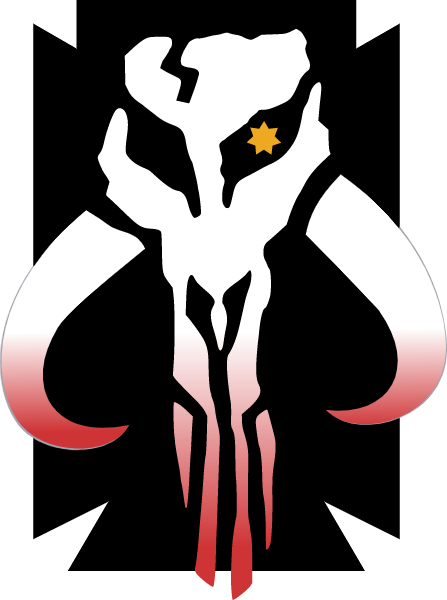 MandalMotors.  MandalMotors. A largely neutral company, MandalMotors was a driving force behind the economy of Mandalore, and sold its many products to any interested party willing to pay the necessary credits. Mandalorian police units took to the company's Pursuer-class enforcement ships, while the radical Mandalorian Death Watch group were known to make use of Kom'rk-class fighter/transports. When Mandalore the Resurrector came to power late in the Clone Wars, the Mandalore and his army seized MandalMotors' facilities solely for use by the Confederacy of Independent Systems, with whom he had aligned the Mandalorians against the Galactic Republic in their galaxy-spanning war. Under the Galactic Empire that was born from the Republic, MandalMotors came under the sway of an Imperial Advisor forcefully placed on the company's board, and produced dungeon ships for the galactic regime. After the Empire fell, MandalMotors became an ally of the New Republic, supplying several member worlds with military craft. When a lode of the precious and incredibly resistant iron ore known as beskar was found on Mandalore in the aftermath of the Yuuzhan Vong War, MandalMotors' work with the rare metal became the catalyst that elevated the Mandalorian world into a state of economic resurgence. History General Gustav Zenlav founded MandalMotors several hundred years before the Battle of Yavin. The company created numerous starships including the Pursuer-class enforcement ship, one of which would come into the ownership of the famed bounty hunter Boba Fett and eventually be known as Slave II. They also manufactured the StarViper-class attack platform, one of which would become Prince Xizor's Virago. During the Clone Wars, Mandalore the Resurrector and his new army of Mandalorian Protectors took control of the MandalMotors facilities for use by the Confederacy of Independent Systems, with which Mandalore was then aligned. Under the auspices of the Galactic Empire, MandalMotors was not allowed to do business until an Imperial "advisor" was placed on the company's board of directors, although this did not stop the sale of weapons to Tyber Zann's criminal organization. Following the Battle of Endor, this "advisor" was ousted in favor of support for the New Republic. During the Battle of Mandalore, in the midst of the Yuuzhan Vong War, MandalMotors' hundred-meter tower sustained heavy damage, but remained standing in spite of it. By the time of the Second Galactic Civil War, the company was headed by Jir Yomaget and had donated MandalMotors Hall, a communal building where clan chieftains could gather to discuss Mandalorian politics and matters of importance, occasionally with the Mand'alor, to the community of Keldabe. After the discovery of a new vein of beskar ore outside the settlement of Enceri, production began on two new beskar-reinforced designs, the Bes'uliik-class assault starfighter and the Tra'kad-class assault vessel. With the arrival of the UGC, MandalMotors was thought to be out of business, as the Galactiques had their own technology and hardware and took no interest in Mandalorian hardware; Also, the megaannum of the Forgotten Times had lead MandalMotors to deteriorate to levels that were thought to be unrecoverable. It came as a slight surprise that the UGC dumped billions of credits to tear down and completely rebuild the factories and warehouses MandalMotors needed, and rebuild the freighter fleet needed to support the company, and despite this hasn't demanded any products from MandalMotors- The company pays a fair service to the enormous loans, but otherwise hasn't been used by the UGC to project their power, it's merely being used to rebuild the Mandalorians themselves. The terms of the loan that rebuilt MandalMotors forbids the company from producing armor or personal weapons, and can in fact only produce vehicle-mounted weapons, but it is not against the terms to produce armed vehicles, and the REF has been encourage them to produce more armed ground warfare platfroms, a fact that has alarmed most other factions with the question about why the Mandalorians need "more" armored vehicles in a galaxy that's generally abandoned them, The company has been producing GR-75 Medium Transports, Academy-Class Freighter/ACADEMY-Class Frigates (primarily in the freighter configuration), and ACCLAMATOR-Class Command Ships in conjunction with Geh 'Dia Heavy Industries. MandalMotors is a common retirement option for Mandalorians that are either too old or too injured to continue fighting directly, and for those who's ability or temperament makes training future warriors a non-option. Size And Orientation: Super Agency (200) Features: None (0) | Cheap Gear (2) | Ammunition (2) | None (0). | Fleet Vehicles (10) | Basic Service (2) | Urban (5) | Major Strike Force (50) | Major Force (70) Government (10) Nickels and Dimes (5) | Rigid Laws (0) | Lax (5) | None (0) | Good Connections (10) | Known (3) | Good (20) | | |||||||||||||||||||||||||||||||||||||||||||||||||||||||||||||||||||||||||||||||||||||||||||||||||||||||||||||||||||||||||||||||||||||||||||||||||||||||||||||||||||||||||||||||||||||||||||||||||||||||||||||||||||||||||||||||||||||||||||||||||||||||||||||||||||||||||||||||||||||||||||||||||||||||||||||||||||||||||||||||||
